
UNMANNED INSPECTION FROM AIR, SEA AND LAND INSIDE SYDNEY WATER

WATER | SEWER | ELECTRICITY | GAS | NBN Engineering, Construction & Maintenance www.utilitymagazine.com.au Issue #9, February 2016
DATA BIGGER BIG GETS OLD SEWERS MAKING NEW AGAIN
Andrew Gaston Project Manager
On site at the Cranbourne Racecourse Recycled Water Tank Project (LD&C Joint Venture)
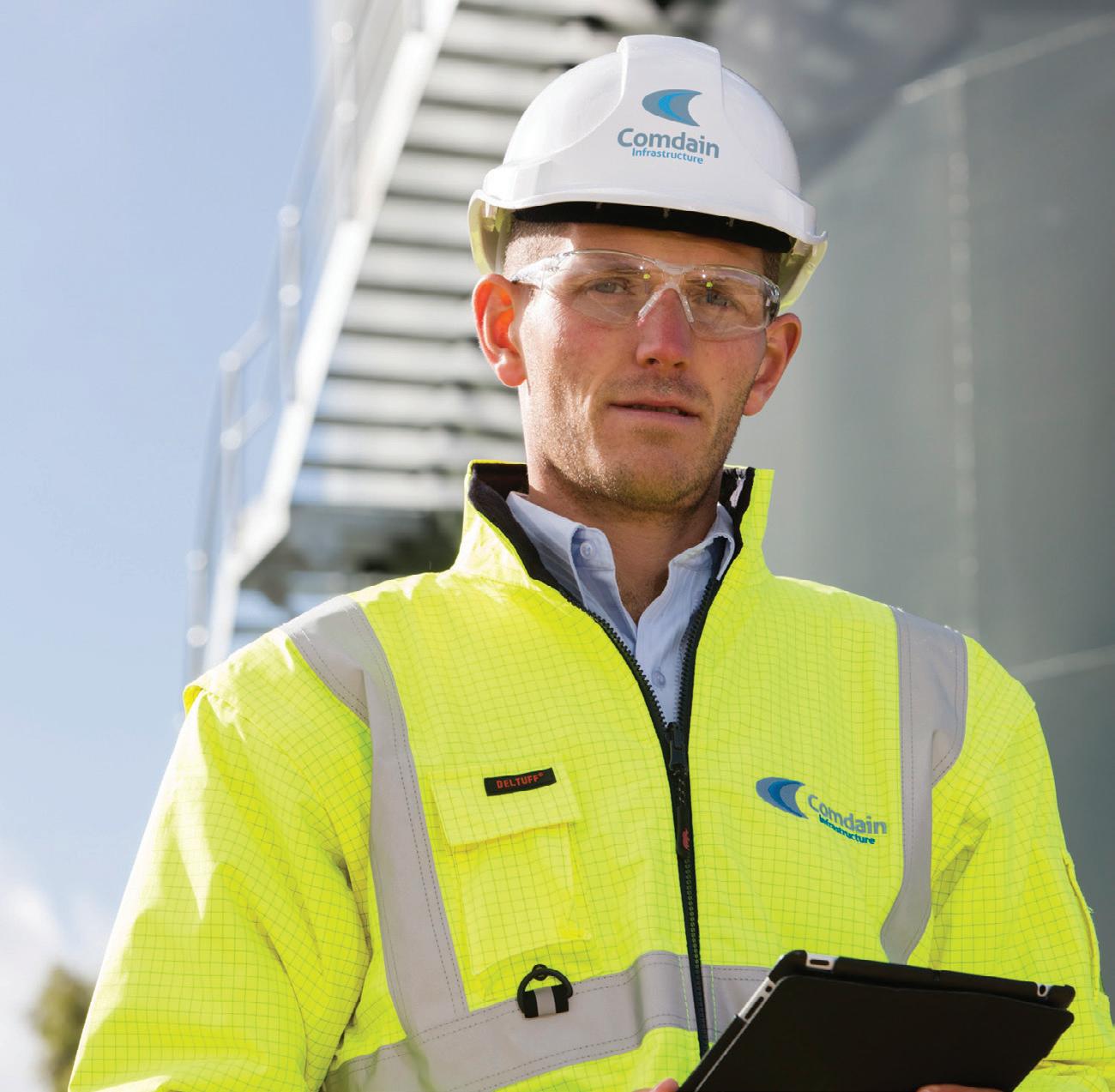
Andrew is one of Comdain’s 70 full time, qualified and experienced Project Managers / Engineers and is indicative of the innovative, dynamic and passionate sector specialists delivering projects for our clients.
Comdain’s 50 years experience provides an in depth understanding of what it takes to be industry leaders in project delivery. Our project management professionals are supported by highly functional delivery teams, systems, project controls and governance - a high performance environment driving high performance results.
Watch Andrew’s 10ML tank being constructed here:

Doers,
Delivery
Intelligent
Dependable
www.comdaininfrastructure.com.au/media/videos






MFROM THE EDITOR
any of you will be picking up this issue, refreshed from summer holidays and ready to hit the ground running in 2016.
Ivanhoe North VIC 3079
P: (03) 9440 5721
F: (03) 8456 6720
monkeymedia.com.au
info@monkeymedia.com.au
utilitymagazine.com.au
info@utilitymagazine.com.au
After another big year for Utility, in which we continued to grow our circulation, recognition and reach within the Australian utilities industries, I’m feeling the same way. The latter half of 2015 was a busy time for myself and the Utility team – we travelled to a number of conferences, and had the opportunity to connect with and learn from industry experts. 2016 will be all about putting some of what we have learned into practice.
One conference that stands out in mind is Australian Utility Week, which was held in November in Sydney. This conference brings together senior executives in the industry to discuss some of the critical challenges we face, with emphasis on the inherent opportunities they also provide.
As many of us grapple with the concept of building the digital utility, and navigate how to do this efficiently and effectively, the event provided a welcome opportunity for delegates to share information on how they are adjusting their strategies in these transformative times.
Going hand-in-hand with digitising our utilities is the topic of big data. With the advent of metering technology, utilities have access to more customer data than ever before. As we move past the ‘wow!’ of having this glut of information at our disposal, we’re moving into the logical next phase of ‘what now?’
Increasingly, utilities are considering how their analysis of data can be more sophisticated, more streamlined and better managed for optimal outcomes for the business and the customer. Our feature on big data in this issue covers all of these themes – turn to page 18 to read more.
Drones, otherwise known as unmanned aerial vehicles (UAVs), also continue to captivate the utilities industries, with more and more utilities investigating the potential applications of this technology within their day-today operations. In this issue, we take a closer look at how several utilities around the country are using UAVs. We also look at the latest developments in embedded networks, Tesla’s push to distribute its batteries down under, and provide insights into some impressive sewer rehabilitation projects which have breathed life into some of our oldest infrastructure.
As we leave the calm of January behind and get ready to throw ourselves into another year, I’m pleased to be able to tell you that events will continue to be a focus for Utility in 2016. We will have a presence at a number of events throughout the year, including OzWater, WIOA’s regional water events, the Energy Storage Council 2016 Conference and the Locate16 Conference.
I look forward to catching up with as many of you as possible at these events throughout 2016.
Chris Bland Publisher and Editor February 2016 ISSUE 9 Publisher and Editor Chris Bland Managing Editor Laura Harvey Associate Editors Michelle Goldsmith Emily Thomas Journalist Jessica Dickers Marketing Director Amanda Kennedy Marketing Consultants Aaron White Jordan Harbinson Graphic Designer Alejandro Molano Creative Director Sandy Noke
Media
Monkey
Enterprises ABN: 36 426 734 954 PO Box 3121
by
image highlights our feature on big data. UNMANNED INSPECTION FROM AIR, SEA AND LAND INSIDE SYDNEY WATER DATA BIGGER BIG GETS OLD SEWERS MAKING NEW AGAIN WATER SEWER ELECTRICITY GAS NBN Engineering, Construction & Maintenance www.utilitymagazine.com.au Issue #9, February 2016 UTILITY MAGAZINE FEBRUARY W austeck.com E info@austeck.com RECEIVER BLOCKAGE
ISSN: 2203-2797 Published
Cover
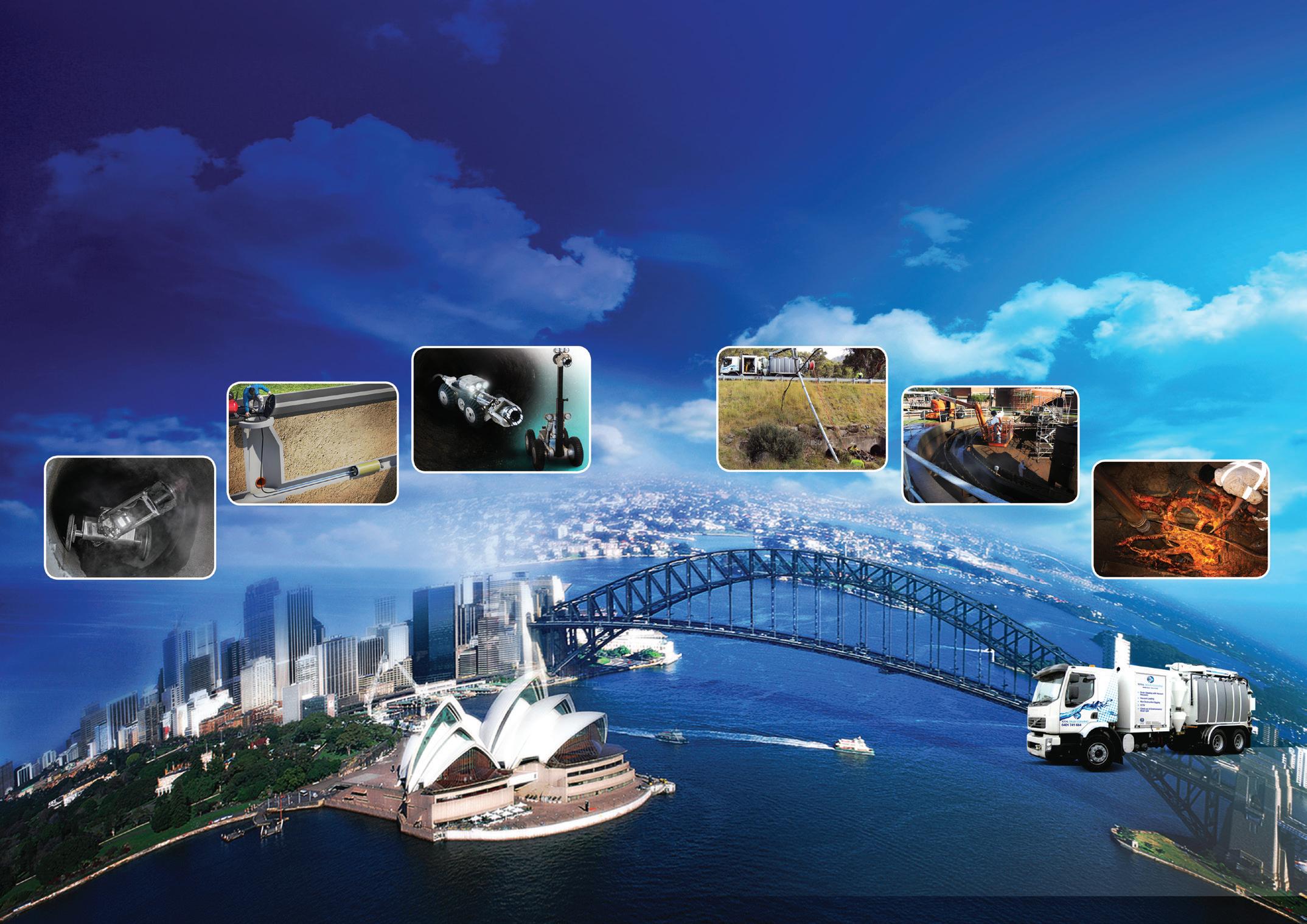


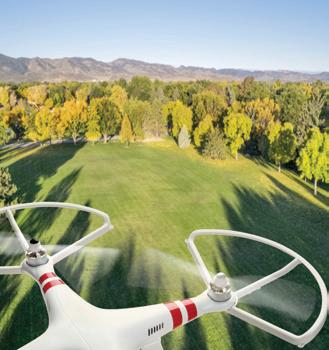
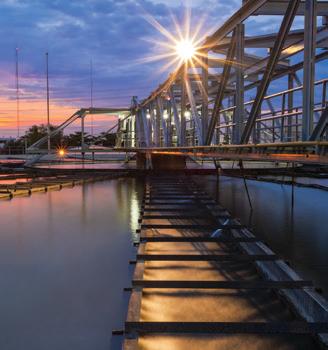
DRONES
DRILLING
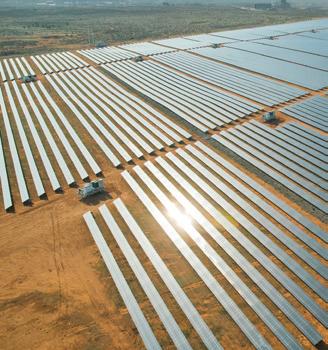


4 18 30 46 86 92
Analysing the data flood: opportunities and challenges in a changing energy market 18 How the big data deluge is reshaping the utilities sector ..... 21 The brave new world of personalised energy 22 Analysing the options: what’s best when it comes to big data? ............................................ 26 TESTING & MEASUREMENT Big data, big opportunity 28 WATER AND WASTEWATER New standard for the water industry 44 Revolutionary breakthrough in sewer odour and corrosion control ........................ 46 Project manager named best in the world 48 Digging deep for Melbourne’s expanding population ................ 52 A luxury most nations cannot afford 54 Clients and manufacturers team up in breakthrough technology....... 55 SOLAR & STORAGE Utility scale solar takes off 86 Tesla teams up with Australian distributors ............... 88 WOMEN IN UTILITIES Felicia Brady 92 94 NBN Making the most of NBN infrastructure 94
BIG DATA
Drones take flight: from fad to powerhouse 30 Turning an industry on its head ........................................ 35 Changing skies: new regulations for drone operators 36
Switching industries: from great heights to underground networks............... 38 CONTENTS
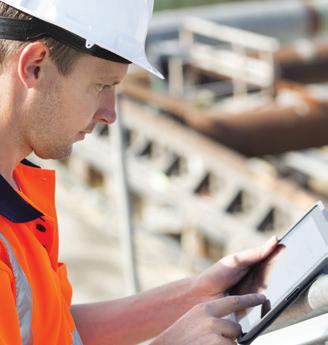

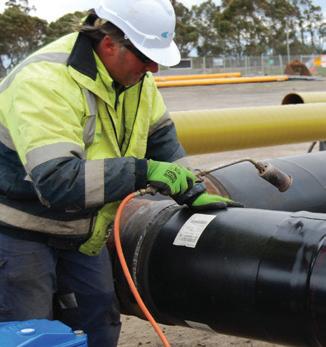
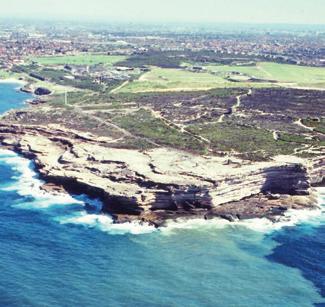
ISSUE 9 5 62 70 82 PROJECTS Sharing the load for the future of Donnybrook 82 SUSTAINABILITY Concrete cutting made sustainable .................................. 85 UTILITY LOCATION Eliminating inconsistencies in subsurface utility information 58 Are we leaving our underground assets vulnerable? ...................... 62 Changes to Telstra Accreditation: what does it mean for locators? 64 The Google Earth of subsurface infrastructure............................... 66 SWITCHGEAR Ensuring personnel and asset protection 68 EMBEDDED NETWORKS Are utilities ready to embrace the opportunities? 70 SEWER REHAB Relining a critical sewer main ... 74 Spiral solution for Melbourne’s North West Sewer 78 SL-RAT sounds out a bright future ............................... 81 Sydney Water ............................... 40 Sydney Water is Australia’s largest water and wastewater service provider and it is owned by the people of NSW. In each issue Editor’s welcome .................................................. 1 A word from the ENA .......................................... 6 A word from WSAA .............................................. 8 News briefs ........................................................... 8 Advertisers’ index ............................................ 100 Editorial schedule ............................................ 100 UTILITY IN PROFILE Utility magazine is bringing together experts on various fields to answer all your questions 98 40
A WORD FROM THE ENA
JOHN BRADLEY CHIEF EXECUTIVE OFFICER – ENERGY NETWORKS ASSOCIATION
When Marty McFly travelled Back to the Future to 21 October 2015, he was greeted by flying cars, wearable technology and hovering skateboards.
While we may lament the absence of flying cars in our day-to-day lives, there are some things the creators of Back to the Future did get right – tablet computing, video conferencing, wearable technology, even a form of hoverboard.
However, Marty McFly’s creators did not imagine the revolution in the electricity system that would be occurring in 2015. Electricity systems around the world – and especially in Australia – are experiencing a scale of change perhaps not seen since the days of Thomas Edison and Nikola Tesla in the 1880s.
Australia’s electricity networks and the CSIRO have partnered to undertake the Electricity Network Transformation Roadmap project – an effort to achieve positive outcomes for Australian electricity consumers over a longer timeframe than Marty McFly might have imagined.
In December, the ENA and CSIRO launched the Roadmap’s Interim Report, addressing the early learnings of a work program focused on future customer services, new business models, distributed energy resources, pricing and incentives. It has included over 200 stakeholders involved in workshops, webinars and briefings, and outlines future stages of the program in 2016.
An important part of the Roadmap that has been completed in this first phase is a ‘refresh’ of the CSIRO’s longterm projections in Future Grid Forum scenarios. These four diverse scenarios captured the ‘mega-shifts’ reshaping the electricity system as trends in technology, consumer choices,
government policy and commercial responses influence outcomes for consumers.
The four scenarios that were explored in detail were:
• Set and Forget – where consumers rely on utilities
• Rise of the Prosumer – where consumers actively design or customise solutions
• Leaving the Grid – where consumers disconnect from the grid
• Renewables Thrive – where storage play a large part in the entire electricity system.
The diversity of these scenarios reflects the key fact that our electricity future will be most fundamentally influenced – not by governments, energy companies or institutions –but by end users.
Investment decision-making is being transferred from the hands of a few utility companies to millions of end users. Depending on the scenario out to 2050, between 23 and 41 per cent of all electricity system expenditure ($224 to $469billion) is made directly by consumers or their agents. This highlights the role of the forthcoming ENA/CSIRO Network Transformation Roadmap to position the electricity system to be resilient to, and to leverage, diverse futures – including how key factors play out, such as the role of decentralised energy, the extent of carbon abatement or technology cost trends.
Since the 2013 Future Grid Forum, solar and storage costs have become more competitive. Solar (PV systems) and battery storage costs are already around 20 per cent cheaper than it was expected they would be in 2013. Battery storage costs are expected to fall by approximately two-thirds in the next ten years, while solar PV costs

are expected to fall by about one-third over the same time frame. This sees stronger incentives to take up solar, and creates the potential for increased cross-subsidies among customers if the cost-reflectivity of network tariffs is not addressed.
However, falling storage costs can improve the competitiveness of grid-delivered electricity, contributing to lower bills for grid-connected customers by enabling peak demand reduction on electricity networks. This will require enabling policy and regulatory frameworks.
Distributed energy resources create opportunities for better grid management, as well as a range of technical and operational challenges to ensuring power quality, reliability and security of supply for all customers. The opportunities can be realised but will require changes to regulatory frameworks, industry standards and technology.
As in the 2013 forecasts, each of the four plausible 2050 scenarios anticipates the need for enabling electricity networks, with all scenarios within 10 per cent of $315billion. However, the technologies and role of the network could vary significantly in an increasingly ‘twoway’ network, with some scenarios seeing up to 45 per cent of electricity from on-site generation. The business model of the network could evolve fundamentally to a ‘platform provider’, enabling new energy services and uses, rather than a transport service.
The updated analysis confirms the electricity sector could play a significant role in national efforts to reduce greenhouse gas emissions. By 2030, the four scenarios project electricity sector abatement of 29 to 51 per cent by 2030 compared to 2005. These scenarios all benefit from
6
UAVs
right place, right time
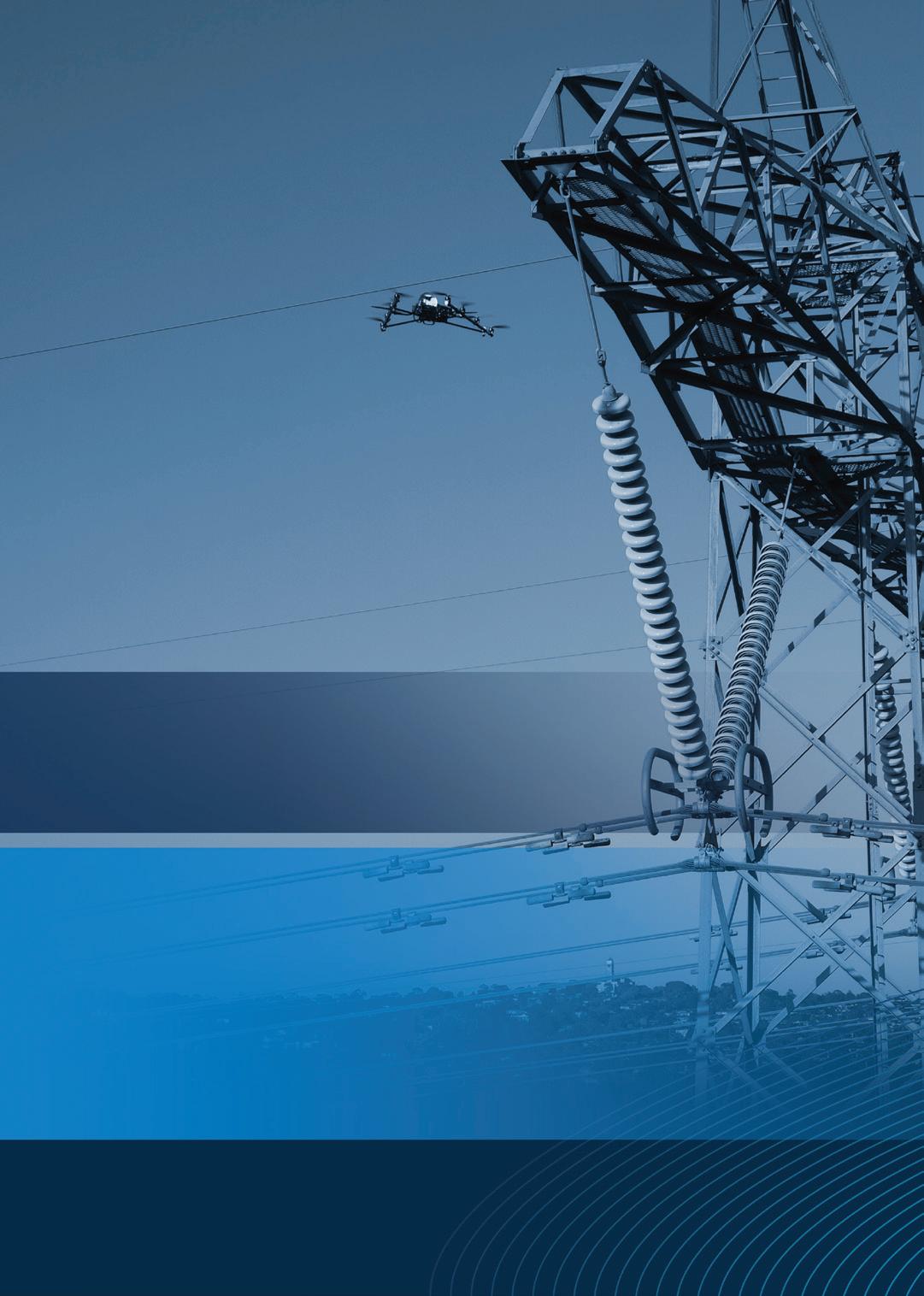

Leaders in Asset Inspection Services
Electricity | Water | Gas
Supported by 15 qualified operators, 17 UAVs and our state of the art mobility and works management systems, Select Solutions’ offers a range of services using UAVs across electricity, water and gas industries.
• Distribution pole top inspection
• Transmission tower inspection
• Thermal imaging and inspection of assets
• Above ground infrastructure and facilities inspection – dams, tanks, wind turbines
• Telecommunication tower inspection
For more information speak to an Asset Inspection Specialist on 0408 963 425 or visit our website www.select-solutions.com. au
Your partner in Metering and Asset Intelligence

A WORD FROM THE ENA
distributed and large-scale renewables and the use of storage to support the reliability of renewables. In one scenario (Renewables Thrive), the projected abatement in the electricity sector is 53 per cent below 2010 levels by 2030 and 99 per cent by 2050. In this scenario, networks are critical to connecting significant large-scale renewables and about 73 per cent of electricity is provided from central generation in 2050.
The outlook for long-term electricity customer bills has improved since the
Continued from page 6
2013 Future Grid Forum modelling. CSIRO forecasts that electricity retail bill increases will be smaller than previously forecast and are expected to remain the same share of average household expenditure, approximately 2-3 per cent, as they are today.
The scenarios tell us that Australia faces a broad spectrum of potential energy futures that vary greatly in the adoption of new technology, the mode of customer engagement, and the role of the electricity network.
While many aspects of the energy
A WORD FROM WSAA
In Australia, substantial investment has been made in urban water research. However, as many in the industry know, accessing this growing bank of information and knowledge remains a challenge as it is spread across many websites, organisations and libraries. Knowing what research is out there is only half the battle – then there is the process of filtering out what is irrelevant and non-reputable.
In 2013, a coalition of Australian water research and development organisations identified the need for a better way of accessing this knowledge, and the idea for Water Research Access Portal, or WRAP, was born.
Launched recently at the International Water Reuse and Desalination Symposium in Brisbane, WRAP is an online database of reputable Australian urban water research. The key aim of WRAP (www.waterportal.com.au) is to make this research readily accessible to the water industry. It does this primarily via a refined search functionality built on themes of national importance. WRAP also has the ability to store research, ensuring there is no loss of knowledge from the sector as a number of limited life projects and organisations finish up funding contracts.
WRAP has been developed to be:
• Reputable: only credible content from respected organisations.
• Encompassing: all the main sources of urban water research in Australia.
• Convenient: single gateway to resources.
• Selective and targeted: more relevant and targeted search results than Google.
• Searchable: by keywords and themes
So what types of research are available on WRAP? Of course, there is the published primary research, such as publications, research reports and papers. However a key aim of WRAP is also to collate the plethora of useful grey literature out there – such as case studies, conference papers, news articles, project evaluations – which are often
future cannot be planned, it is also clear that an efficient, enabling response is required from service providers, policymakers and regulators.
The Roadmap will seek to ensure Australia’s energy system gives its greatest priority to diverse and evolving customer needs.
John Bradley Chief Executive Officer Energy Networks Association

of equal importance when trying to apply research to your project. We’ve also teamed up with the Australian National Data Service (ANDS), to ensure we capture useful urban water research datasets while not duplicating their efforts. Key to the success of WRAP is the credibility of the resources available. We’ve scoured Australia to find the key players in urban water research, and the resources span research organisations, universities, utilities, peak bodies and government entities.
WHY SHOULD I USE WRAP?
There are a number of benefits to users of WRAP:
• Save time: WRAP is easy to use and we’ve verified the resources are reputable already
• Avoid duplication: discover what other research has been undertaken before embarking on your own
• Connect: find out who is a leader in research for a particular theme to inform collaborative efforts
• Learn: browse our themes of national significance and understand key issues facing the urban water sector. WRAP is a collaborative effort by a number of Australian research centres, government agencies, and industry. WRAP is managed by the Water Services Association of Australia.
8
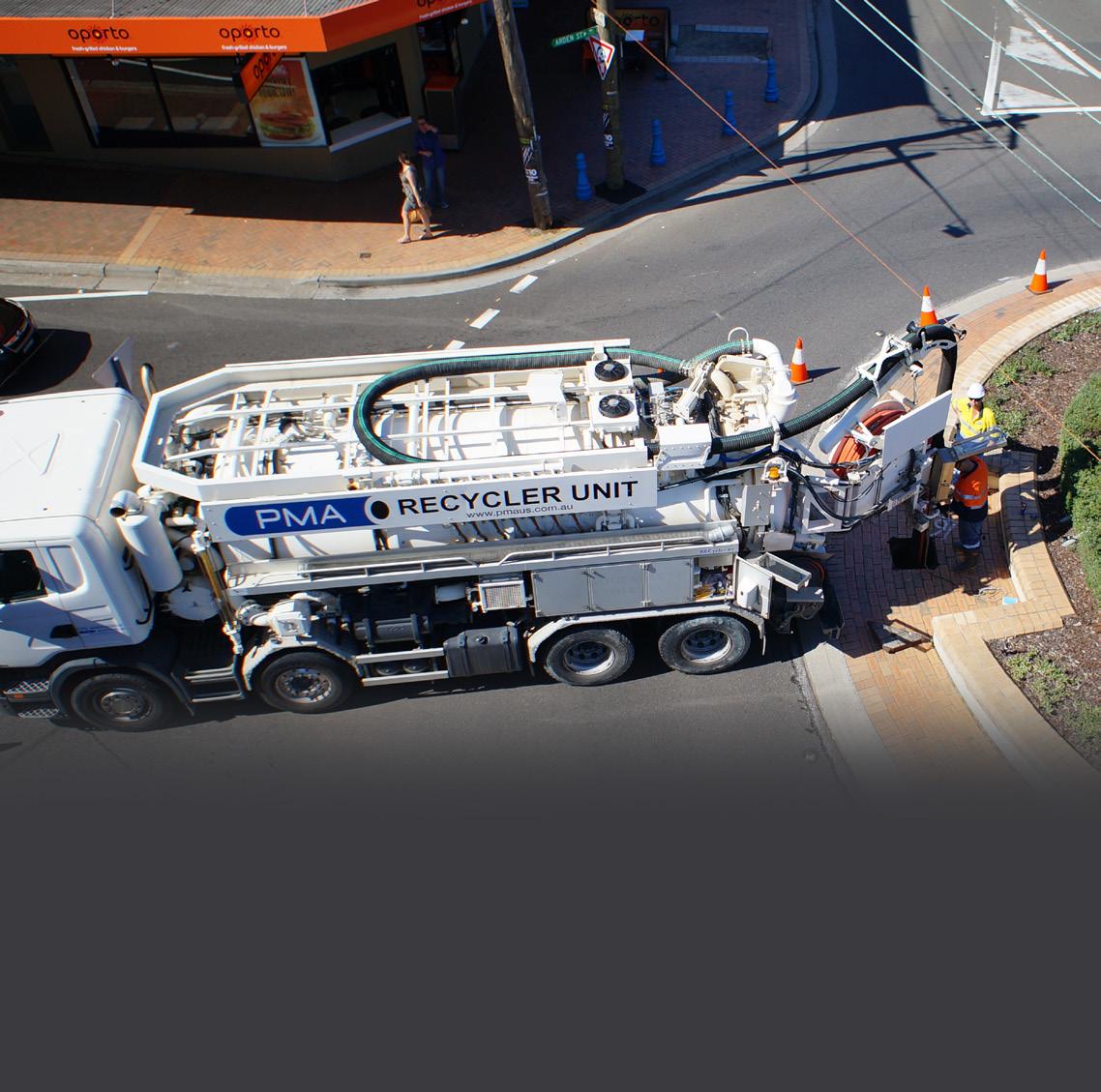
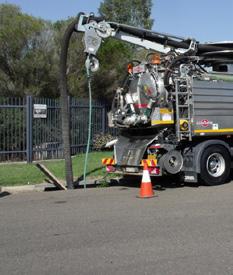

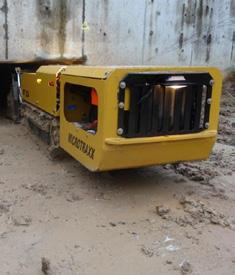
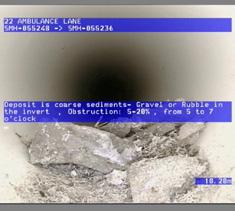
Contact us today for a quote NSW 02 9605 4723 QLD 07 5573 2694 | www.pmaus.com.au
MICROTRAXX CCTV
Pipe Management Australia is a professional, capable contractor preferred on many of Australia’s largest construction and resource projects HYDRO EXCAVATION
PIPE INSPECTIONS Utility Maintenance Contractors DRAIN MAINTENANCE
ROCKHAMPTON COUNCIL CUTS CARBON FOOTPRINT
AND SLASHES COSTS OF WASTEWATER TREATMENT
Australian councils are facing wastewater challenges as they have to manage treatment costs and comply with discharge limits, while treating increasing amounts of wastewater caused by population growth.
The South Rockhampton Sewage Treatment Plant (QLD) now serves more than 19,000 people, and with the price of electricity rising more than 20 per cent since July 2013, it’s becoming difficult to remain under the effluent limit of 5-10 milligrams per litre for total nitrogen.
However, thanks to an upgrade of this treatment plant, which includes using a diffuser system considered one of the most efficient in the world, the Rockhampton Regional Council has achieved a total nitrogen limit as low as 3.1 milligrams per litre, while aiming to reduce electricity costs by up to 20 per cent.
“More than half of the energy used in a treatment plant such as ours is consumed in the biological/aeration process. This is why we have upgraded the plant by retrofitting it with the
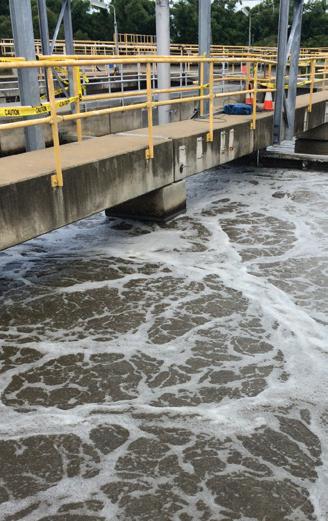
highly-efficient aeration system of AEROSTRIP diffusers,” Rockhampton Regional Councillor Greg Belz said.
“We chose Hydroflux HUBER to install 80 of these four-metre AEROSTRIPS not only because they will cut our energy use while reducing our carbon footprint, but also
because Hydroflux HUBER provided performance guarantees for the installation. These guarantees, which have been met and verified, included oxygen transfer rates,” Mr Belz said.
Director of Hydroflux HUBER, Luis Bastos, said AEROSTRIPS are easy to retrofit into existing sites and are popular because of the materials used in their construction.
“The main benefits of the AEROSTRIP diffusers are the significant power savings they achieve by the high oxygen transfer rate 4.0-5.0 kgO2/kW and the robustness of the membrane, which has a life of greater than 12 years,” Mr Bastos said.
“All of this is without fouling or loss of pressure. Proof of the popularity of this system of diffusers can be found in the fact that AEROSTRIPS have been installed at over 2,000 sites worldwide.”
Mr Bastos said AEROSTRIPS also deliver cost savings in electricity and lower maintenance costs. The South Rockhampton Sewage Treatment Plant is the fifth installation of AEROSTRIPS in Queensland.
UTILITY PARTNERS WITH GITA
The Geospatial Information and Technology Association of Australia and New Zealand (GITA) has endorsed Utility magazine as an official media partner of the association.
Geographical Information Systems are playing an increasing role in utility asset management and are a technology that has received regular coverage in the magazine. GITA recognised the role that Utility has played in communicating with and engaging the decision-makers and leaders in the utility industry, and see the partnership as an opportunity to create better communication between
GITA members and the end users in utilities.
Utility has already been endorsed as the official media partner of the Water Industry Operators Association (WIOA) for 2016, and has a close working relationship with many other key industry bodies.
Commenting on the new partnership, Utility publisher and editor Chris Bland said, “Since its launch, Utility has bucked the trend in the publishing industry, growing rapidly and establishing a loyal following within the utilities industries we represent.
“This new partnership is further vindication of our strategy of focusing
on quality content and reaching the right people. There are some exciting things happening in the GIS space and we look forward to working with GITA to ensure these reach a wider audience.”
GITA’s President, Wanda Skerrett added, “We are very pleased to have formally engaged with Utility and are confident that the close alignment of our respective focus in the utility sector will be invaluable to ensuring GITA delivers targeted information in accordance with its aims. Considering the substance of, and growth in, Utility, our decision to partner was an easy one.”
10 NEWS
D9X13 NAVIGATOR® S3.
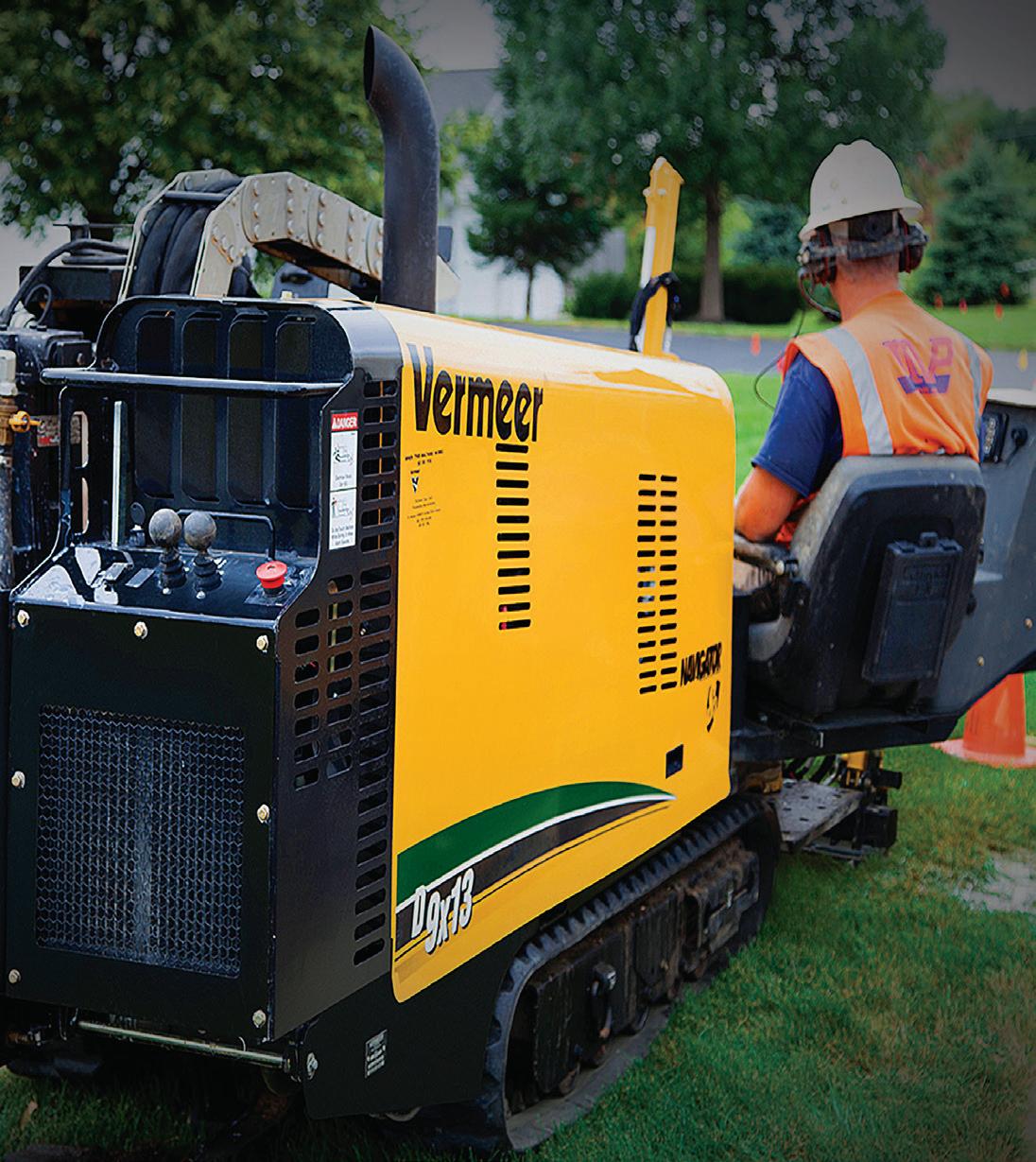
Featuring a 26% increase in carriage speed, a 37% increase in ground drive speed, and a narrow profile to get to the most confined job sites, the Series 3 D9x13 Navigator helps you fit more metres into to the working day.
Combined with extendable track width for side-hill stability, a durable one-piece hinged hood, and Vermeer’s legendary build quality and unmatched local dealer support, you’ve got the ideal partner for today’s fibre installation environment.

Same familiar controls More metres in the ground Gets there faster Access all areas Vermeer and the Vermeer logo are trademarks of Vermeer Manufacturing Company in the United States and / or other countries. © 2014 Vermeer Corporation. All Rights Reserved.
VermeerAustralia
D9X13 NAVIGATOR ® S3. GET EQUIPPED. /
WWW.VERMEER.COM.AU | 1300 VERMEER
VERMEER’S D9X13 NAVIGATOR® SERIES 3
WWW.VERMEERWA.COM.AU | 1800 195 558 (WA & NT)
THE NEW LEADER IN LEAD-INS GET THROUGH MORE SHOTS EVERY DAY WITH THE NEW VERMEER
INTRODUCING THE WATER REPORT
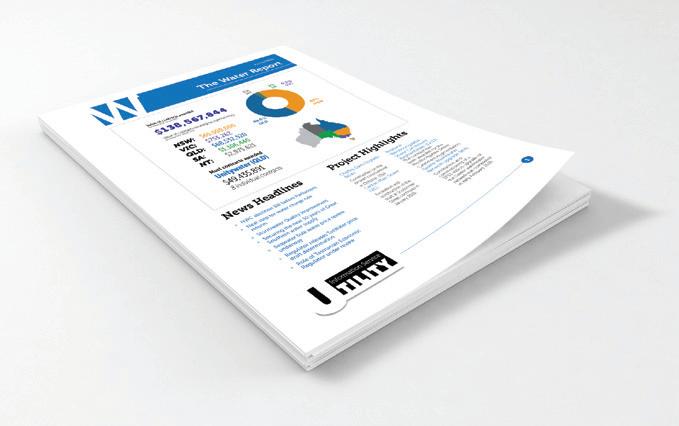
In 2016 the Utility team launches The Water Report, an indispensable new resource for anyone active in the water industry.
Each month, The Water Report is delivered directly to subscribers inboxes to ensure you’re up to date with the latest developments in the industry. The Water Report is built on three key pillars: policy, projects and procurement.
Projects: Each issue profiles the major water industry projects across Australia, providing up-to-date information on recent milestones and current works. The Water Report collates key facts and statistics for each featured project, such as timelines, budgets and major contractors.
Policy: Enjoy detailed policy coverage, ensuring that you stay up to
speed with the latest policy changes or proposals. We also track the industry’s response to major policy shifts, providing a big picture view of the impact of policy change.
Procurement: Need to know who is winning contracts for water and sewer infrastructure works across Australia? We profile the major water and sewer industry contracts that are awarded each month, providing you with valuable insight into the utilities awarding major contracts, the companies winning these contracts and the dollar value of contracts awarded each month.
Each issue of The Water Report is researched and written by experienced industry journalists.
For a low monthly cost with no lock in contracts, you receive vital industry information about policy, projects and contracts direct to your inbox.
For more information and a free trial subscription, head to www.waterreport.com.au.
NEW POWERLINE TECHNOLOGY TO PROTECT AGAINST BUSHFIRES
The Victorian Government has released regulations that require energy companies to implement new powerline technology that helps prevent bushfires.
Under the proposed Electricity Safety (Bushfire Mitigation) Regulations, all electricity distributors across the state will have to install Rapid Earth Fault Current Limiter (REFCL) technology across their networks.
The new world-first technology stops an electrical current within milliseconds of a power line coming into contact with the ground or vegetation –effectively stopping a fault before it can start a fire.
The Rapid Earth Fault Current Limiter (REFCL) technology was
developed in Victoria in response to the recommendations of the 2009 Victorian Bushfires Royal Commission, intended to make powerlines safer in bushfire risk areas.
Final testing in Kilmore in October 2015 found the REFCL technology reduces the likelihood of a bushfire starting from a high voltage powerline fault by ten times.
This cutting edge technology has undergone more than two thousand tests, undertaken with local electricity companies and international technology experts.
In areas of acute bushfire risk, electricity distribution businesses will also be required to progressively replace their power lines by
insulating the cables or burying them underground.
The Victorian Government’s new higher safety standards aim to halve the risk of powerline-ignited bushfires across regional Victoria.
Minister for Energy and Resources, Lily D’Ambrosio, said, “These new safety standards and world-leading technology will help make Victorian communities safer from bushfires and increase the reliability of our state’s power supply.
“We are committed to doing everything we can to improve safety standards across Victoria’s power network to help protect Victorians from the risk of bushfires.”
12
NEWS

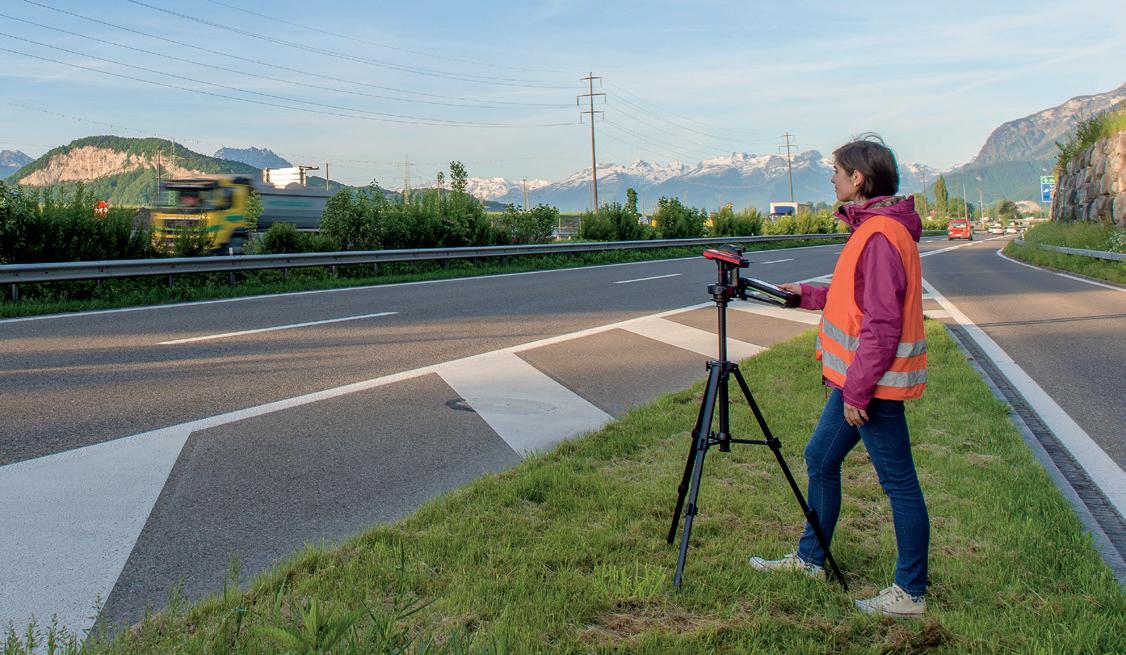
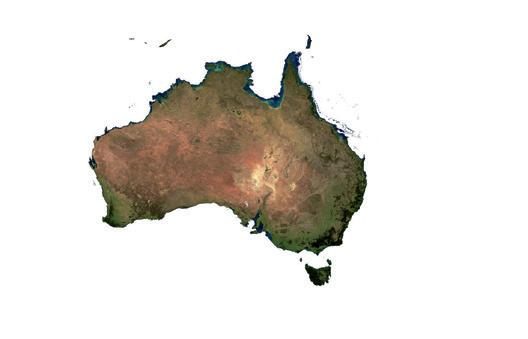





































OBITUARY: GUS EDWIN GEORGE MALZAHN
He launched an entire industry and it is with sadness that we report utility pioneer and Ditch Witch founder, Gus Edwin George Malzahn, passed away on 11 December aged 94.
Gus Malzahn, also known as Ed, can be credited with creating the first mechanical trenching machine, a product that revolutionised the utility industry.
Ed was an inventor, business owner and manager whose groundbreaking idea changed the way the world’s utility infrastructure is constructed and maintained.
Born in 1921 in Oklahoma, Ed was always creating and inventing. As a teenager he built a remote control spotlight that resulted in a visit from the FBI after he was caught
“spotlighting” aircrafts.
After high school, Ed completed a degree in mechanical engineering at Oklahoma State University, where he met his wife, Mary. He continued his innovative ways and in 1949, developed the world’s first service line trencher, the Ditch Witch Model DWP Service Line Trencher.
The idea came after he noticed workmen digging out trenches with picks and shovels and laying utility lines by hand. So Ed set out to develop an easier way.
The machine shop he operated with his father was reopened as Charles Machine Works, and since then the company has produced and sold more than half of the world’s trenching machines.
In 2002, the American Society of
Mechanical Engineers named his DWP a national historic mechanical engineering landmark, and Fortune magazine honoured it as one of the 100 best products manufactured in the United States.
The company Ed built now employs more than 1,500 people and provides products to 195 countries.
His legacy also includes efforts as a civic leader and philanthropist as he volunteered on numerous organisations and boards at the local, state, and national level. Ed was known as a hard-working, generous man who greatly impacted the utility industry and the lives of those closest to him.
Ed is survived by three children, Don, Pam and Meleasa, nine grandchildren, and thirteen great-grandchildren.
“BUT IT’S JUST A LITTLE BIT OF WATER AND CLAY MIXED TOGETHER...”
Major excavations during road building and tunnelling pose many problems, with managing wastewater a significant problem that needs to be addressed.
Although it can look like it’s just a little bit of water and clay mixed together, it is what can’t be seen that poses the greatest threat to the environment.
If this is not managed properly it can end up with the Environmental Protection Authority (EPA) wielding their big stick and company-ending headlines appearing in national papers.
Groundwater, bentonite slurries, cement, hydraulic oil, chemical grout spills, drilling rig water and rain are just the beginning of the problems that can occur. Natural geological conditions can also make the groundwater acidic,
sulphate contaminated, and laden with heavy metals like iron and manganese.
Prior land use can cause the ground to be contaminated by fertilisers, pesticides, hydrocarbons, cyanide, arsenic, industrial heavy metals, ammonia, sewage and even radioactivity.
This is a recipe for an environmental disaster just waiting to happen.
Solutions such as using straw bales to filter the solids, or pumping the water through a basic settlement pond prior to discharge into the local waterway will not help to protect the environment, and won’t sit well with expert witnesses if the matter arrives in the courts.
Sales Director at Hydroflux Industrial, Mathew Pugh, says there are better solutions to managing wastewater.
Mr Pugh says contractors must investigate before they excavate and undertake a groundwater assessment. He also suggests assessing the contributions from the construction activities, determining the best place to discharge and define the requirements, as well as investigating the correct treatment plant required.
Treating the wastewater correctly in the first place will cost significantly less than the EPA fines, work disruption, clean-up costs and loss of company reputation that a major pollution incident will certainly cause.
NEWS 14
NEW WATER INFRASTRUCTURE FOR NSW
The Australian Government will deliver $1.7million in funding for seven new water infrastructure projects in NSW.
Minister for Agriculture and Water Resources, Barnaby Joyce, and NSW Minister for Lands and Water, Niall Blair, recently announced the projects, which are part of the fourth phase of the Great Artesian Basin Sustainability Initiative (GABSI).
The seven new projects will deliver important water infrastructure upgrades that will replace inefficient open bore drains with modern piped reticulation systems.
Mr Joyce said, “These projects will see about 41km of open bore drains decommissioned, and 55.6km of new pipe drains installed, as well as replacing seven old bores.
“Even in well–maintained open drains, up to 95 per cent of water can be wasted through evaporation and seepage.
“These infrastructure upgrades are expected to save about 1,646ML of water each year, supporting greater water security and drought resilience for farmers who rely on artesian water.”
Mr Joyce said the Great Artesian Basin is a precious water resource that underpins agricultural productivity, strong communities and a healthy environment. He said it must be managed with long-term vision to ensure it can support positive economic, social and environmental outcomes to benefit future generations.
“The Australian Government has invested over $112million over 15 years to accelerate work to modernise water
infrastructure across the Basin and last year we extended the GABSI program for an additional three years to 2017,” Mr Joyce said.
NSW Minister for Lands and Water, Niall Blair, said he was pleased to have secured funding under Phase Four of the GABSI.
“The Great Artesian Basin lies below 25 per cent of NSW, supporting a population of over 200,000 people, with an estimated 1,400 bores,” said Mr Blair.
“The NSW Government has committed $6million for rehabilitation of artesian bores and this funding from the Australian Government will help replace inefficient open bore drains with efficient piped systems.”
JEMENA BUILDING NEGI PIPELINE
The Northern Territory Government has confirmed that Jemena will build the North East Gas Interconnector (NEGI) pipeline.
After a competitive process, Jemena was awarded the contract to construct the pipeline connecting the northern and eastern gas markets.
The 622km pipeline will cost $800million to construct and the chosen route will run between Tennant Creek in the Northern Territory and Mount Isa in Queensland.
The announcement followed a competitive process seeking private sector proposals for the development, with four proponents reaching the final stage.
The final four companies vying for the proposal were Jemena, APA Group, DDG Operations (DUET) and Pipeline Consortia Partners Australia Pty Limited (China National Petroleum Corporation).
The chosen route was one of two options, with the other proposal
running from Alice Springs, Northern Territory to Moomba, South Australia.
The chosen route will be much cheaper and quicker to construct and doesn’t rely on government funding. It will also provide a better link to Australia’s gas export market.
The pipeline is a significant project for Australia as it connects the ample gas reserves in the Northern Territory to east coast markets which face a supply shortfall in the near future. The project is also expected to stimulate exploration and production of shale gas resources in the Territory, and promote infrastructure and economic development in Australia.
It is estimated the Territory has more than 200 trillion cubic feet of gas –potentially enough to power Australia for more than 200 years.
Northern Territory Chief Minister, Adam Giles, said the reason the northern route proposal from Jemena was chosen was because it offered cheaper tariffs, cheaper gas processing
costs and the option to increase the capacity of the pipeline prior to the laying of the first pipe if market conditions support increased capacity.
The Power and Water Corporation (PWC) has signed agreements to supply gas to the NEGI from its contracted suppliers. PWC will use the gas sales agreement to lock-in a guaranteed gas supply for Incitec Pivot for approximately 10 years, from completion of the NEGI.
Construction of the NEGI pipeline will create more than 900 jobs during construction, 600 of which will be for locals, and offer up to 100 contracts for local businesses worth about $112million.
Jemena expects construction of its 14 inch pipeline to be completed by 2018.
NEWS 16

Pipe Bending Machines
Pipe Cu ng & Bevelling Equipment
Clamps - Cage, Chain & Rachet Pigs
Bol ng & Tensioning Tools
End Caps, Chocks & Timber Skids
Pipe Li ing / Lowering
Internal Lineup Clamps / Mandrels
Bending Sets
Roller Cradles
Inspec on & Quality Control Instrumenta on HDPE Welders
Pipe Cu ng & Beveling Machines
Flange Facing Machines
Tracked Tack, Welding & Blast Rigs
more information please call: PSSS on 07 3200 4999 or Email: sales@psssa.com.au
Michael Lee
michael@psssa.com.au
call John Wilton
0400 794 097
john@psssa.com.au
of our ‘Go To’ status and ‘Can Do’ attitude.
“Go To” Supplier for all things Pipeline
For
Call
on 0418 695 779 Email:
Or
on
Email:
Proud
www.psssa.com.au Your
representing
Proudly

Analysing the data flood: OPPORTUNITIES & CHALLENGES IN A CHANGING ENERGY MARKET
by Matt Nidd, Utilities Principal, DB Results
18 BIG DATA

As big data plays an increasingly important role in how utilities operate and plan for the future, Matt Nidd considers some of the unique technologies in the market that can help utilities get the most out of their data.
INDUSTRY CONTEXT
A number of relatively recent or impending changes in the electricity sector are tightening the ability of distribution network owners to recover regulated revenue through traditional methods such as asset enhancement and replacement. These changes include:
• The inception of the National Electricity Customer Framework, driving a requirement to be customer rather than premise centric. Customers must now, more than ever, remain informed of potential disruptions in energy supply in a manner that recognises them and their previous interactions with the organisation.
• Recent reductions in energy consumption (excluding the last Victorian winter!), creating a perceived overinvestment in the network.
• The pending introduction of the range of Power of Choice initiatives from the AEMC, removing the guaranteed ownership (and therefore return) on mass market meters, and necessitating the decision on whether to compete with agile new entrants to the metering market.
THE OPPORTUNITY LANDSCAPE
These disruptive changes obviously assume no compromises around quality of supply or safety, making maximising the useful life of an asset more important than ever. Simply sustaining a reliable network is no longer good enough.
Further up the value chain, Power of Choice creates a new call-to-action and ongoing customer conversation for retailers that can only be fully taken advantage of if the intersection of customer value, location and appropriate bundled offers are fully understood.
Distribution businesses, information and communications technology professionals, and operational technology managers must consider how to respond to the above changes in the context of the data available from their existing transactional systems.
The proliferation of smart meters in Victoria has provided a unique opportunity to extend the understanding of both retail and distribution participants when it comes to customer behaviour and asset utilisation.
The new data that will become available with the
retailer-led Power of Choice rollout is by no means the only source of insight into customer behaviour. There remains many other sources of data that, when effectively overlaid, can provide valuable insights.
BUSINESS INSIGHTS FROM BIG DATA
In assessing opportunities to provide actionable business insights, decision-makers must balance the time it will take to implement a long run information management strategy (IMS) against often uncertain business requirements, and the time to value ratio that this approach involves.
Establishment of an information strategy, procurement of the necessary data storage and analytics capabilities, and integration of the solution and associated governance framework is likely to take upwards of two years and many millions of dollars before the first use cases are enabled. Often the business will have grown impatient over this period and sought the data via alternative means (working outside of the information strategy and probably information and communications technology!), or the requirement will have changed, materially rendering the first use case delivery redundant.
Due to the relatively early stage in the technology lifecycles of the capabilities mentioned here, two years is a very long time, and software and hardware may have been partially or completely superseded during the life of the program. All of these factors must be considered carefully to ensure a sustainable business case and realisation of business outcomes.
A mitigation for the potential pitfalls of a long-running IMS implementation is to invest in a ‘two speed’ approach to the delivery of business insights. This involves considering complementary technologies, such as the emerging group of solutions which provide ‘situational insights’ as part of an IMS.
These tools provide relatively rapid implementations through existing, industry-specific use case and out of the box adapters (with a timeline of 6-12 months to value, instead of two years) and fast off-premise deployments. The insights these solutions provide are often based on a combination of subscriptions to existing transactional data services (via an existing service bus) and other operational data sources.
19
BIG DATA

Due to this approach, the insights lend themselves to operational as well as more strategic uses, as they are situational or current, rather than based on very long-term data analysis. With a strong set of guiding principles, the utilisation of these sorts of tools can be complementary (rather than tactical) to the solutions delivered through the longer running implementation approach running in parallel. In fact, some businesses are finding that a second analytics tool is redundant as they learn to fully leverage the capabilities of the situational toolsets and existing use cases.
In developing an IMS, consideration must be given to the range of tools available and the likely lead time the selection of strategic tools will have on the realisation of business outcomes. The selection of tools and the implementation overhead must be weighed up against the regulatory period the value needs to be derived for/from; as well as the business’ ability to endure a long running implementation before initial business outcomes can be realised. Fortunately there are now more options than ever to ensure businesses can leverage their data progressively with innovative approaches to asset and customer management, in line with regulator and customer expectations.
In conclusion, it’s worth reflecting on some exciting use
cases that are currently commercially available, utilising the approaches outlined above.
Distribution
• Predictive analysis utilising power quality data from smart meters or other sensors for:
» Early fault detection
» Theft detection
» Impacts of solar density on network assets.
• Predictive analysis (presented spatially and as potential events) of fire danger to network assets that utilises existing asset information, weather data and historical trends. This is being used to position fault crews strategically on high fire danger days and to inform customers of potential risks to their supply.
Retail
• Analysis of customer value, geographic location (and density) and churn statistics to establish targets for retail Power of Choice bundles, and the appropriate software and meter communications technologies for servicing those customers’ requirements.
BIG DATA 20

HOW THE BIG DATA DELUGE IS RESHAPING THE UTILITIES SECTOR
by Brad Williams, Vice President Industry Strategy, Oracle
The rising tide of data sweeping the utilities sector offers big opportunities for operators, yet many are only just becoming aware of its potential.
The data is being generated on a number of different fronts. Rapid growth in the use of lowcost sensors is allowing operators to gather field information in ways never before possible. Measuring things such as movement, vibration, temperature and pressure, sensors are being placed on electricity pylons and wires as well as in pipelines and pumping stations. The result is massive amounts of data that can be collected, analysed and put to use.
Data is also being generated on the customer front. Smart meters, increasingly being installed in homes and office buildings, are generating streams of data about usage patterns. Meanwhile, devices such as photovoltaic cells and other renewable generators are adding to the flow. Include things such as automated thermostats and in-house battery storage systems and the picture becomes even more interesting. The era of big data is poised to reshape the entire utilities sector.
THE BIG DATA CHALLENGE
One of the largest challenges being created by this big data revolution stems from the sheer volumes involved. Once large sensor networks are in place, they generate and send data 24 hours a day, 365 days a year.
One particular challenge this causes for operators results from the ageing
SCADA systems that control many large power and water grids. Designed back in the 1960s, they remain highly reliable but are unable to cope with the large volumes of data that will be produced.
For this reason, operators will have to invest in alternative networking infrastructure to allow the data to be efficiently captured from throughout their infrastructure and securely stored. Once this has been done, analytical tools can then be put to work on it to extract useful information.
BIG OPPORTUNITIES
For those that take the steps necessary to harness big data, the potential benefits will be significant. Through sensor networks and smart meters, operators will be able to obtain levels of insight into their grids which have never before been possible. The condition of infrastructure can be monitored and any faults or issues instantly flagged.
Big data analysis can also allow more accurate planning for future infrastructure expansion. By being able to monitor demand patterns at a granular level, investments can be made exactly where they are required to ensure optimal network performance.
For electricity utilities, big data will allow better management of power generated by rooftop solar generators.
The intermittent nature of their operation can cause issues in some instances, however, knowing what is being produced and where can help with overall grid management.
In the future it is likely that, rather than being suppliers and delivery arms of electricity, power companies will become more like trading platforms. They will model, monitor and manage the electricity generated by multiple small devices at the edge of their networks and provide the balance to those customers who require it – all in real time.
Meanwhile, water and gas utility companies can benefit from the ability to closely monitor the condition of their pipe networks, allowing any problems or breakages to be immediately identified and fixed. Consumption can also be accurately gauged in real time, allowing billing accuracy to be improved.
The opportunities offered by big data are huge but are only now starting to be understood by utility companies. Those that recognise the potential and take the required steps to take advantage of it will find themselves well ahead of the competition. The big data revolution has only just begun.
ARE YOU READY FOR THE DELUGE OF DATA HEADED YOUR WAY? 21 BIG DATA For further information visit www.oracle.com/industries/utilities or email utilities-marketing-RSVP_au@oracle.com. Utility Partner Solutions
THE BRAVE NEW

CONSUMERS NOW EXPECT INFORMATION ABOUT THEIR ENERGY USE AT THEIR FINGERTIPS.
BIG DATA 22
WORLD OF
PERSONALISED ENERGY
by Greg Guthridge, Asia-Pacific Utilities Lead, Accenture
In an ever-changing world of digital devices and new technologies, there is an unprecedented demand for personalised energy options, shifting how Australian consumers interact with utilities and ultimately how the utility businesses run. Welcome to the brave new world of personalised energy, where utilities must utilise the streams of data at their disposal to benefit not only themselves, but to improve the experience of their customers as well.
Today, more than half of Australian consumers are interested in personalised energy options, with a recent industry study published by Accenture indicating that 59 per cent of survey respondents would consider becoming power self-sufficient over the next five years. Accenture’s research comes off the back of an Australian Bureau of Statistics (ABS) survey that found 89 per cent of Australians took steps to limit their personal electricity use between 2011 and 2012.
The phenomenal growth in consumer demand for personalised experiences has been sparked by a new crop of digital platforms like Uber and Airbnb, disrupting their respective marketplaces. In order to keep up, Australian energy providers are also being driven to meet this new standard of service provided by digital disruptors.
The global study from Accenture accounted for more than 11,000 energy consumers across 21 countries. Worldwide, it found that the adoption of digital platforms to manage bills, access account information and monitor energy usage has led to increased awareness of energy consumption. As a result, individual energy users are beginning to
demonstrate a growing appetite for more extensive management programs and microgrids designed to optimise consumption. Despite this, only a small number of Australian energy providers are working to satisfy this demand.
Industry efforts to respond to the current market desires are further complicated by programs that have accelerated the dynamic and competitive nature of the energy market. ‘Energy Made Easy’ is one such program – an initiative of the Australian Government designed to help residential and small business energy consumers navigate electricity and gas retail markets to find a suitable energy offer.
Accenture’s study does, however, provide promising incentive for industry reform. The study revealed 71 per cent of Australian digital channel users believe energy providers can aid effective energy consumption management. It also found that more than half of the respondents are confident their energy provider could secure and protect personal data and information about energy usage. This is particularly significant given the amount of personal information provided by digital platforms and the need for consumer trust.
Although data security trust is high,
only 32 per cent of respondents said they were confident energy providers would inform them about actions to optimise their energy use. The organisations most trusted to advise consumers on matters of energy efficiency were educational institutions, academics and scientific associations. AusGrid is one example of a provider raising the bar. The state-owned electricity infrastructure business offers the opportunity to build a free and personalised reporting solution to assist customers in monitoring and managing their energy usage. Energy Australia, one of the nation’s largest energy companies, also encourages better energy use through personal energy audits.
The industry needs to further invest in energy-smart technologies that deliver a more personalised usage solution and in turn strengthen consumer relations and trust. New energy efficiency tools have already started to flood the market; technology retailer Belkin offers a range of home automation Wi-Fi devices that turn devices on and off from any location, and monitor a device’s energy usage at any time. Revolutionary technology like Wattcost works as a remote electricity meter sensor to analyse and compare usage, and control costs. Similarly,
23 BIG DATA

GROWTH IN DEMAND FOR PERSONALISED EXPERIENCES HAS BEEN SPARKED BY DIGITAL PLATFORMS LIKE UBER AND AIRBNB WHICH DISRUPTED THEIR RESPECTIVE MARKETPLACES.
HabiAdapt is an app that measures the energy you use, provides monitoring, advice and personal recommendations for better energy use.
Alongside energy management and digital solutions, energy providers have the opportunity to expand revenue streams by offering backup power services to address ‘outage anxiety’. Despite consumer interest in selfsufficiency, a significant majority (86 per cent) still want to be connected to the grid for backup power. It’s not economically feasible or practical for most customers to be completely off the grid. And although the economics will improve, the risk and cost of complete self-sufficiency still outweigh the benefits for most people. In repositioning themselves as the go to source for reliable energy support, energy providers will see new revenue streams open up.
The Australian energy market is a complex and evolving environment shifting to meet new consumer demands. In response to these new and competitive markets, energy providers can create new revenue streams by offering digital personalisation tools to power increased efficiency and energy optimisation. Energy companies and utilities providers should be looking for opportunities to leverage interest in personalised options now, particularly as consumer demand is high and continues to increase at a scalable rate.
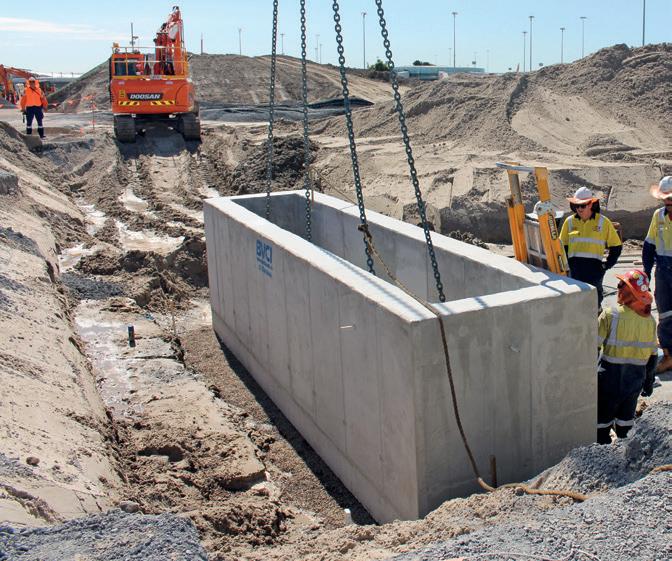
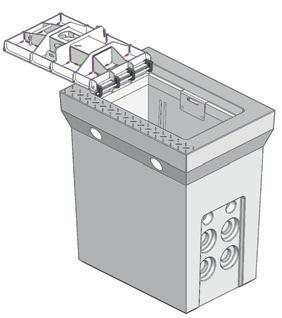

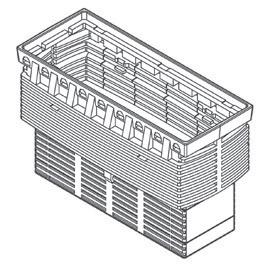
BIG DATA 24

WE’VE
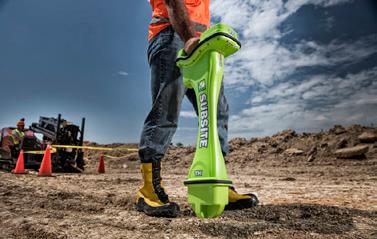
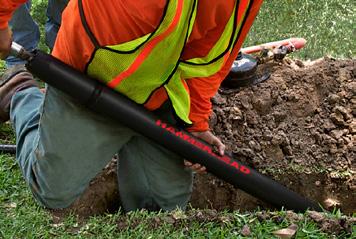
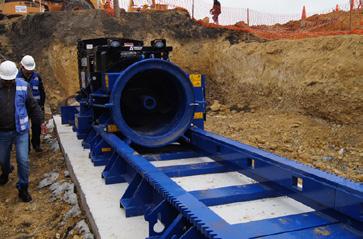
At Ditch Witch®, we focus on one thing: underground construction. Our entire product line-up is designed to make you more efficient and profitable in the field. Plus, with locations throughout Australia and New Zealand, you’re never far from the gear you need, when you need it. One company. One account. One-way path to success. WE’RE IN THIS TOGETHER.

GOT WHAT YOU
WHENEVER YOU
NEED.
NEED IT.
©2016 The Charles Machine Works, Inc. Ditch Witch Australia // 02 4777 7115 Ditch Witch New Zealand // 0800 396 9583
ANALYSING THE OPTIONS:
WHAT’S BEST WHEN IT COMES TO BIG DATA?
There’s a sea of options available to utilities when it comes to measuring and analysing the data they have access to. We spoke to Sanjay Krishnaa, Senior Vice President & APAC Head of engineering and technology-based solutions provider Cyient to find out more.
WHAT ARE THE BIGGEST CHALLENGES FACING UTILITIES THAT WANT TO BEGIN USING REAL-TIME METER DATA OR ANALYTICS PLATFORMS?
Integration with their existing operational systems such as AMS/ EAM, DMS, GIS, MWMS, OMS and SCADA. To reap the maximum benefits of the network intelligence being gained through real-time data analytics, a utility needs to be able to use it and in real-time.
Based on our recent discussions with utilities, the implementation of any new system is a challenge and technically this challenge revolves around its integration with other systems already in use. Utilities normally go through a rigorous process when selecting systems and have a clear preference for commercialoff-the-shelf (COTS) products. They often engage consultants while selecting these. Yet more often than not, utilities end up having to do lots of customisation on the COTS to them to make them fit and meet their business objectives. COTS solutions often fail to meet the desired requirements because:
• Utilities have siloed, disparate or proprietary systems that either prohibit or make data sharing very complex
• No existing platform is in place for unstructured data
• There is no common integration platform
• No single COTS solution meets all business requirements, as the business priorities, technologies and data architecture is changing constantly.
Furthermore, it is a challenge to develop easy data access architecture with the ever evolving needs of the utility and also their consumers.
HOW DO YOU VIEW THE FUTURE OF SMART METER DATA TECHNOLOGY?
Smart meters will become smarter, i.e. higher resolution data and distributed more quickly. The ability to acquire data in real or near to real-time at shorter intervals and distribute this information to utilities, retailers and end consumers through simple to use software (e.g. smartphone apps) will open the door for value added services around asset management, network management, commodity management and customer relationship management.
HOW DO YOU SEE THE ROLE OF THE CUSTOMER IN THE UTILITY/ CUSTOMER RELATIONSHIP EVOLVING?
Consumers today are well versed with the new technologies like cloud computing and Internet of Things. These ‘smart’ and knowledgeable customers have added to the utilities challenges but at the same time have given an opportunity for improving and gaining energy efficiency.
Before smart meters, utilities had very little visibility into their customer’s consumption patterns, as interactions were limited to monthly meter readings, connections and disconnections and during network faults. With the introduction of smart metering, utilities can now receive detailed information on customer usage every 30 minutes of the day. This, coupled with the emergence of Home Energy
Management
(HEM), will provide real-time, two-way communications, and hence more value to utilities in engaging with their customers, informing them on their energy usage and providing the opportunity for usage guidance. Recently a utility in Victoria has started using
smart technologies to provide customers with real-time outage notifications. All these smart tools have not only helped utilities to drive efficiencies in energy, but it has also helped in building customer confidence.
HOW CAN REAL-TIME DATA HAVE SUBSTANTIAL BENEFITS ON ENERGY EFFICIENCY, CONSERVATION AND THE ENVIRONMENT?
A significant amount of investment from utilities has been made in real-time data, as they are looking at different means to get their maximum return on investment from their assets. It has been a part of the utilities regulatory submission to show operational efficiencies and impact on the Green Button initiative (energy providers giving customers easy and secure online access to their personal energy use data).
One of the advantages of real time data is that now utilities can provide usage and billing pattern information to consumers which can help them reduce their bill and gain energy efficiencies. They can manage their appliances during off-peak and peak periods, for example, running a dishwasher during an off-peak period. In a recent discussion with a local utility it came to light that real-time data is also helping them to improve power quality and provide more controls on voltage drop and other power filtering information. If power demand can be effectively managed by analysing real-time data, utilities will not need to keep adding to plant capacity and power generation, subsequently providing a significant benefit to our environment.
BIG DATA 26

smart metering on your mind?
Enabling smart grid technologies for Australia
Business Process Integration
Service Orientated Architecture based integration of meter data management, billing, call management and shut-down notification.
Meter Driven Mobile Workforce
Reducing operational cost and downtime through mobility enablers that utilise real time data from smart meters.
Intelligent Network Operations
Using data analytics to drive intelligent utility operations that minimise operational cost while enhancing system reliability.
To learn how, get your copy of the AMI/MDM white paper today. Scan the QR code below or visit go.cyient.com/ami-mdm to download.
with us today! connect@cyient.com I 03 8605 4815 I www.cyient.com
Connect
BIG DATA, BIG OPPORTUNITY
As the global appetite for big data continues to grow, opportunities are presenting themselves for companies operating in the test and measurement space.
As industries begin to view analytical systems as a strategic tool to improve efficiency, big data analytics are starting to gain serious attention for their potential applications in the world of test and measurement.
It is estimated that currently, only approximately five per cent of total test data gathered is being used –however, this trend is changing as companies recognise the significance of tapping into the vast sea of available information to gain actionable insights.
These are the findings from Frost & Sullivan, published in their report Global Big Data Analytics Market for Test and Measurement. In preparing the report, research analyst Apoorva Ravikrishnan found that research and development, risk management and asset management are the key applications in test and measurement where big data analytics are gaining traction. “Real-time monitoring and preventive maintenance are also racing to the top of investment priorities across industries,” said Ms Ravikrishnan.
Despite this expanding scope, high initial costs will slow down the largescale adoption of big data analytics to a certain extent. A number of firms prefer to stick to in-house systems managed by their own IT department rather than investing in advanced big data solutions for test and measurement.
“Transitioning from rigid analog systems to digitised, smart and automated technologies will be a critical factor for big data analytic vendors striving to strengthen test and measurement capabilities,” said Ms Ravikrishnan. “Further, acquiring industry-specific expertise will differentiate analytic providers from the competition and quicken their rise to the top of the global big data analytics market for test and measurement.”
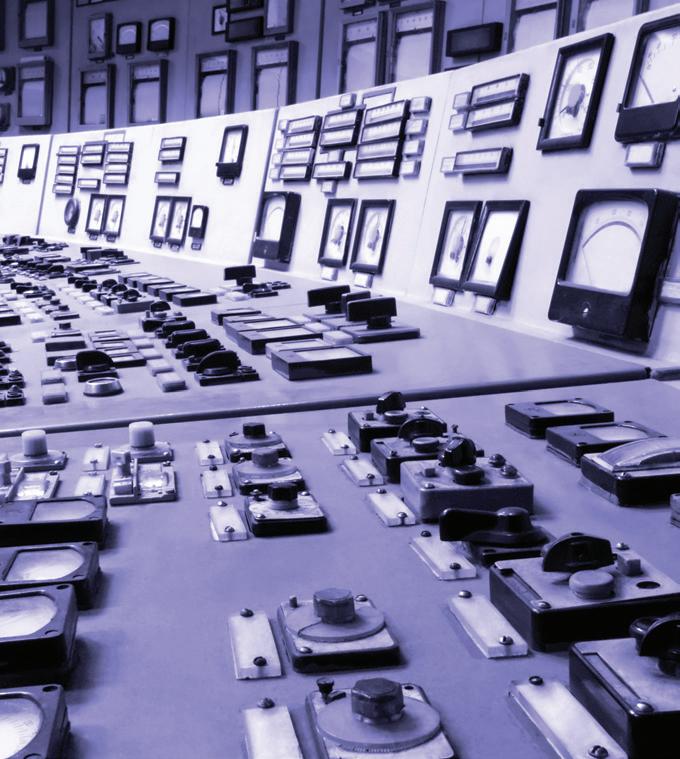
BENEFITS OF IMPLEMENTING BIG DATA
By implementing big data analytics for test and measurement users can:
• Obtain real-time analytics for maintaining the structural health of safety-critical components
• Reduce product development time
• Ensure quality maintenance.
The report authors noted that a significant level of competition is expected in this space, and they noted that participants with industrial expertise would gain leverage if their target customers are Tier II and Tier III companies. This is due to the fact that Tier I companies tend to show a preference for working with information and communications technologies (ICT) companies such as IBM and SAS.
More information on the opportunities big data can offer companies in the test and measurement space can be found in the full report Global Big Data Analytics Market for Test and Measurement To purchase, head to ww2.frost.com.
•
TESTING & MEASUREMENT 28


DRONES TAKE FLIGHT: FROM FAD TO POWERHOUSE
For more than a century, drones, or unmanned aerial vehicles (UAVs), were viewed purely as a military device. But in recent years, a dramatic shift has taken place, with a wide range of non-military applications identified for drones.
From aerial photography to 3D mapping to agricultural applications, drones are quite literally spreading their wings into new uncharted territory.
John Perkins is the UAV Chief Pilot for utility industry service provider Select Solutions, and has closely followed the early adoption of UAV technology in the utility sector in recent years.
“The utilities world has been quick to take notice of the capabilities of UAVs, with many utilities across the country identifying applications for UAV technology in their own operations.
“Perhaps the most obvious use for UAV is in the realm of asset inspection; but this is far from the only utility industry application. As other industries are already showing, the sky is literally the limit when it comes to the potential uses for UAVs.”
Here, we take a look at some of the unique drone applications currently in place within Australian utilities.
A NEW NETWORK PERSPECTIVE
With close to 13,000 kilometres of high voltage transmission lines and 99 substations across New South Wales, TransGrid routinely inspects their network to ensure the safe and reliable supply of electricity to consumers.
Through a commitment to innovation, the NSW high voltage network operator has deployed Unmanned Aerial Vehicle (UAV) technology to gain a new perspective of their network while increasing efficiency and safety.
TransGrid currently undertakes several different inspection types including ground, climbing, easement, thermography and Light Detection and Ranging (LiDAR) across their state-wide network as part of their comprehensive maintenance program.
“The benefits to employee safety, the efficiencies in performing inspections and the steady uptake of UAVs by utility companies strongly signalled to TransGrid this technology
is worth trialling,” said TransGrid’s Executive General Manager, Field Services, Michael Gatt.
“Our UAV pilot project aimed to test their application in providing results of equal or better quality than current inspection methods.”
Following a competitive tender process, TransGrid purchased a SkyJib X4 from Aeronavics with a specially configured payload system, which averages approximately 15 minutes of flight time. The configuration of the cross arms and motors are considered more stable in windy conditions, which is ideal when inspecting high voltage transmission towers which can measure up to 50 metres in height.
Initial trial
TransGrid’s UAV was quickly put into action following the issuing of a licence from the Civil Aviation Safety Authority (CASA) in late September 2015. A flight was undertaken to inspect a possible mid-span line defect, which had been identified during a routine aerial inspection.
The aerial inspection was not able to provide enough detail to staff on its
DRONES 30
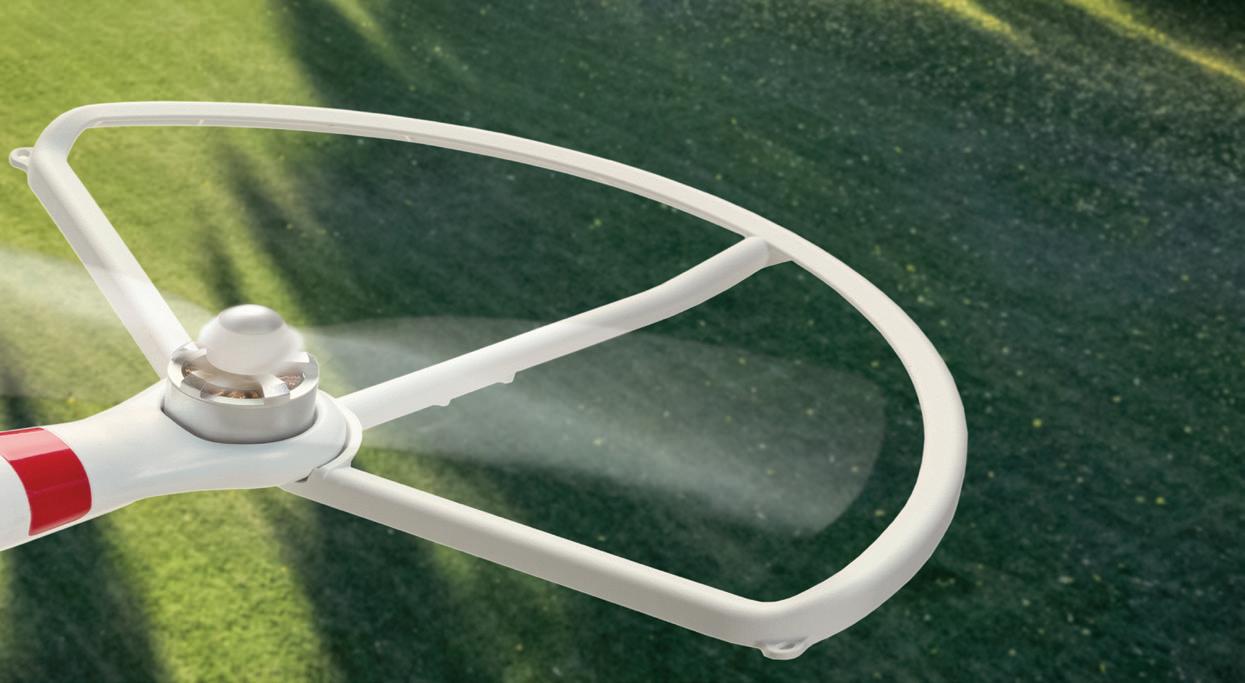
In recent years, the uses for drones have dramatically expanded, as online retailers, the construction industry, wildlife rangers and the media, to name just a few, explore the ways drones can make their day-to-day operations easier, safer and more efficient. Utilities have also been quick to explore the potential applications for drones, and here we take a look at the benefits utilities around the country are seeing through the use of drones.

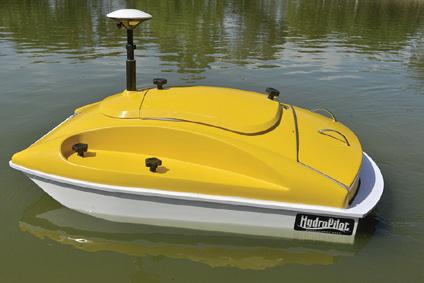
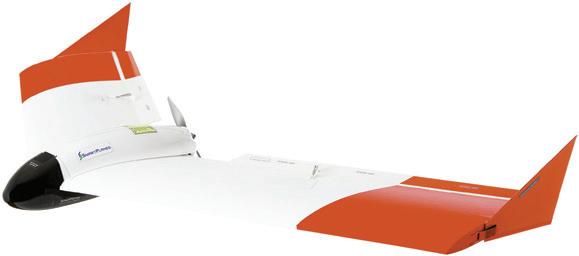
31 DRONES
HYDROGRAPHIC BOAT Agisoft PhotoScan Showroom Level 1, 138 Magill Rd, Magill, Adelaide, South Australia 5067 Phone (08) 8363 4111 Mobile 0408 688 826 Email sales@UAS-Australia.com.au www.UAS-Australia.com.au S Y S T E M S U NM A N N E D AE R I A L AUS T R ALIA nmanned erial ystems CASA Approved - UAV Operators Certificate 1-10DN09-01 The new HydroPilot boat provides a stable twin hull platform for work in dams, lakes & ponds. • 4 Hour plus battery • 1.3m long • Non fouling propellor • Turn Key system complete or customize with your own GPS/controller from $15k. • Fully autonomous flying • Base station • Full duplex comms • Mapping and flight planning software (easy to use)
One Person launch & recover
2 Day Training Course (certificate) • Long Flight Time See all the detailed brochures and deliverables at www.UAS-Australia.com.au We have pilots and operators in most states, call us for a quote on your next project. Rent to Own - 2 to 5 years (no financials) Tax deductible. A smart way to own a Smart Plane or HydroPilot Australian, NZ & PNG Distributors for: Field Tested Over 5 Years The Total Solution for Aerial Mapping SERVICES NEW 2016 MODELS
•
•
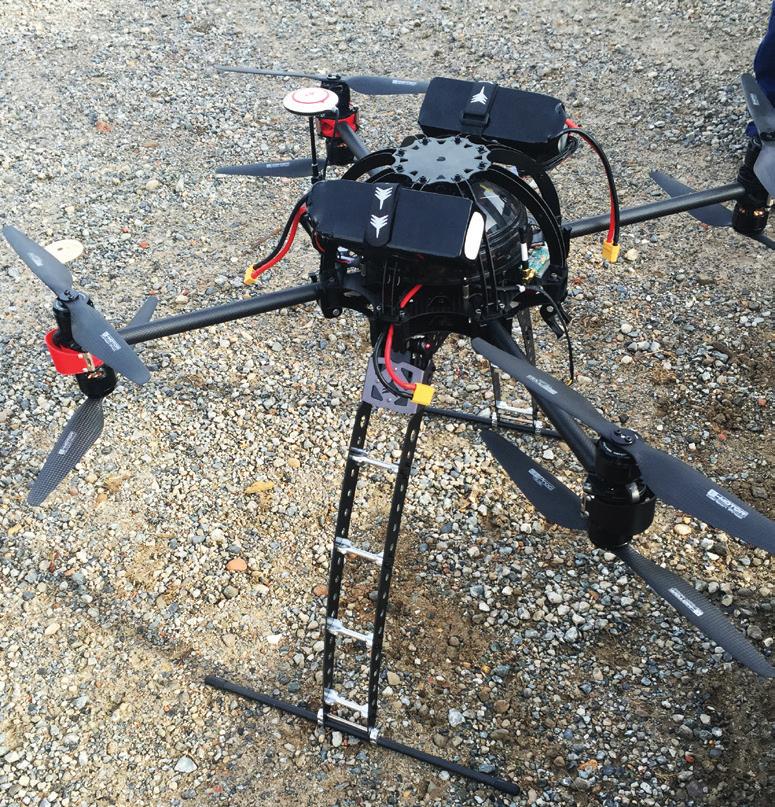
exact nature, and access to the site by an elevated work platform was limited due recent weather (unless track remediation work was first conducted). To avoid both the need for extensive track remediation work and a line outage, the drone was brought in to inspect the line.
During the flight, the UAV took photos and video of the defect, which were downloaded onto a laptop and sent back to maintenance staff who not only confirmed their quality but also its nature. In its first official flight, the UAV resulted in a low cost, rapid response solution and provided staff with detailed information about the line defect.
During the trial period, a number of defects were targeted for inspection, including mid-span line defects, bent or damaged spacers, chipped insulators caps and rubbing high voltage jumpers on towers. It was quickly discovered that the UAV was able to provide
excellent images and new angles on defects and equipment which were in obscure positions, without the need for a line outage.
Substations
The UAV was also utilised at one of TransGrid’s substations to identify what type of data would be useful to maintenance staff.
Without the need for an outage, the UAV was able to provide staff with a new perspective on the condition of substation gantry beams. Images from the flight will be used by staff to conduct assessments of the gantry beams’ structural integrity.
The UAV was also used to inspect the condition of substation rooves which helped to mitigate the need to climb, as well as providing staff with an overview of the entire roof of the building. The results obtained from the flight will be used by staff to help determine if remedial work is required.
Easement clearance
During the trial program, another possible use of the UAV was found for measuring tree clearances from conductors on easements. This new application was achieved by using telemetry from the UAV and measuring the altitude at tree height and the altitude of the conductor then subtracting the two results to obtain the clearance height. This has the potential to be used in hard to access gullies where this type of measurement would be difficult by traditional methods.
Lessons learned
A number of important lessons were learned throughout the trial that will assist TransGrid’s approach to future inspections performed by the UAV.
“During the three week inspection trial, we were able to identify that inspections of line defects, substation gantry condition assessments, building condition assessments, easement clearances and thermography on defect basis are viable to be performed by the UAV,” said Mr Gatt.
Following the successful trial program, TransGrid will now seek to investigate other possible applications for the UAV as part of their maintenance program, including substation thermography, radio tower condition inspections, survey and land mapping and corona discharge inspections.
REMOTE INSPECTION
In the Northern Territory, Power and Water Corporation is also utilising UAVs to carry out asset inspections – and when you’re working with a network that spans more than a million square kilometres, the benefits UAVs can provide are obvious.
In 2015, the utility carried out a trial for the inspection of powerlines across the Territory. With more than 10,265km of powerlines that need to be inspected periodically to identify maintenance needs, Power and Water Corporation investigated the use of UAVs to supplement traditional inspection methods such as groundbased inspection, aerial inspection (from helicopter), climbing and elevated
32 DRONES

work platforms.
Each of these inspection methods has limitations related to access, viewing angles of the asset, time, cost and system security.
According to John Greenwood, General Manager Power Networks at Power and Water Corporation, a number of factors led to the utility undertaking its trial of UAVs.
“We identified drones as a means of asset inspection through discussions with other utilities, who generously shared their experiences on what had been successful, and what didn’t work so well.
“Coinciding with this was a general awareness of the growth in the drone services sector and an understanding of the new opportunities available. We were also approached directly by several service providers.”
Mr Greenwood says that while it’s early days in the utility’s journey into UAV inspection, they have seen promising results, particularly when using UAVs to confirm the severity of defects that have been observed from the ground.
“At this stage, we’re now focused on conducting some more research to understand the operating limitations, training and licensing requirements to ensure we fully understand the costs, resources and any statutory obligations prior to adopting the technology,” said Mr Greenwood.
“We’re also still considering whether we operate drone inspection in-house or through a contractor. Due to our proximity to larger service providers that have the licensing and training aspects in hand, having a solution that can be deployed quickly with limited mobilisation cost is a key consideration.”
While they’re still at an early stage in the process, Mr Greenwood can already see a number of future potential applications for the technology.
“I can see Power and Water utilising this technology for inspections of lines and easements including visual and thermography, vegetation management verification, and inspections of lines that are inaccessible due to flooding during the wet season, particularly if the line has tripped and the cause cannot be verified.”
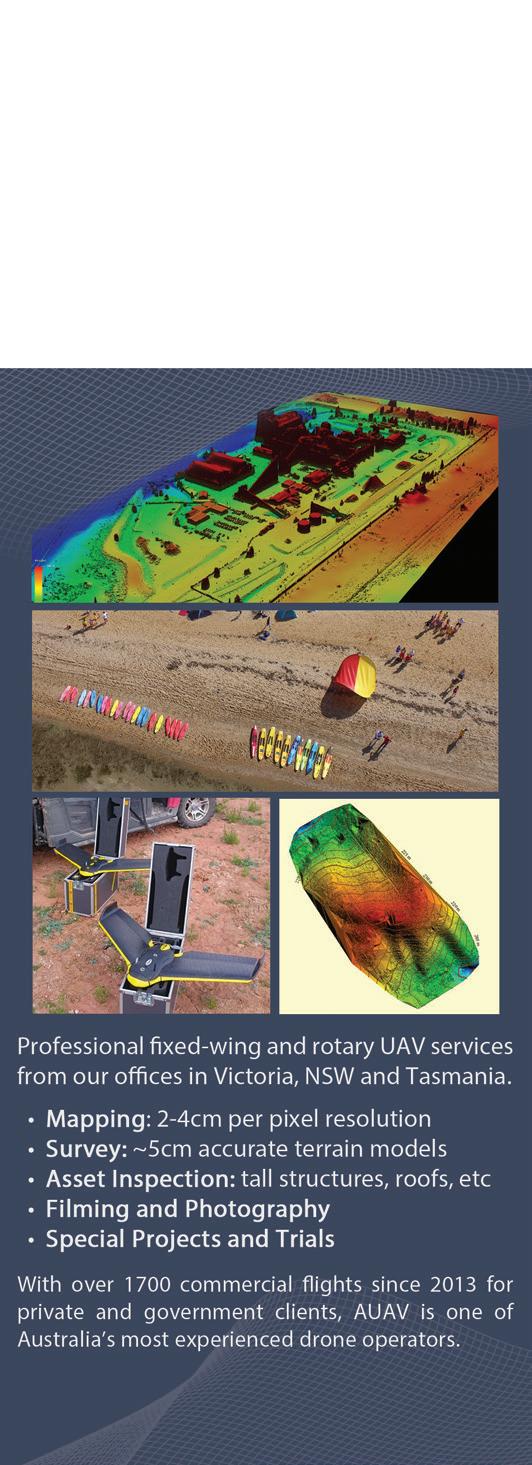
 EXAMPLE OF A BENT TRANSMISSION LINE SPACER IDENTIFIED DURING AN INSPECTION.
EXAMPLE OF A BENT TRANSMISSION LINE SPACER IDENTIFIED DURING AN INSPECTION.
WWW.AUAV.COM.AU 33 DRONES
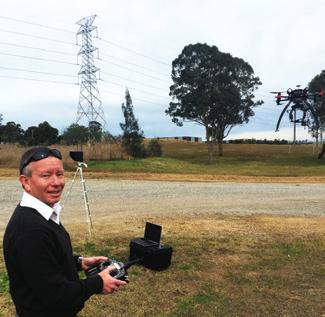
CONTINUED INNOVATION
In one of the more unique applications for utility drone use, Queensland water utility Seqwater recently undertook a trial of a UAV for the management of aquatic weeds on its lakes.
The innovative approach to treating floating aquatic weeds was initially trialled at Somerset Dam.
Seqwater Chief Executive Officer, Peter Dennis, said the trial sites were selected based on the difficulty to access the weed infestations by boat or shore.
“Some aquatic weeds are notoriously difficult to access, located either in between dead trees, under paperbark swamps or in shallow water. The location of these weeds has meant traditional treatment methods, such as boat-based or land-based spraying, could not be readily used.
“Managing difficult infestations requires more effort – staff may have to wade through water or use canoes to reach the weeds. In comparison, the UAV can be operated from the shoreline or a boat. It is flown remotely by a licensed pilot who is assisted by a spotter.
“The craft can carry up to 23kg, or 16 litres of herbicide at a time, and deliver a swath of herbicide 3.2m wide. Depending on the density of weed infestation and required coverage rates, a single tank of herbicide can last up to an hour,” said Mr Dennis.
Mr Dennis said there were three main species of floating aquatic weed infestations found in Seqwater drinking water storages, Salvinia, Water Lettuce and Water Hyacinth.
“The type of weed and abundance
of infestation is predominantly dependent on seasonal influences and inflows following rain. The rate of growth increases over summer, while floodwaters can bring new weeds into the dam.
“Under favourable conditions, some species of aquatic weeds can double in size every four to five days. Floating aquatic weeds can have a number of negative impacts on water quality, including depleting dissolved oxygen levels and increasing nutrient loads within the lake.
While the utility is still observing the benefits of using UAVs for herbicide application, Mr Dennis is positive about the role they can play within Seqwater. “There is a great potential for the use of drones for herbicide application for both aquatic and terrestrial spraying. I look forward to learning more about their benefits for Seqwater,” said Mr Dennis.
SERVICING THE INDUSTRY’S NEEDS
Over the past six years, Select Solutions has implemented a dedicated UAV program supported by its senior executive and that of its parent, AusNet Services, and is now established as a leader in the use and operation of UAVs for asset inspection to complement its extensive inspection services in the utilities and rail industries.
While many are dabbling in the technology and investigating how it can be used effectively, Select Solutions is successfully operating a UAV program, having been the first utility in Australia
to receive CASA licensing, and now has a continuous program of work supported by 15 trained operators and 17 UAVs.
The carefully selected UAV fleet comprises a mix of low-end off-the-shelf UAVs for close range imaging, and high-end aircraft to carry specialised payloads for targeted services such as thermal inspection, high resolution imagery inspection and aerial LiDAR inspection.
Select Solutions is pleased that members of the utilities fraternity are embracing the technology. “We are starting to see the effective deployment of UAV within the utilities industry to solve a variety of problems,” said John Perkins. “Most importantly, these projects have confirmed our views on the key success factors for implementing a UAV program.”
Select Solutions believes that the success of any UAV program is hinged on a number of key factors including integration of UAVs into existing workflows, understanding how to extract information and key insights from the UAV data, or how to achieve the expected benefits of using a UAV, and, primarily, reaching the understanding that the UAV is just another tool to get the job done, and isn’t the answer in itself.
It is clear from the examples above that Transgrid, Power and Water, Seqwater and Select Solutions are taking full advantage of the flexibility and power of a UAV platform in delivering positive business benefits across a range of applications.
There are many scenarios where utilities can use UAVs, however it is important to remain focused on developing capability that provides tangible business benefit. Select Solutions has the following key criteria for assessing the use of UAVs:
• Safety – can a UAV be used to improve the safety of our people or the general public?
• Productivity – is it faster or more productive to use a UAV?
• Unique perspective – does the UAV provide a unique perspective that cannot be achieved by other means?
• Access – does the UAV allow us to access areas that are otherwise beyond our reach?
• Complementary solution – will the UAV provide the total solution or will it be a fill-in solution for special scenarios?
• Cost – is it cheaper to utilise a UAV?
DRONES 34
TRANSGRID’S CHIEF PILOT, PAUL DAVIS.
TURNING AN INDUSTRY ON ITS HEAD
Every now and again a new player in an industry totally revolutionises the traditional way things have always been done. Wrighteye Industries is that company – innovators in the inspection of water reservoirs for the water and mining industries.
Wrighteye Industries specialises in the use of robotics in underwater environments. Services include infrastructure inspection and intervention in dams, reservoirs, tanks and pipelines; as well as subsurface mapping and environmental management services, such as water quality management.
Remotely operated underwater vehicles (ROVs) are used in support roles, monitoring and communicating a safe working environment, while
reporting full and ongoing situational awareness back to the client.
As unmanned vehicle specialists, Wrighteye Industries leads the way in innovation and safety, and helps to significantly lower clients’ operating costs by:
• Reducing insurance risk and liability
• Reducing the need for divers at sites where there may be risks from dive time/depth exposure
• Providing accurate data in real-time
• Offering aerial capability via the use of unmanned aerial vehicles (UAVs).
Wrighteye’s directors are Mike Wright, an environmental scientist with extensive water experience, and Simon Wright, a world-class ROV operator/ supervisor with nine years’ experience
in offshore ROV operations.
Their team consists of some of the most experienced ROV pilots in Australia, with experience in global subsea operations for the oil and gas industry over the past decade.
Recent clients include Sydney Water, Goulburn Valley Water and BHP, all of whom were glowing in their praise for the work completed and the outcomes of the projects.
Mike and Simon believe this is thanks to their proactive attitude, their ability to strategically use cutting-edge technology to customise a solution for your specific conditions, and their ability to draw upon years of experience and problem-solving abilities to ensure work sites have minimum downtime and optimum data collection to alleviate any future problems.
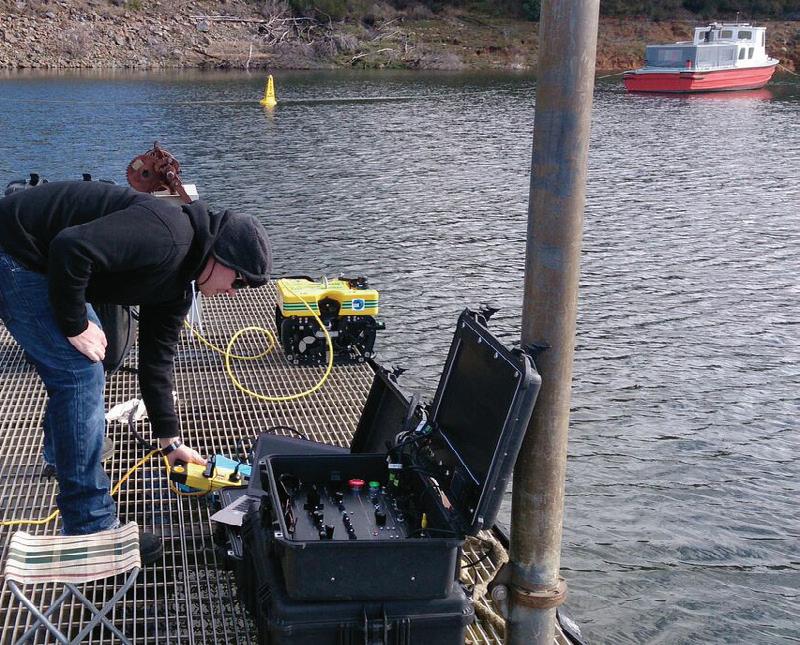
Strategic solutions for onshore underwater operations. Recent clients include Sydney Water, BHP Olympic Dam Mine and Goulburn Valley Water

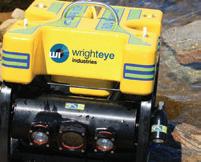

Utility Partner Solutions
0417 290 724 | EXPERT SERVICE AUSTRALIA WIDE | wrighteye.com.au UNDERWATER ROBOTIC
SPECIALISTS ROV SUBMERSIBLE ROV’S | INNOVATIVE TECHNOLOGY | HIGH DEFINITION VISION IN REAL TIME
VEHICLE
to
is revolutionising the water and mining industries? Visit www.wrighteye.com.au. DRONES 35
Want
learn more about how Wrighteye Industries
Changing skies: NEW REGULATIONS FOR DRONE OPERATORS

Australia’s Civil Aviation Safety Authority (CASA) has been regulating the use of drones for a number of years. Here, we look at the latest regulations the authority is looking to introduce to ensure that the industry continues to operate efficiently and safely.
by Peter Gibson, Manager Corporate Communications, Civil Aviation Safety Authority
Australia was a world leader in developing safety regulations for aerial work/commercial and recreational remotely-piloted aircraft, commonly known as drones. These regulations have been in place for more than ten years and provide a sound set of safety standards for drone flights. The goal is to protect people, property and other aircraft from risks that may arise from drone flights.
The basic rules for aerial work/ commercial drones are to keep more than 30 metres from people not involved in the flight, stay under 400 feet, keep the drone in line of sight at all times and do not fly over crowds or groups of people. And of course do not operate in a way that puts people, property or aircraft at risk. CASA can and does enforce these rules, with a range of infringement notices that can be issued with penalties of up to $9000. In serious cases, for example where someone was injured, CASA could seek prosecution and courts could impose a higher penalty.
CASA is looking at proposals to
amend the remotely-piloted aircraft regulations that would impose less regulatory requirements for aerial work/ commercial drones weighing less than two kilograms maximum takeoff weight. These changes would remove the requirement for commercial operations of remotely-piloted aircraft weighing less than two kilograms to have approvals from CASA, as long as the flights are conducted according to standard operating conditions.
These conditions will allow flights in non-populous areas more than 30 metres from people, below 400 feet and only during the daytime, with the remotely-piloted aircraft in line of sight. In a speech earlier this year, CASA’s Director of Aviation Safety Mark Skidmore, said CASA is looking at issuing a manual of standards to support the remotely-piloted aircraft regulations. This manual of standards would contain information on licensing, controlled airspace training, records management and operational standards. The advantage of having a manual of standards is that it would
allow CASA to respond more quickly to changes in technology and other circumstances.
Mr Skidmore said CASA will begin work on developing a new set of regulations covering all aerial work/ commercial remotely-piloted aircraft operations. The new regulations will cover issues such as beyond visual line of sight flights, operating in non-segregated airspace and flights with various degrees of autonomy and automation.
“We are considering the long-term integration of remotely-piloted aircraft into aviation operations in all classes of airspace,” Mr Skidmore said. “However, there are significant technological advances, regulatory changes, training and skills, procedures, documentation and education that need to happen before integration into all classes of airspace can take place. Further, there are a significant number of technical issues for which standards have not yet been determined around the world.”
There is a wealth of information on both commercial and recreational drone regulations and safety on CASA’s web site. Head to www.casa.gov.au.

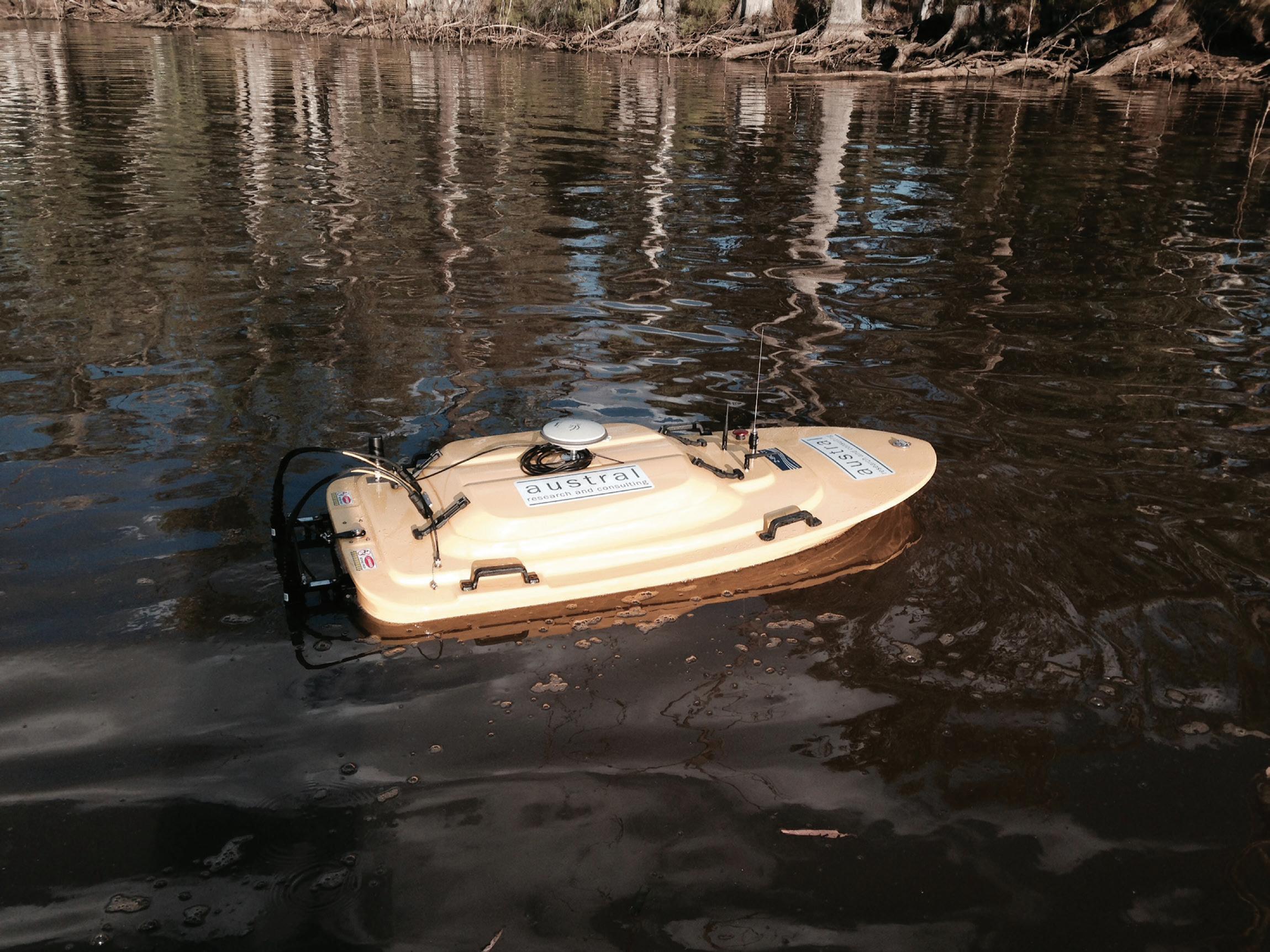
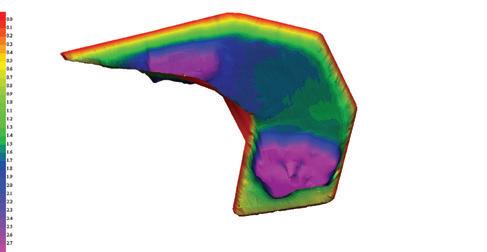

FRESHWATER RESEARCH & ENVIRONMENTAL CONSULTING For more information visit us at: www.austral.net.au www.facebook.com/AustralResearchAndConsulting Phone: 0458 389 374 Email: dion@austral.net.au THIS BOAT IS IDEAL FOR : • SHALLOW WATER BATHYMETRIC SURVEYS FOR INPUT INTO HYDRODYNAMIC MODELS • SUBMERGED MACROPHYTE MAPPING • SUBMERGED WOODY DEBRIS MAPPING • SUBMERGED HAZARD MAPPING • SLUDGE BLANKET MAPPING SLUDGE THICKNESS LEVELS SONAR OUTPUT REMOTELY OPERATED BATHYMETRIC SURVEY BOAT
SWITCHING INDUSTRIES: FROM GREAT HEIGHTS TO UNDERGROUND NETWORKS
As an independent contractor, it takes strong will and determination to make the first move in forging a new career path. However, as technologies evolve and new industries form, it is not uncommon to find those who have taken the leap in a different direction, having either expanded their services or crossed over to different industry sectors.
Paul Barrett, founder and head of Pro-Bore Australia is one of these savvy contractors who made the switch from professional tree lopping into the drilling and boring industry exactly 20 years ago.
“To be honest, before I made the switch into drilling, I knew nothing about the industry. The first time I saw a directional drilling machine, I was standing in a Vermeer workshop, waiting for my wood chipper to be serviced.
“Gary Cowley, one of the founders of Vermeer was working that day and let me take a look at the machine. He told me that if I wanted to make money, drilling was the future.
“I was literally climbing trees one week and drilling holes the next,” said Mr Barrett.
MAKING THE SWITCH
Vermeer helped Mr Barrett get started in the industry, by offering him on-site training as well as introducing him to people from their drilling network.
“I began doing lead-ins to houses for the rollout of pay TV. We did shots across all terrain, including drilling up steep embankments – it was amazing what you could do with these machines.
“Before HDD, companies didn’t have the accuracy for installing pipes under roads, footpaths and creeks,” said Mr Barrett.
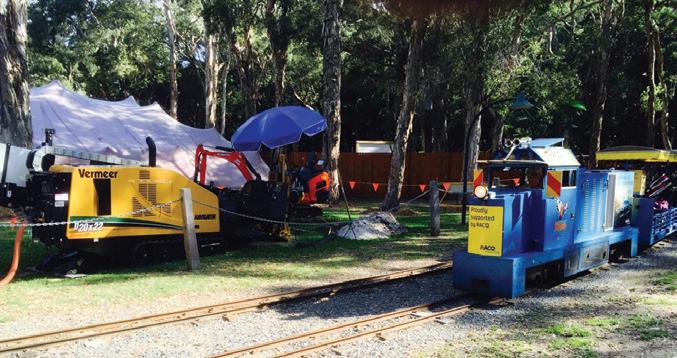
MAJOR PROJECTS
Since opening Pro-Bore in 1995, Mr Barrett has continued to work with either one or two Vermeer machines at a time, using a total of six machines over the past 20 years.
The biggest project completed by Pro-Bore was the Tweed Shire (NSW) sewer main, which involved pulling a 350 millimetre diameter pipe for 95 metres underground.
“This job was carried out under a road down at Murwillumbah (NSW) using a Vermeer 16x20A drill. To this day, it is still the biggest shot I’ve done, and certainly a big shot for a small machine. I owe the project’s success to years of on-site experience with drilling in different ground conditions and knowing what to products to use in
your drill slurry.”
More recently, Pro-Bore installed 800 metres of pipe at Currumbin Wildlife Park (QLD) which involved drilling beneath animal enclosures, kiosks and the site’s miniature railway. The 63mm pipe was to house communications cables, as the park had upgraded to the fibre optic network.
“When the park ranger had a look at what we were doing and where we had drilled from, it really blew him away. Not only did the park remain open during the project, he couldn’t believe how we could bore under the Emu Pen and come up right beside the foundations of the kiosk 120 metres away.”
Utility Partner Solutions
38 DRILLING
RECENTLY PRO-BORE INSTALLED 800 METRES OF 63MM PIPE TO HOUSE COMMUNICATIONS CABLES AT CURRUMBIN WILDLIFE PARK IN QUEENSLAND.
THE IMPORTANCE OF EXPERTISE
The biggest problem facing drilling operators is hitting existing utilities, says Mr Barrett, and as competition rises within the drilling space, skill levels and experience are becoming more and more important.
As there is currently no certification required for the operation of HDD equipment, many people are purchasing drills and working on jobs without understanding their limitations, says Mr Barrett. nbn for example, are currently pushing for a certificate of competency to be able to work on their projects.
“Drilling can be life-threatening if you hit underground power, so inexperience is a big problem. Learning to drill well has a lot to do with the feel of the machine and takes a number of years to get good at it.
“Because of this, it is so important for companies to find drilling contractors with a high level of experience who understand safety and can produce good results. Dial Before You Dig have a good online service which makes our life a little easier,” said Mr Barrett.
A BRIGHT FUTURE
As long as you have the right skills and the ability to adapt, the drilling industry will continue to provide you with diverse opportunities, says
Mr Barrett.
“Using quality equipment from the get-go would be my number one recommendation. When faced with challenges on site, you need to be working with equipment you can trust, as well as a team of professionals that can provide technical support no matter the situation.”
“Switching industries is an exciting challenge, and I guess you could say I am a bit of a thrill seeker. However, gone are the days of fighting off swarms of bees high up in tree trunks! Drilling provides me with a much safer and diverse form of work that is continually evolving as time goes by.”

Utility Partner Solutions
39 DRILLING Sustainable Air and Odour Solutions for Oil & Gas, Municipal, Mining, Agriculture and Industry. Energy Efficient Air Pollution Solutions for Mining, Manufacturing and Industry, Food and Pharmaceuticals . Clean TeQ Aromatrix Pty Ltd ABN 98 600 353 99 Melbourne - Head Office Factory 1 / 37-39 Ricketts Road Mount Waverley, Vic, 3149 p. + 61 3 8555 3213 w. www.clqa.com.au e. info@clqa.com.au OdourTeQ® BioFilter & BioTrickling Filter Process Benefits: • Lowest Operating Costs • Simple Process & Low Downtime • Low Maintenance • High Performance • Full Automation • Greater than 10 year Media Life ThermTeQ® RTO Applications: • Manufacturing •Paint and Solvent Production •Painting processes •Power Generation •Petro-Chem •Refineries •Mining
SYDNEY WATER

Sydney Water supplies 1.4 billion litres of drinking water to 4.6 million customers across Sydney, the Illawarra and the Blue Mountains every day and also removes and treats daily a similar amount of wastewater across a network of over 25,000kms of wastewater pipes and over 21,000kms of water pipes. They currently employ 2,577 people.
Managing Director of Sydney Water
Kevin Young said “We’re lucky enough to look after some of the best water in the world. Every day, we protect the health of our community by providing safe and refreshing drinking water, removing wastewater and preserving our rivers and beaches.
“We’re proud to play a key role in Sydneysiders’ continuing health and enjoyment of this great city”, said Mr Young.
CULTURAL CHANGE
Kevin Young said “We are essentially turning over 127 years of tradition at Sydney Water on its head – changing how we work and taking an outside-in view so that we can deliver the best water in the world to the people of Sydney more efficiently and at a lower price. We will become more adaptable to change and able to better service our customers, community and city.”
Sydney Water’s new direction focuses on customers, building a high-performance culture and turning Sydney Water into a world-class organisation by finding smarter ways to work.
With the initial implementation of their customer-focused strategy they have already lifted their customer satisfaction level to an all-time high of 7.7 out of 10.
Their corporate reputation score
is now 6.7 – the highest ever since reporting began. This has coincided with a year of increased engagement with their stakeholders, customers and community. A key example has been the recent engagement, education and consultation with the greater Sydney community on proposed regulatory reforms to Wastewater Overflow Abatement.
In the last six months Sydney Water has embarked on two key pieces of work that they believe will transform their business – customer experience design (or journey mapping) and actively including customers in decision making through enhanced customer engagement activities.
Sydney Water has implemented a range of new technologies and ways of thinking to improve customer experience and drive business efficiency, including replacement of
40
UTILITY IN PROFILE
Sydney Water is Australia’s largest water and wastewater service provider and it is owned by the people of NSW.
their 28 year old billing system and utilising new technologies to improve communication with customers via apps, SMS and email.
They recently launched ‘Tap In’, a mobile app which is a one-stop online shop for customers to access building and developing services, which will enable customers to buy diagrams, get building plans approved and submit connection applications online.
They have also recently launched the Water Map app that allows customers to see real-time updates of water supply and service updates. Keeping customers informed about leaks and breaks in a timely manner is critical to minimising inconvenience.
Sydney Water has also embraced social media platforms to engage with their more digitally-minded customers. A prime example has been the ongoing education of customers on their ‘keep wipes out of pipes’ program which has generated broad coverage and engagement through social channels but has also reached an audience of over 8 million in traditional media channels.
“At the end of the day, Sydney Water must be a financially viable business,” said Kevin Young.
“Due to financial gains and efficiencies, we have been able to make a submission to IPART that we lower rates for our customers over the next four years.
“The changes would take effect from 1 July 2016 and for most customers this will mean a $100 reduction in their bills”, said Mr Young.
MILESTONES
Sydney Water has achieved considerable milestones over the years:
• This year marks 25 years of their Deep Ocean Outfalls, which have created significant improvement in water quality along the Sydney coast in conjunction with a $3billion investment in wastewater infrastructure during this time.
• The introduction of water efficiency programs for business and residential customers in 1999, in conjunction with improvements in technology, has provided significant reductions in water demand. Current total water consumption levels for Sydney are at the same levels experienced in the 1970s, despite an over 50 per cent increase in population since then.
• Sydney Water has developed an extensive portfolio of industry-leading, innovative, renewable energy projects at their Wastewater Treatment Plants, using hydro generation or cogeneration, which uses biogas produced from wastewater digesters to generate energy. These initiatives provide around 17 per cent of Sydney Water’s total energy needs and reduce greenhouse gas emissions by over 60,000 tonnes a year.
• The commissioning of the $157million Priority Sewerage Program has allowed thousands of customers on Sydney’s fringe to connect to town sewer for the first time.
SUPPORTING THE COMMUNITY
Giving back to the community has always been an integral part of Sydney Water’s make up. Initiatives include:
• Sydney Water has created an Australian first, BillAssist®, by introducing to their Customer Contact Centre, a team of caseworkers who are all tertiary qualified and experienced in social work or psychology, to provide customers with personalised support, advice and payment assistance, and referrals to other specialist services.
• Sydney Water also became the first water utility to partner with a professional sporting team by becoming the Hydration Partner of Cricket NSW.
• Sydney Water also supports the education of high school and university students through infrastructure tours and being one of the largest training grounds for engineers and scientists in the nation.
• This year Sydney Water launched the Women in Science & Engineering (WiSE) program in partnership with Western Sydney University.
RESEARCH PROGRAMS
Research development continues to underpin daily activities for Sydney Water.
Sydney Water, in partnership, won the Global Grand Award at the International Water Association’s (IWA) 2014 Project Innovation Awards held in Lisbon for the Sewer Corrosion and Odour Research program (SCORe). The project helps to maximise the service
41
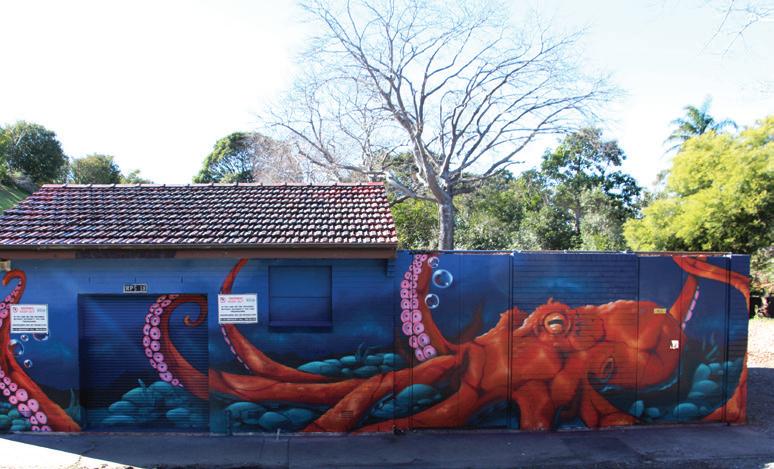
life of sewer networks and savings in the order of hundreds of millions of dollars are expected to be achieved through its application across the globe.
A similar collaborative research project is currently being conducted on condition assessment and leak detection on critical water mains. The aim is to remove the guesswork from critical pipe inspection and ensuring that water mains are not being replaced before they need to be.
Sydney Water is also partnering with a number of organisations to trial how their sewage treatment plants can produce additional electricity and reduce waste going to landfill by adding household kitchen scraps or glycerol, a by-product of biodiesel manufacture, to the wastewater treatment process.
In a partnership with private company Oxyzone Pty Ltd, Sydney Water developed an Ozone Trailer, using ozone as an alternative to chlorine disinfection of new water pipes. Winning the prestigious 2014 Sydney Engineering Excellence Awards, the Ozone trailer is now providing an annual saving of approximately $1.4million to Sydney Water. The process offers significantly improved health and safety aspects for employees.
A further innovation requiring no capital outlay was developed by two Sydney Water staff members to improve sewer pump performance.
The auto flush system developed has ceased the often unsafe practice of manual cleaning of the sewer pumps and has been adopted for all relevant Sydney Water pumps, creating an annual cost saving of around $6million per year.
Sydney Water’s Climate Change Adaptation Program AdaptWater™ was developed in association with a number of partners to investigate how to sustainably reduce the impacts of future climate change on infrastructure, business processes and customers.
MORE THAN A SERVICES SUPPLIER
Sydney Water provides much more than water and wastewater services.
Paul Mulley, Sydney Water Manger of People and Places, said “We are proud to have made a contribution to making Sydney more liveable. Through our various collaborations we have improved the local urban amenity and enhanced natural environments –outcomes our customers value.”
Projects include the revitalisation and naturalisation of the Cooks River where deteriorated concrete panels constructed in the 1940s have been naturalised and over 80,000 local native plants have been planted. This project has provided wetland habitat for local wildlife and improved the urban amenity for local residents to enjoy.
Sydney Water also manages and
protects over 200 built and natural heritage sites including Sydney’s first water source, the Tank Stream. Last year a remarkable indigenous artwork site in the heart of suburban Sydney was discovered and in conjunction with the Local Land Council, the site will be protected for future generations.
A further program undertaken by the organisation has been an anti-graffiti program, undertaken in partnership with local councils where Sydney Water assets targeted by graffiti vandals are being reborn as community works of art to prevent further graffiti and to enhance the amenity of the local communities.
Sydney Water has also reduced its carbon and ecological footprints by 45 and 35 per cent respectively since 2007-08. This has been achieved despite an increasing population and the need for more energy-intensive water sources.
Sydney Water has been active in promoting tap water as a sustainable alternative to water in plastic bottles, outlining the significant savings in water and power used in the production of plastic bottles that can be achieved by drinking tap, along with reduction in landfill and littering of our waterways.
SAFETY
At Sydney Water, the number one priority is to continually improve workplace health and safety.
Sydney Water’s focus on safety was refreshed in 2014-15 with the implementation of their ‘Safe & Well Together’ initiative.
Sydney Water is updating its Work Health and Safety Management System (WHSMS), along with over 80 safety policies that will help improve safety at work. As a part of this work, their Civil Delivery team introduced a Behavioural Based Safety (BBS) system.
Almost 6,000 safety observations and conversations have been recorded, demonstrating their workforce’s ongoing commitment to safety.
Complementing this, a series of
42 UTILITY IN PROFILE
video interviews with staff has been produced to further stimulate health and safety awareness.
Sydney Water has also partnered with ‘MATES in Construction’, a community development organisation that aims to reduce suicide and improve mental health and wellbeing within the Australian construction industry.
FUTURE GROWTH
Most commentary on the future growth in Sydney has tended to focus on housing and transport, but water and wastewater management is essential to any discussions on growth, sustainability and liveability.
Over the next 20 years, there will be an extra 1.3 million people living in Sydney, in 500,000 new homes with an extra 635,000 new jobs, and investment in servicing growth is forecast to be over $2.4billion as new homes are constructed in infill areas
and greenfield areas in the North West Growth Centre and South West.
Sydney Water is looking to the future to ensure that when it comes to water, that no-one does it better, to continue to lift the bar to achieve improved levels of customer service, and to keep downward pressure on costs. They also want to ensure that Sydney is an enjoyable city to live in.
Sydney Water has just completed a new 50 year demand forecast, that encompasses a range of future water use scenarios for projected population growth. They are taking a long-term strategic approach to managing demand with the overall focus for water efficiency now to deliver services that customers value, in a way that keeps bills low.
To service Sydney’s growing population, Sydney Water and its key stakeholders are developing smart, sustainable water, wastewater and recycled water solutions. The planning
Civil Infrastructure Solutions

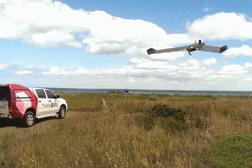
process takes a whole-of-water-cycle management approach, guaranteeing supply while protecting environmental and cultural heritage.
Kevin Young said “As the Managing Director I am proud of what Sydney Water has already achieved. I am confident that by becoming more customer-focused, operationally efficient and innovative, Sydney Water will become more adaptable to change and able to better service our customers, community and city. Like the great men and women who have come before us over the past 127 years, we’re passionate and proud of our role in shaping the lifestyle of Sydney, the Blue Mountains and the Illawarra for generations to come.”
SYDNEY WATER IN A NUTSHELL
Customer focused – high performance – world-class.
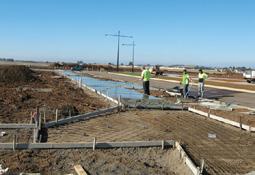

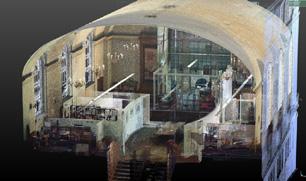
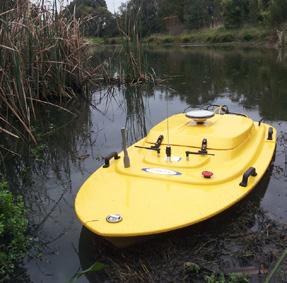


At the forefront of ‘big data’ technology, Taylors can deliver fast, accurate and cost effective customised solutions for a broad range of projects and market sectors including water and sewer, waste management, local government, transport (road and rail), pipeline, resources and telecommunications.
UTILITY IN PROFILE 43
With a wealth of experience in the design of civil infrastructure, Taylors offers solutions focused urban development consulting and project management, from project inception to design, approvals, construction and delivery.
taylorsds.com.au
Taylors offer a unique integrated and seamless approach to consulting across four core businesses in Urban Development, Built Environments, Infrastructure and Engineering and Project Management.
Technology Hydrographic Technology Terrestrial Scanning INFRASTRUCTURE Vehicle Mounted LIDAR Drone-Tech Mapping
of
& Reticulation Feasibility and Servicing Strategy Contract Administration ENGINEERING & PROJECT MANAGEMENT
Innovative Spatial
Stakeholder Consultation Design
Roads
New standard for the
WATER INDUSTRY
The Water Services Association of Australia (WSAA) has recently released a new product specification for casing spacers.
Casing spacers are used for the protection of carrier pipes when installed inside casings, and the new WSA PS- 324 Casing Spacers standard is the next step in ensuring that pipelines across the country are fitted with high quality spacer systems.
“There is now clarity when it comes to choosing the best spacer to ensure the longevity and success of the pipe installation,” said kwik-ZIP Spacers Managing Director, Jason Linaker. “The release of this new standard means that if you are installing a water pipeline and fail to use the correct type of spacer for the carrier pipe, you are not complying with WSAA’s standard.
“Timber used as a spacer – which is still common for a surprisingly large number of contractors – is simply not compliant with the standard.
“Over time, timber will rot away leaving either gaps in the grouting, or if grouting wasn’t used, the pipe will move once the timber is no longer able to support the pipe.”
Mr Linaker said there is also the risk that timber will wear away as it is run in.
“Although spacers are usually a small part of the overall pipe installation process, correctly designed and fitted spacers can significantly increase the life expectancy of the carrier pipe by keeping it free from corrosion, casing damage and overall wear.
“A material like timber will not last in an environment with water, which is why the new standard requires casing spacers to be manufactured from inert materials.”
THE NEW SPACER SPECIFICATION
The requirements of spacer systems outlined by the new
standard are as follows:
• Casing spacers shall be manufactured from inert engineering thermoplastics or stainless steel (Grade 304 or 316).
• Steel spacers shall not be used on metallic carrier pipes unless the spacer collar is coated or lined to prevent corrosion occurring at the point of contact between spacer and carrier pipe. The coating shall be inert so that it is compatible with metallic carrier pipe coatings.
• Casing spacers shall be designed at intervals that allow them to support the weight of the carrier pipe and its contents for the design life of the installation.
• If used inline in drinking water applications, the casing spacer shall comply with the requirements of AS/NZS 4020:2005.
• Spacer runners shall incorporate a wear pad manufactured from abrasion resistant material such as Acetal POM, Nylon, or HDPE.
• Casing spacers shall be complete with restraint from movement on the carrier pipe.
• The wear pads shall be bevelled to prevent jamming during insertion.
• Spacer runners shall be spaced radially around the pipe with a maximum angle between runners as follows: (i) Carrier pipe diameter up to DN 150: 90 deg. (ii) Carrier pipe diameter between DN 150 and DN 275: 75 deg. (iii) Carrier pipe greater than DN 275: not greater than 100 mm between runners at the inner circumference of the casing spacer. (iv) Runner height shall be sufficient to provide at least 10mm of clearance for the bells or couplings during insertion.
Timber used as a spacer is simply not compliant with the standard. Over time timber will rot away leaving either gaps in the grouting, or if grouting wasn’t used, the pipe will move once the timber is no longer able to support it.
44 WATER AND WASTEWATER Utility Partner Solutions
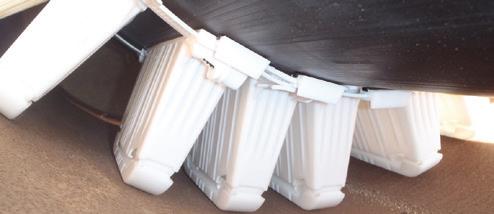
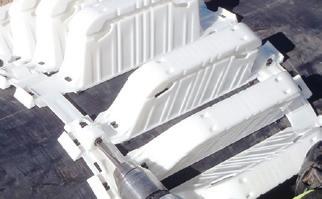
• Handles Steel, DICL, MSCL, Concrete & HDPE pipe plus contents 4” up to 63” OD and beyond
• Positions pipe within casing for customised centering or restraining
• Minimizes running friction and drag on very low co-efficient of friction wear pads with superior abrasion resistance properties
• Resists chemical and oils and maintains strength even if immersed for long periods of time
• Arrests vibration transfer from outer casing and reduces point loading via unique load sharing runner system
• Contains no lead or metal parts, fully compatible with municipal water applications
Warehouse locations:
Sydney NSW, Australia
Bunbury WA, Australia
Dallas TX, USA
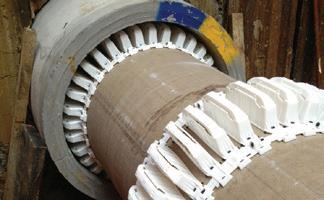
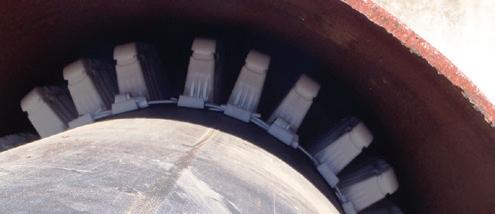
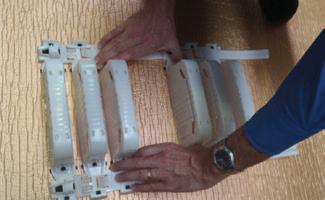
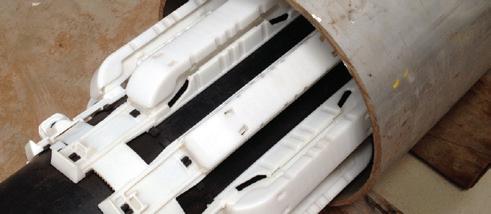
www.kwikzip.com Centered & restrained Spacer comprised of the same HDX 65 segment (65mm runners) Non-centered & restrained Spacer comprised of HDX 125 segments (125mm runners) above the pipe and HDX 65 segments (65mm runners) below pipe Non-centered & restrained Spacer comprised of HDX 65 segments (65mm runners) above pipe and HDX 125 segments (125mm runners) below pipe CENTRALIZER & SPACER SYSTEMS FOR THE DRILLING & CIVIL CONSTRUCTION INDUSTRIES HDX Series Spacer
Meet the challenges head on
Australian & International Customers +61 8 9725 4678 sales@kwikzip.com USA Customers +1 972 790 0160 usa@kwikzip.com
REVOLUTIONARY BREAKTHROUGH IN SEWER ODOUR AND CORROSION CONTROL
Sulphide build up is a problem endemic to water utilities around the world, resulting in infrastructure damage, odour issues and potential health hazards. In 2014, Griffith City Council overhauled its corrosion and odour control regime, contracting Melbourne-based company Biosol to apply its innovative sulphide control solution across the Griffith sewerage system. Subsequent data comparisons revealed that Biosol achieved results equal to or far exceeding those of the old corrosion and odour control method. Furthermore, this was achieved while dosing at significantly lower volumes, reducing the infrastructure required for dosing, and eliminating the need for operators to handle hazardous chemicals.
APPLYING BIOSOL IN THE FIELD
The sewerage system of Griffith (NSW) provides near-perfect conditions for sulphide build up and the implicit odour and corrosion problems. These include temperatures in the summer months averaging in excess of 30°C, slower sewage flows and longer retention times due to an oversized sewer network.
In February 2014, Griffith City Council awarded Biosol a contract for the supply of sewerage treatment chemicals to combat odour and corrosion. Previously, the council had been controlling sulphides by dosing magnesium hydroxide liquid (MHL) and ferrous chloride, a treatment widely considered to be one of the most effective corrosion and odour management solutions available.
In April 2014, Biosol began dosing BRX-2DE (a proprietary sulphide control product) and BRX-1CN (a nitrite-based product) at pump stations across the Griffith area. As Biosol was dosing at volumes 65 per cent less than the old treatment regime, existing
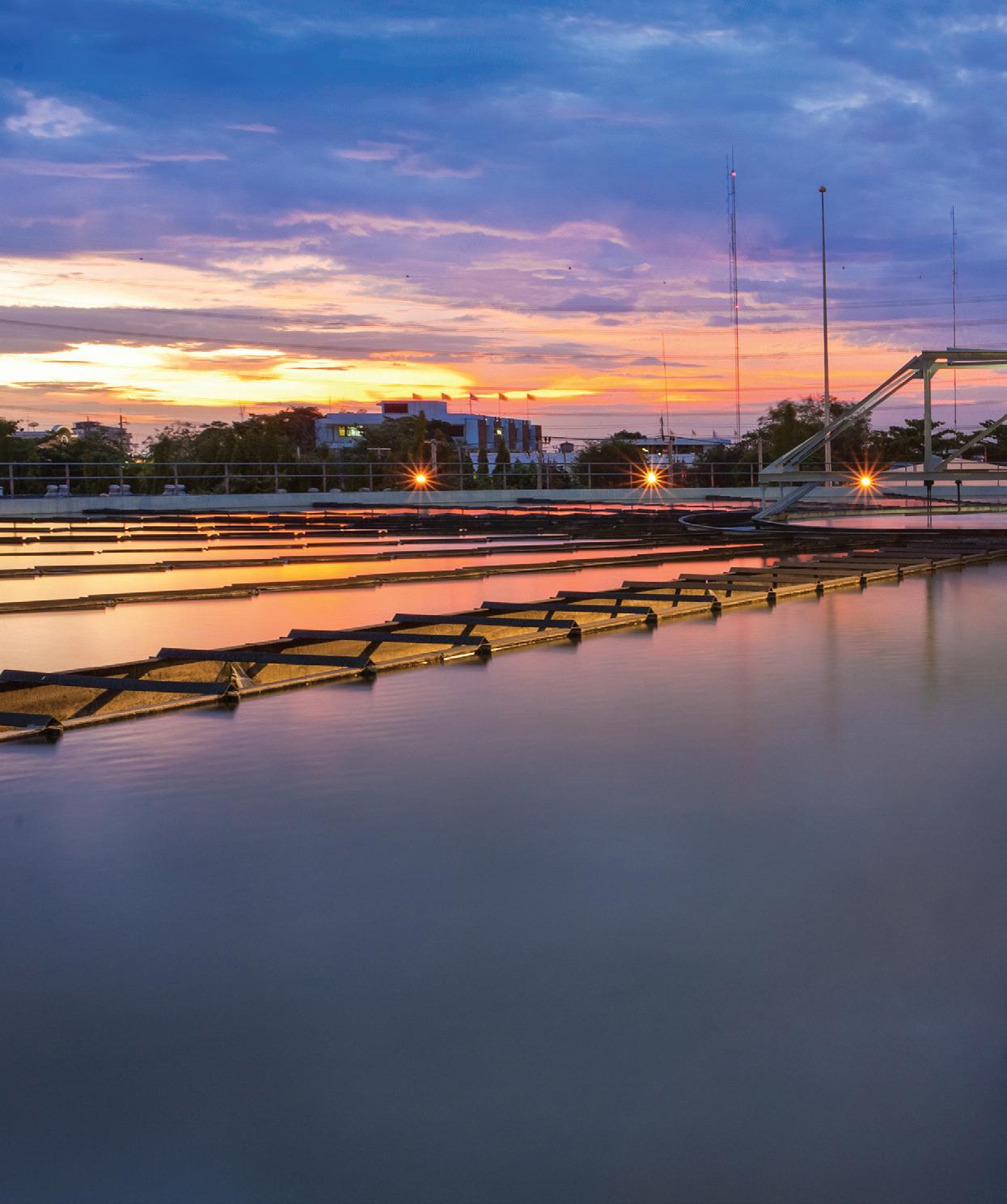
infrastructure was used at reduced capacity where appropriate and smaller low-cost dosing setups were installed where existing equipment could not be used.
Griffith City Council had collected hydrogen sulphide (H2S) data using ‘OdaLog’ devices in the field for a number of years and continued to do so after switching treatment regimes. This meant that accurate data was available with which to compare the effects of the old dosing regime to Biosol’s. System inputs, outputs and various other environmental conditions were also monitored, allowing Biosol to account for any changes in sewer conditions, such as increased or decreased load, when comparing the results of the different treatments.
REVOLUTIONARY RESULTS
Throughout Griffith’s sewer system, Biosol dosing achieved hydrogen sulphide levels that were, at worst, equal to those of the former dosing regime, and in some cases, significantly better. For instance, data from one
major pump station demonstrated a reduction in annualised average H2S of 90 per cent.
A number of other benefits were observed throughout the system after replacing the MHL and ferrous chloride dosing with Biosol. The bacteria that reduce sulphate to produce sulphides are intrinsically linked to those bacteria that produce the greenhouse gas, methane. An increase in sulphide is associated with a proportionate increase in methane. Therefore, by implication, the measured reduction in H2S should be expected to be accompanied by a proportionate reduction in the amount of methane produced throughout the sewer system.
Reduced influent phosphorus to the treatment plant was also observed under the new dosing regime. This has meant that Griffith City Council has been able to reduce the amount of alum they needed to dose at the plant for phosphorus removal, resulting in cost savings.
Utility Partner Solutions
WATER AND WASTEWATER 46

Additionally, the ferrous chloride dosed as part of the old regime, had the potential to reduce the effectiveness of UV disinfection that occurred later in Griffith’s sewage treatment process. As Biosol does not dose chemicals that obscure UV transmission, the performance of UV sterilisation has not been impeded.
Since Biosol dosing commenced, cleaner sewer pipelines have been observed. Biofilms can facilitate the build up of material (such as fat, oil and grease) on the sewer walls; this too is removed when the biofilm disperses, improving hydraulic efficiency.
COMBATTING SULPHIDES IN SEWERS
Sulphuric acid corrosion causes significant and costly damage to sewer infrastructure, including concrete pipes, pump stations, manholes and electrical components. Within Australia, the cost of asset degradation due to sulphide-induced corrosion is estimated at around $100million per year. Additionally, hydrogen sulphide (H2S) gas has a distinctive and unpleasant rotten egg smell and is a frequent cause of odour problems. As a result, many water utilities have developed odour and corrosion management strategies to combat sulphides.
Methods to combat corrosion and odour rely on knowledge of how sulphides are produced. Hydrogen sulphide is produced largely due to the action of sulphate-reducing bacteria (SRB) in anoxic (or oxygen-depleted) conditions. Such conditions are caused by aerobic bacteria consuming available
oxygen when metabolising the rich source of organic matter provided by sewage.
At the point conditions become anoxic, sulphate-reducing bacteria respond to the new conditions increasing both their metabolic and reproduction rate in the slime layer.
As the bacteria metabolise the sewage’s sulphate, a process known as the sulphide cycle occurs. The cycle involves four major stages, the conversion of sulphates to sulphide by the bacteria in the slime layer that occupy the pipe walls; the conversion of dissolved sulphide to odorous hydrogen sulphide (H2S) gas; the production of sulphuric acid (H2SO4) due to the oxidation of built-up (H2S) in the sewer atmosphere; and the corrosive action of this acid on the sewer walls and other surfaces it comes into contact with.
Currently, the most commonly used sulphide solutions involve disrupting the sulphide cycle at its second stage, by dosing chemicals that act to prevent the conversion of dissolved sulphide to H2S. However, Biosol’s solution effectively, cheaply and safely disrupts the first stage of the cycle, preventing the bacteria from producing the sulphide in the first place.
A PARADIGM SHIFT IN SULPHIDE CONTROL
Biosol’s sulphide management solution acts on the biofilm itself (the source of the problem), preventing the build up of sulphides from ever occurring. Biosol effectively causes the colonies of sulphur-reducing bacteria
in the biofilm to disperse by exploiting the chemical signals they use to communicate with one another.
Biosol’s product BRX-2DE, a proprietary blend of bacterial cell signalling chemicals (CSCs). These CSCs disrupt the normal communication signals between the bacteria which causes them to change state from a floc / biofilm form to a single cell planktonic form. As a result, the biofilm disperses and the sulphide cycle is interrupted, removing the cause of sewage odour and corrosion. As the CSC’s bio-degrade (8-12 hours in sewers) biofilm/flocs reform unless dosing is continued.
Comparatively small doses of BRX-2DE are required and the overall action of BRX-2DE can be amplified with the addition of nitrite, as was done in Griffith. Importantly, unlike many of the chemicals used in other sulphide control methods, all Biosol products are non-hazardous, reducing risk to operators and improving health and safety outcomes.
The results achieved in Griffith City Council’s sewer system demonstrate that Biosol has the potential to achieve better results than a market-leading sulphide management solution, while also being safer, reducing costs, minimising the dosing infrastructure required and potentially offering a range of other positive side effects. As a result, Biosol’s innovative solution has the potential for a paradigm shift in odour and corrosion control, offering asset owners a better way to combat sulphides and substantially increase sewer asset life.
47 Utility Partner Solutions Contact: Nick Chandler 0400 372 003 or Ross Chandler 0400 372 000 Email: sales@biosol.net. WATER AND WASTEWATER
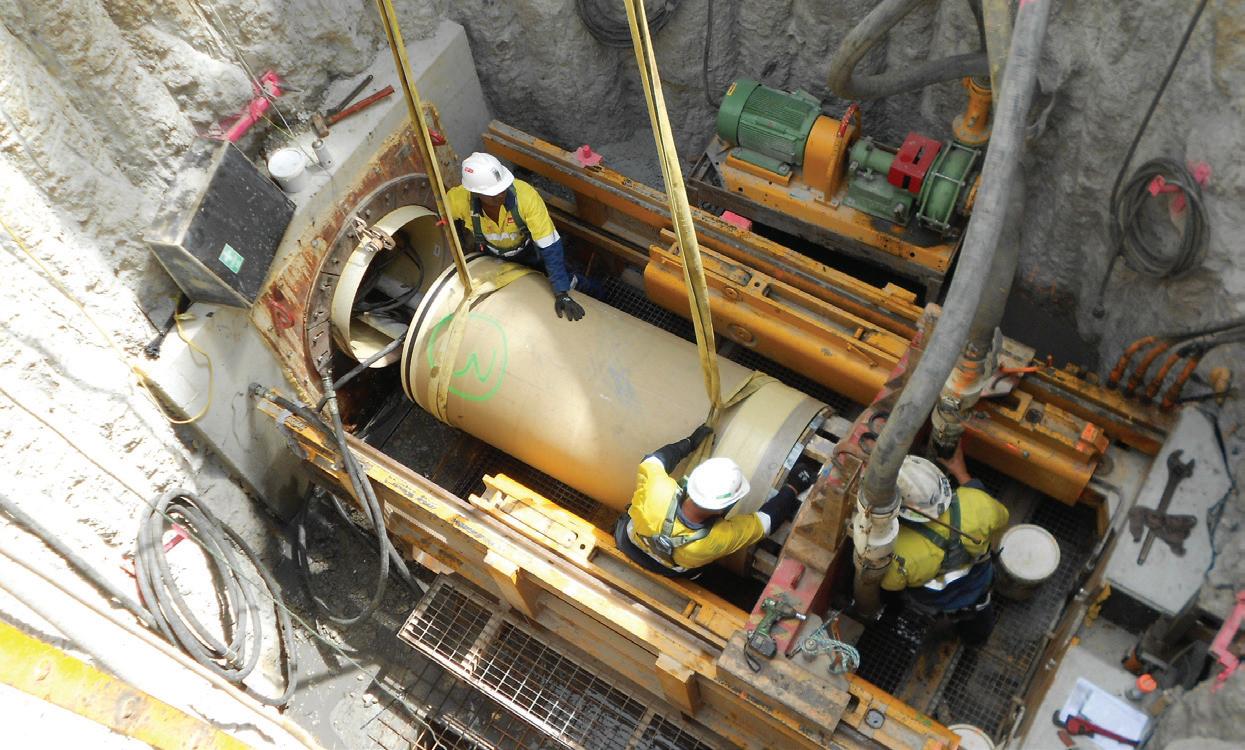
PROJECT MANAGER NAMED
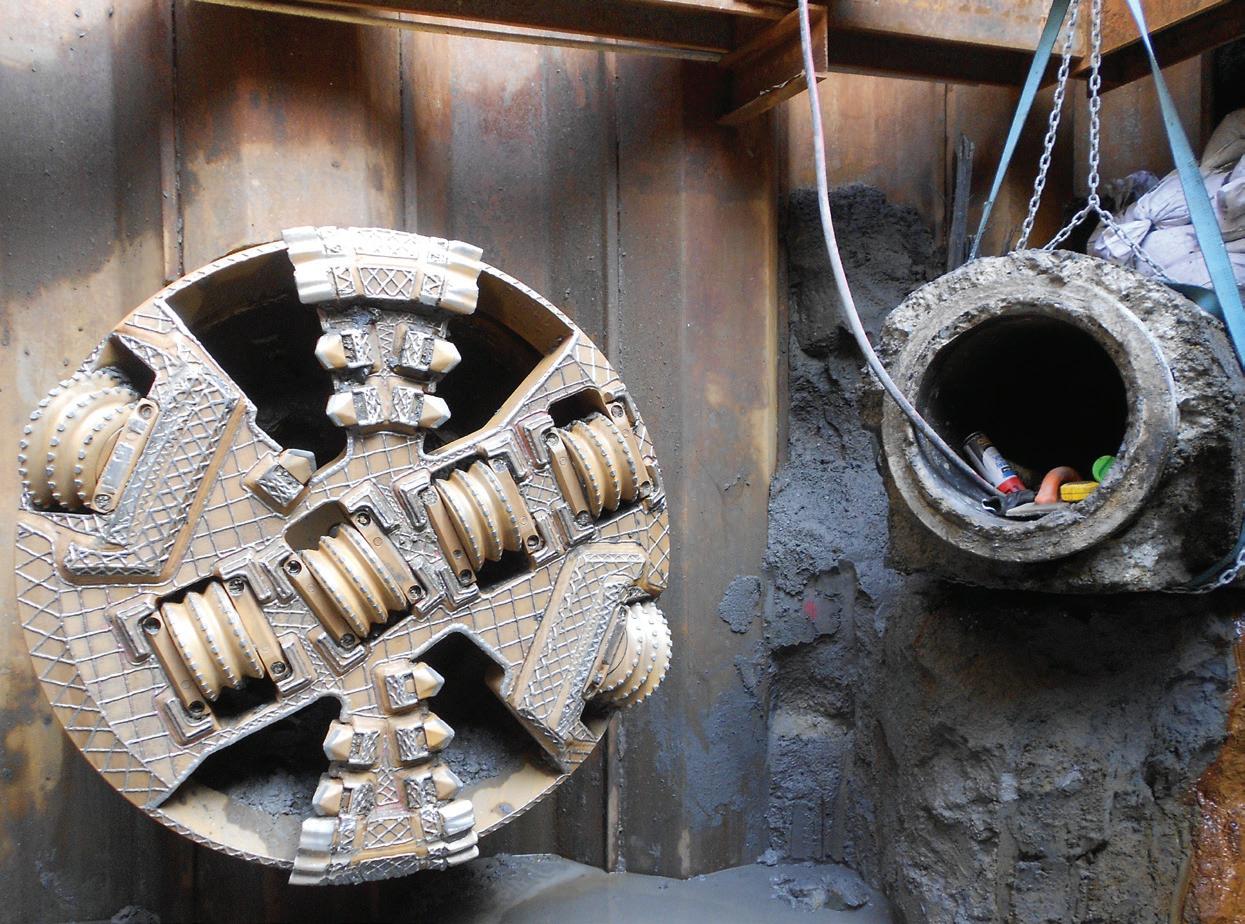
THE SIZE OF THE NEW PIPE COMPARED TO THE OLD PIPE. WATER AND WASTEWATER 48
THIS SHOT SHOWS
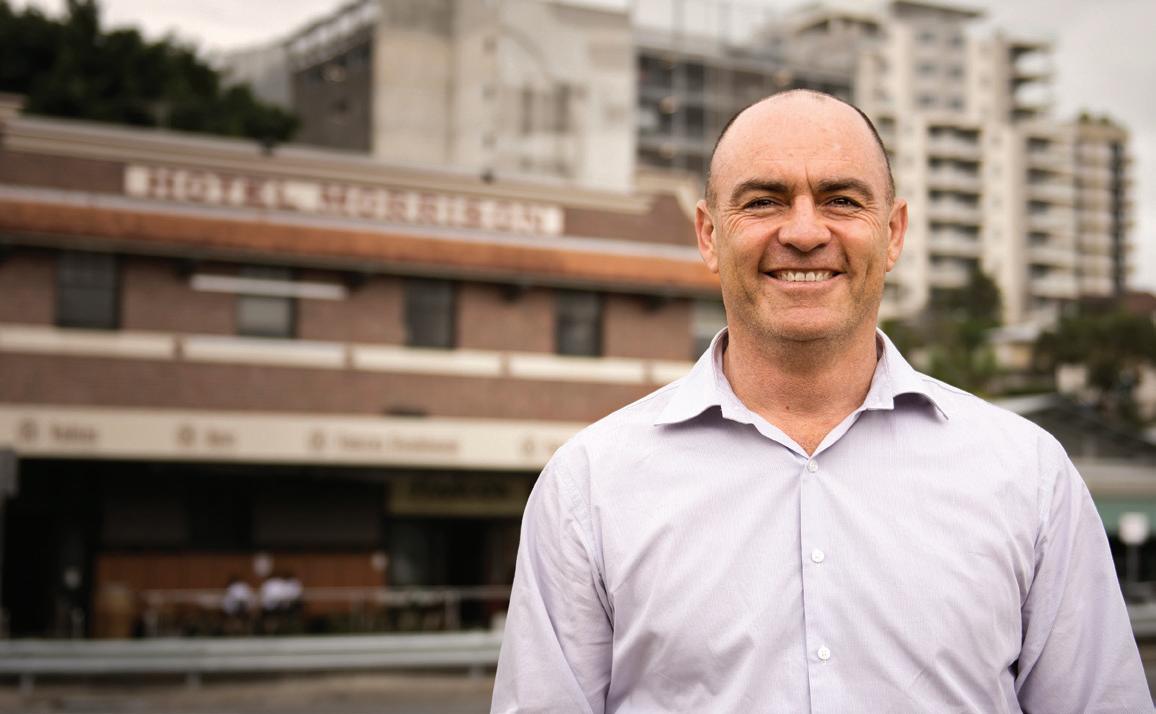
QUU’S
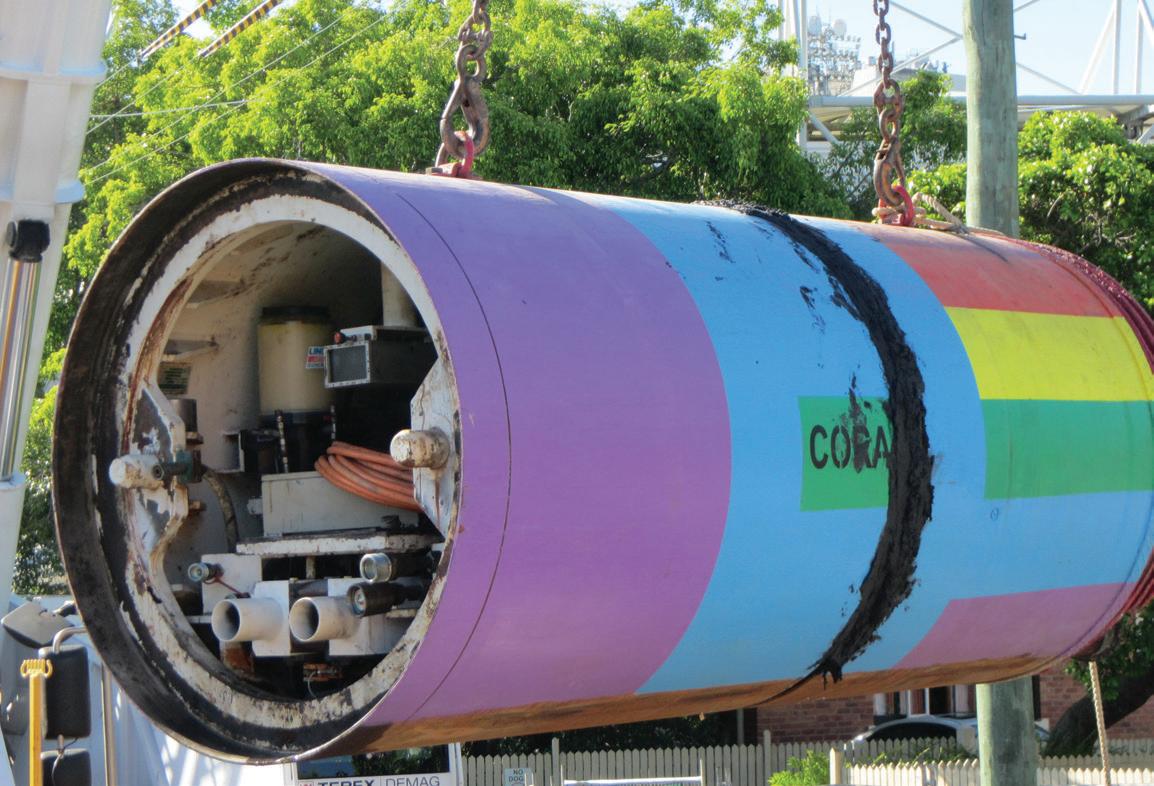
IN THE WORLD.
BEST IN THE WORLD
Not many people can say they’re the best in the world at anything, but Queensland Urban Utilities’ Steve Gibson has joined that exclusive club. He’s the first Australian in history to be crowned the best project manager in the world.
The prestigious accolade from the International Project Management Association (IPMA) was for Steve’s work upgrading the sewerage network in the inner Brisbane suburb of Woolloongabba. The five-year, $82million project is Queensland Urban Utilities’ biggest on record, and was delivered ahead of schedule and $3.2million under budget.
The project saw the installation of more than 6km of trunk sewer mains and will ensure the network caters for expected population growth.
We caught up with Steve to find out what it took to claim the world title.
IN YOUR OPINION, WHAT WERE THE UNIQUE ELEMENTS OF THIS PROJECT – AND YOUR MANAGEMENT OF IT – THAT CAUGHT THE ATTENTION OF THE IPMA JUDGES?
The most unique element of this project was the quantity and complex nature of community and stakeholder relationships. Over five years more than 6km of gravity-fed sewer pipes were installed through a densely populated area of inner Brisbane via 35 construction access shafts.
The new sewer pipe ran along three busy roads leading to the CBD – passing three schools and multiple pubs,
49 WATER AND WASTEWATER
STEVE GIBSON, NAMED THE BEST PROJECT MANAGER
clubs and restaurants. It ran under a major busway and rail corridor, over the newly completed Clem7 tunnel and outside The Gabba stadium, which is home to international cricket matches and the AFL.
This was the first major capital works project for the newly formed Queensland Urban Utilities and had massive construction impacts to high profile stakeholders.
This is why I launched a proactive, highly-targeted stakeholder engagement program two years ahead of construction. We garnered feedback from all identified stakeholders on the potential impact of the project on their operations. I also conducted individual face-to-face engagement, which included meeting stakeholders at their premises and bringing them to the construction site to explain the project.
CAN YOU TELL US ABOUT SOME OF THE PROJECTS THAT YOU’VE MANAGED OVER THE YEARS, THAT GOT YOU TO THIS POINT?
The Brisbane Aquifer Project investigated groundwater sources across the city for substitution of 20 million litres of potable water per day. This was the first big project I worked on, which was in response to South East Queensland’s worst drought in more than 100 years. I held numerous roles within this $65m project from inception in 2006 to completion in 2009, including a client representative role. This involved co-ordinating all parties to deliver the project within the extremely tight schedule imposed by the Queensland Government.
In 2008, I took over the management of the $82million Lake Manchester Dam Upgrade project and saw it through to successful completion. The upgrade ensured the dam, which was constructed in 1916 west of Brisbane, met the ANCOLD Guidelines and complied with the dam safety requirements of the Queensland Water Act 2000.
The $12million upgrade to the Enoggera Water Treatment Plant in Brisbane involved the rehabilitation of the existing plant as well as the construction of new process technology.
In addition, I’ve also managed a team of project managers delivering a number of water portfolio programs, including: Pressure and Leakage Management Program
The current scope of this program is to form 91 District Metered Areas (DMAs) across the city of Brisbane. This $64m program controls the potable water pressure by installing pressure reducing valves and telemetry to be able to remotely monitor and operate these DMAs.
Water Supply System Service Capacity Improvements
This $7million annual rolling program undertakes 80 projects per year to maintain and improve the water supply across Brisbane.
Burst Water Main Replacement Program
This $15million annual rolling program undertakes up to 90 projects per year to replace failing water reticulation mains across Brisbane.
Trunk Water Main Replacement Program
This $4million annual rolling program undertakes up to five projects per year to replace failing trunk water mains and associated fittings across Brisbane.
WHAT ARE SOME OF THE KEY LESSONS YOU’VE LEARNED THROUGH MANAGING THE WOOLLOONGABBA SEWER UPGRADE PROJECT?
I took away four key lessons from managing this project:
1. No matter how well you think you’ve planned there’s always something that will challenge you. That’s why it’s important to never lose sight of the project objective and remain flexible when considering ideas to tackle a problem.
2. Due to the nature of sewerage projects like this one it’s impossible to please everyone, but it’s important to communicate effectively to everyone. When people are armed with information provided in a friendly, caring way people are more likely to accept the outcome of a decision, even if it isn’t exactly what they wanted.
3. If you make a commitment, follow through and deliver on it.
4. In an increasingly digital age, it’s important to consider online platforms (including social media) when it comes to both proactive community engagement and risk assessments.
WHAT ARE THE KEY FACTORS UTILITIES NEED TO TAKE INTO CONSIDERATION WHEN PLANNING AND MANAGING MAJOR WASTEWATER UPGRADE PROJECTS?
Traditionally, the financial and technical requirements for projects are considered first and foremost. I believe community impacts and in turn stakeholder engagement needs to be the number one factor to consider. This project has proven that the time spent planning, investigating and informing all key stakeholders really pays off, significantly improving the delivery of a project. Getting key stakeholders involved early and gaining their trust and confidence will allow you to collaboratively overcome any issues that arise.
WHAT’S NEXT FOR YOU AT QUU?
I’m ten months into my new role at Queensland Urban Utilities as Program Director Wastewater Network. I lead a team of 14 project, design and contract managers delivering a $65million annual renewal and enhancement capital program for the sewer network. I’ll also be keeping my project management skills honed with a new sewer upgrade under a heavily urbanised area of inner Brisbane – Fortitude Valley. Construction on that project is due to start mid-2016.
WATER AND WASTEWATER 50
Hardman Chemicals –World class products, & a history of success
Manufacturing water and waste treatment chemicals in Australia since 1948.
ALCHLOR RANGE
The coagulant of choice for potable water
The Alchlor range of Aluminium Chlorohydrate products has been developed by Hardman Chemicals to cover a range of water treatment conditions, providing the highest performance for most applications.
Advocates Experiences:
“Stopped dosing lime and soda ash for pH and Alkalinity correction”
“Substantial reduction in chemical dosage and aluminium residuals”
“Superior membrane filtration performance”

MULTIFLOC RANGE
Flocculant solution for a range of waste waters
Applications:
• Municipal sewage treatment
• Mining & industrial plants
• Food processing

• Abattoirs, feedlots & rural sale yards
• Waste transfer stations & composting plants
• Phosphorus removal from effluent
Call us today for technical assistance and evaluation of your water process on +61 2 9624 1333 www.hardman.com.au PTY LTD
DIGGING DEEP FOR MELBOURNE’S EXPANDING POPULATION
700 new homes within Clyde North’s new Kilora Estate (VIC) will now be connected to a 13m deep branch sewer line. Despite unpredictable ground conditions and wet weather, the sewer was constructed on time via 1.3km of trenchless technology, and will go on to provide a muchneeded service for the expanding population of Melbourne.
Califam Constructions was chosen as lead contractor, with Pezzimenti Trenchless brought in to complete trenchless construction. SMEC Urban as project manager oversaw the installation, which is now connected into the South East Water service.
Because of the project’s impressive depth due to existing sewer levels and contour of the land, traditional open-cut construction was off the cards, with microtunnelling providing a much faster, safer and more cost-effective solution.
“Depths for these types of installations are typically around 7-8m,” said Joe Pezzimenti, Director at Pezzimenti Trenchless.
“This depth of 13m meant opencut would have been too slow, let alone unsafe for workers and very expensive.”

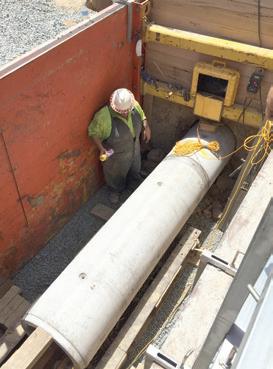
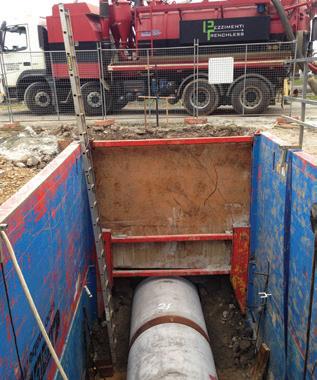
Management of groundwater on site was also a major consideration for the team at Pezzimenti Trenchless. To keep groundwater at bay, 24 hour pumps were installed and continued to run until works were complete.
The type of ground was also a great challenge for drilling, as it ranged from hard siltstone to non-supportive clays.
“The ground conditions continued to change across the drill site,” said Mr Pezzimenti.
“As each type of ground required a different cutting tool, cutters needed to be modified to handle the changing ground conditions. As well as this, the head needed to be retracted on a couple of occasions to change over cutters on our microtunnelling heads.”
“Wet weather compromised our access to the site on many occasions, and certainly kept us on our toes,” said

Unit 2 / 85 Heatherdale Road, Ringwood Vic 3134 PO Box 2500, North Ringwood Vic 3134 P: (03) 9872 4596 | F: (03) 9872 3293 | E: info@pezztrenchless.com.au
storm water, gas
electrical conduits.
in
sizes
Next Generation
WATER AND WASTEWATER 52 Utility Partner Solutions
Still the market leaders in laser guided microtunnelling Bore diameters from 325mm up to 2800mm Used for gravity sewers, water mains,
and
Specialists in “free bore”, sleeve boring and pipe jacking
all
The
in Trenchless Technology
Mr Pezzimenti.
A large amount of time was also spent setting up each launch shaft along the project line, says Mr Pezzimenti. Because they were so deep, safe entry and exit was of highest priority. Califam provided specially-built shoring shields which made the job as safe as possible for each of the workers.
HOBAS Jacking pipe was used throughout construction with outer diameters ranging between 324mm, 376mm to 550mm. The longest single drive was 131m in length and 80 per cent of the job was completed with pipe of 550mm in OD.
The construction was straight on grade, in line and from manhole to manhole, with grades of the pipeline up to 1 in 400. This grade is very flat with no room for error.
According to Mr Pezzimenti, working with Califam Constructions was a great success. “CCTV inspections were carried out shortly after construction
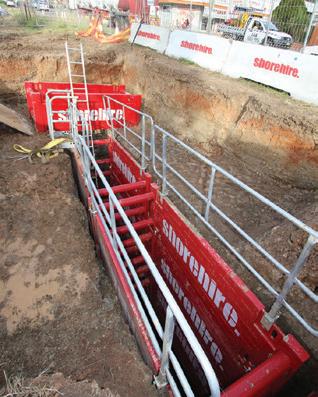
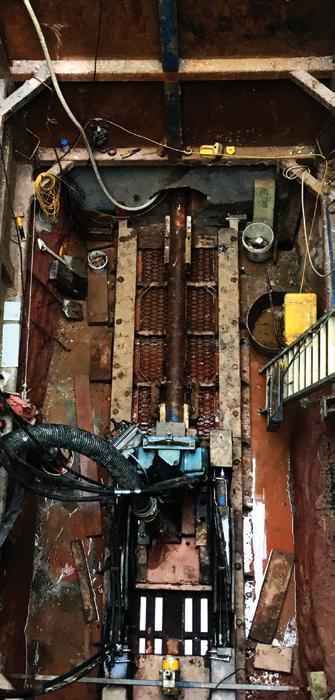
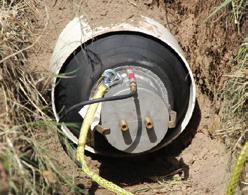
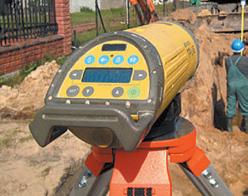



revealing that the pipeline was successfully installed on line, on grade and within tolerance. We can definitely thank the excellent support and teamwork offered by the guys at Califam for that.”
The pipeline was completed in July 2015.
ABOUT KILORA ESTATE
Kilora Estate is located approximately 44km south-east of Melbourne and is comprised of 366 housing lots. The area is subdivided into 14 residential areas and includes a community facility, state primary school, regional open space and drainage corridors.
The construction of the Kilora branch sewer is part of stage 1 of development, with South East Water in charge of the area’s sewer outfall strategy. SMEC provides engineering, surveying, planning, and urban design services across the site.
www.shorehire.com.au LASERS . TRAFFIC STEEL PLATES PIPE TESTING SHORING PROPPING FOLLOW US ON A PROUD AUSTRALIAN FAMILY BUSINESS 1300 SHOREHIRE - SYDNEY MELBOURNE BRISBANE NEWCASTLE WATER AND WASTEWATER Utility Partner Solutions 53
A LUXURY MOST NATIONS CANNOT AFFORD
While it’s something we might take for granted, in developing countries, environmental protection is a luxury not available to the majority of the population.
This is because such protection is preceded by the need for economic development, which allows for trade and industry – and importantly, the fighting of disease and hunger. Side by side with economic development, there is social development, improving literacy and education and then the establishment and protection of human rights.
Only then does a country focus on the first stage of environment protection – sanitation – the collection
and treatment of sewage. Next comes the addressing of health issues with activities such as reducing child mortality. Improving food standards with consumer health in mind is the second stage of environmental protection.
For transitioning countries, protecting the environment is a very low priority. And it would
Adrian Minshull is a Director of the Hydroflux Group, a team of water and wastewater treatment experts. More information about Hydroflux can be found at www.hydroflux.com.au.

appear much of the world still has a long way to go before can seriously consider environmental protection as an important need.
Given the above, is there anything we water professionals can do? The answer is yes.
First, we need to design systems that cost less to build and operate for every stage of economic development for less-developed nations.
Second, we need to do it with a level of urgency.
Third, we need to pull back on investing time and money in achieving fractional improvements to a developed nation’s water systems and spend the money designing systems that developing nations can afford.
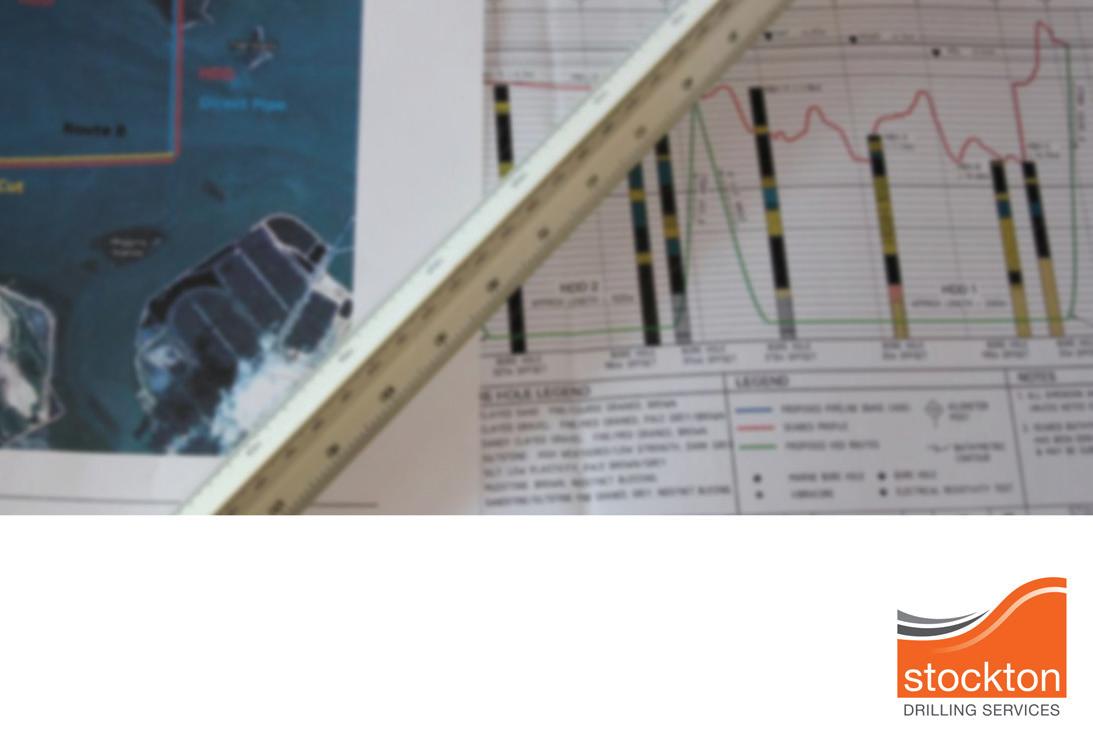

54 WATER AND WASTEWATER Utility Partner Solutions
There’s little point developing new and innovative products for an industry if the industry itself hasn’t been consulted on their needs and requirements.
This is the approach Odour Technologies adopted when they set out to develop a new air release valve for use in the wastewater sector. The company looked at the problems experienced by wastewater operators and water engineers with air release valves, and over a period of five years, they designed and tested a double chamber valve that overcomes previously experienced faults found in single chamber valves.
The result is the VS-4 Smartvalve, which is now the valve of choice for more than 30 councils along Australia’s east
coast. Some of the larger councils now have large numbers of VS-4s in operation, with reports of 100 per cent success rates for reliability and cost savings.
A VERSATILE OPTION
The VS-4 has solved a leaking issue on a large volume main with relatively low head pressures, where prolonged surging was causing the existing single chamber valves to leak heavy metal contaminated water onto grazing cattle pasture.
In another case, the VS-4 has been modified to trap and hold the solids in coal seam gas mains where any contaminated water leakage is of serious concern to both property owners and government. The previously used single chamber valves were failing in this regard.
EXPORT OPPORTUNITIES
With the VS-4 well proven in Australia, NZ and the US, the next major step is seeking additional overseas markets. With many countries now covered by the patenting process, Odour Technologies is now actively looking to export the VS-4 through interested parties.
Odour Technologies is utilising the potential of larger, well established companies such as Ferguson Waterworks in the US to further promote the VS-4.
The web site www.vs-4.com has a video explaining the major benefits of the VS-4 Smartvalve. This video can be supplied with a voice-over in any language for any interested parties.

THE AMAZING VS-4 SMARTVALVE Australian designed and manufactured from 316 stainless steel • Simple on-site servicing • Rated 18 Bar • Seals at atmospheric pressure • Guaranteed anti-hammer at all times
Auto throttled against premature closing • References and testimonials available • Selling Aus, NZ and USA. Export opportunities available. USE THIS AD FOR A FREE TRIAL For more information: and click on the video Odour Technologies Pty Ltd enquiries@odourtechnologies.com.au Tel 61-7-3287 7020 Mob 0414 861 000 International Patents and Patents Pending www.vs-4.com INDUSTRIAL CLIENTS AND MANUFACTURERS
Odour Technologies welcomes approaches from Australian wastewater authorities and consulting engineers, and can provide case studies, comprehensive technical details and no-obligation trials. For more information please contact Peter Beetham on 07 3287 7020 or peter.beetham@odourtechnologies.com.au. WATER AND WASTEWATER Utility Partner Solutions 55
•
TEAM UP IN BREAKTHROUGH TECHNOLOGY
TURNING ON THE BIOGAS TAP
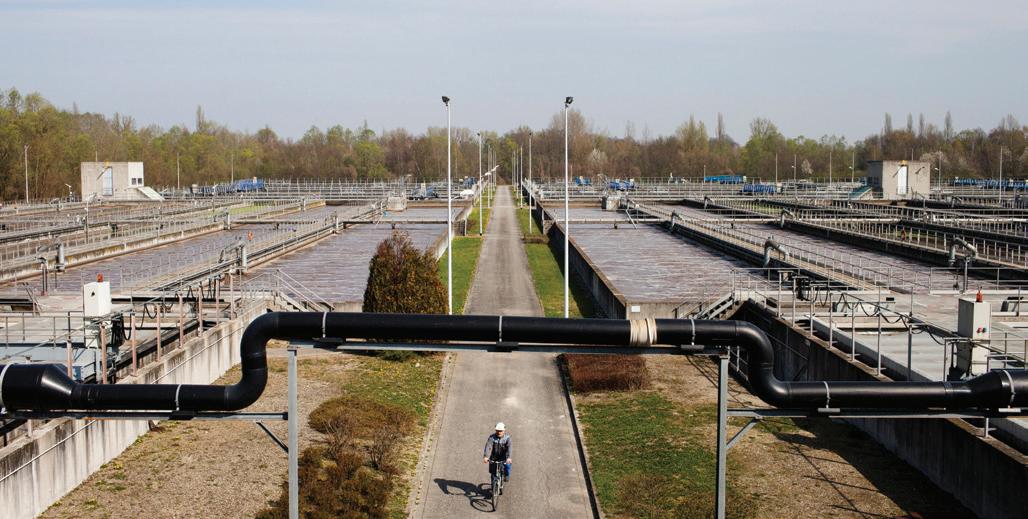
THE
Across the world, biomethane (refined biogas) is used to power cars, towns, cities and industry. In Australia, the creation of renewable energy through biogas recovery is in many ways still in its infancy. Mark Lautre, General Manager of Operations at SUEZ in Australia & New Zealand, argues that 2016 is the year that the wastewater treatment plant needs to be seen as a resource.
Arecent study by the Australian Academy of Technological Sciences & Engineering said that wastewater is largely an untapped resource in Australia. Untapped resources embedded in wastewater represent significant economic potential, with a present value of more than $5billion1
The report found that once a treatment plant reaches typical mid-range size, the generation of biogas from sewage and waste and cogeneration of electricity becomes financially viable. Anaerobic codigestion, high rate aerobic treatment and low energy mainline anaerobic treatment methods are among the favourable options touted.
In Australia, there has been preliminary success in anaerobic co-digestion, the practice of introducing additional organic waste streams to the traditional anaerobic digestion process. An investment in co-digestion can deliver operational and maintenance savings with the potential for a new revenue stream from received organic wastes.
SUEZ and its joint-venture partner,
Broadspectrum, in collaboration with SA Water, operates and maintains the water and wastewater services in metropolitan Adelaide.
Following a successful research program in 2010, a fully automated co-digestion plant was commissioned at the Glenelg Wastewater Treatment Plant in July 2013. The plant now receives industrial liquid waste such as sugars, alcohols and other organic rich wastes that provide a boost to the site’s anaerobic digesters.
In the first 2.5 years of operation, the co-digestion plant at Glenelg received 22.5ML of liquid waste products which produced an extra 1,790MW of energy. This makes the Glenelg plant a bigger source of renewable energy than any single solar installation in South Australia. The generation of renewable energy has reduced the plant’s reliance on natural gas and grid electricity, and reduced its carbon footprint by producing up to 84 per cent of the power required on-site.
On a global scale, technology is further advanced. Biogas is transformed into biomethane, which is injected directly into natural gas
networks or used as a vehicle fuel source. Since September 2015, SUEZ has demonstrated its renewable energy capability by assisting the Strasbourg Urban Community to become the first in France to inject biomethane produced from a local wastewater treatment plant into its natural gas network. In collaboration with the local distributor of natural gas, more than 1.6 million cubic metres of biomethane will be produced from wastewater each year. This provides a local, sustainable and low-carbon source of renewable energy.
SUEZ has been expanding the boundaries of biogas recovery, including opening a dedicated biosolids methanisation laboratory, with more than $15million invested in research and development in the last eight years in this area alone. The opportunity for Australia and New Zealand is to now realise some of the $5billion potential in our wastewater.
1 Wastewater – An untapped resource? (2015) Australian Academy of Technological Sciences and Engineering (ATSE).
BIOGAS 56
STRASBOURG WASTEWATER TREATMENT PLANT, WHERE BIOMETHANE IS PRODUCED AND INJECTED INTO THE NATURAL GAS NETWORK.
Utility Partner Solutions

Smart and reliable solutions creating renewable energy from wastewater and organic waste
Phone +61 2 8759 7900 suez.com.au drinking water production | seawater desalination | wastewater purification reuse opportunities | biosolids management | network management SUEZ Water & Treatment Solutions for the municipal sector a new form of energy
ELIMINATING INCONSISTENCIES IN SUBSURFACE UTILITY INFORMATION
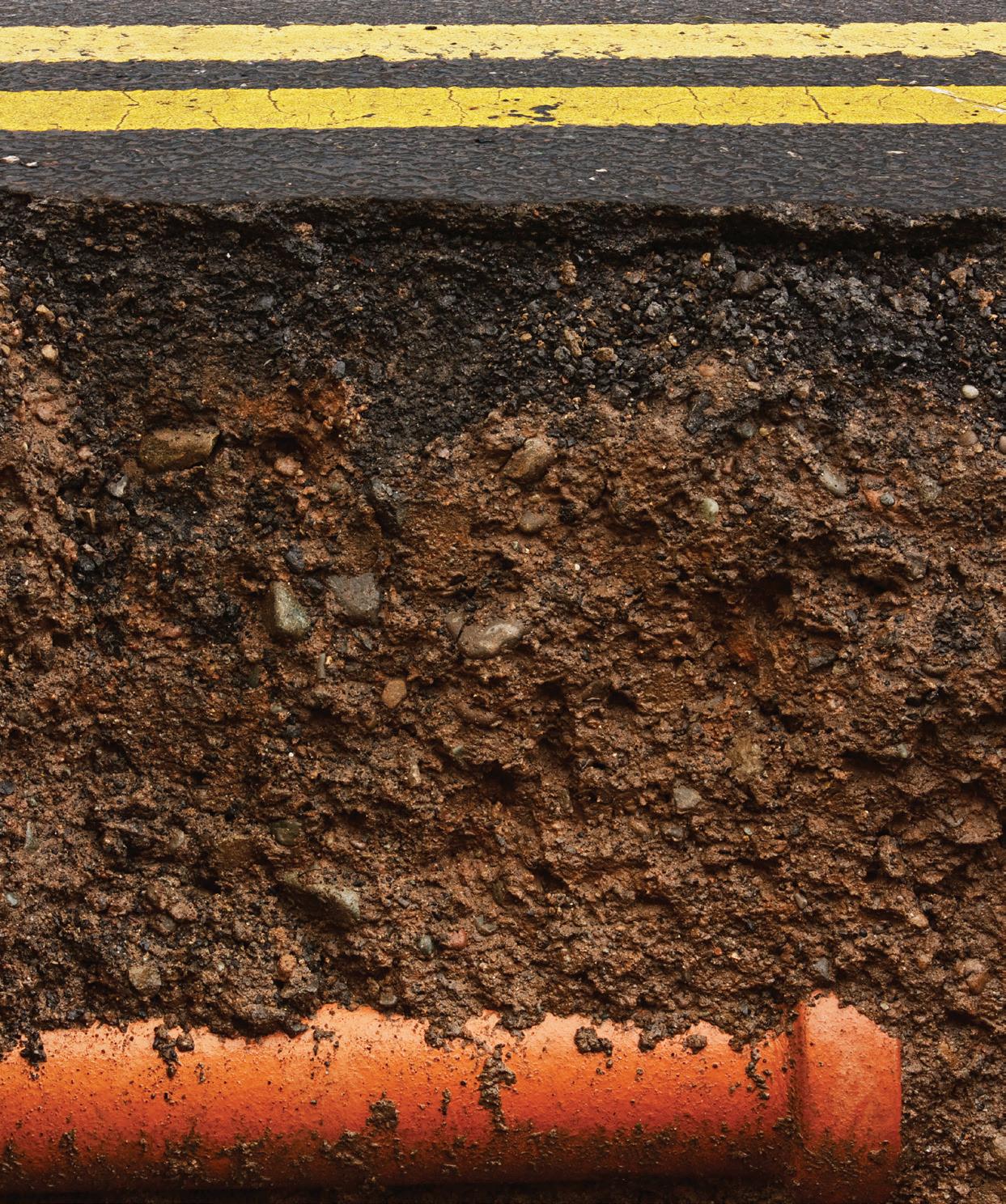
AS5488-2013 Classification of Subsurface Utility Information provides a consistent method of conveying subsurface utility information for a variety of purposes throughout the lifecycle of the asset, fit for purpose. In the February 2015 edition of Utility, AS5488-2013 committee member Bruce Potter discussed some of the background to the development of the standard and how it is intended to be used. Now he explains how the standard benefits the lifecycle of subsurface utility information for a variety of stakeholders and the challenges currently experienced.
UTILITY LOCATION 58
AS5488-2013 IS HELPING TO REPLACE CURRENT INCONSISTENT PRACTICES COMMONLY PLAGUING THE ACCURACY OF, AND CONFIDENCE IN, SUBSURFACE UTILITY INFORMATION.
The lifecycle of subsurface utility information, particularly through the design stages, is a constantly revolving four-stage linked process – Investigation, Design, Construction and As Constructed. Throughout this process, the main stakeholders involved are the utility locator, engineering professional and authority/asset owner, each with a different perspective with a common cause – AS5488-2013.
Of the stakeholders involved in the lifecycle of subsurface utility information, utility locators are currently the most experienced users of AS54882013, as it represents their industry. They are frequently called upon to provide recommendations, in particular, for the engineering professional who may be unfamiliar with AS5488-2013 and the equipment and techniques used to obtain utility information.
In the planning stage, the number, interval and physical location of excavations (potholes, strip trenches) and electronic detectable points are invaluable for the utility locator to adequately procure appropriate equipment to meet the tolerances in accordance with AS5488-2013.
Procuring an appropriate vacuum excavation unit for example is largely dependent on the volume of excavated material, taking into consideration operational logistics, including proximity to the site area, terrain, waste disposal and on-board resources. These considerations are in addition to procuring traffic management planning, including permits and the design of traffic guidance systems.
To the engineering professional, knowing where existing, designed and newly-constructed subsurface utilities are spatially located is critical to understand the constraints they face, and to confidently assess and rectify the effects of potential underground utility conflicts throughout various stages of design.
Without a consistent approach to classifying subsurface utility information, the risk of conflicting and
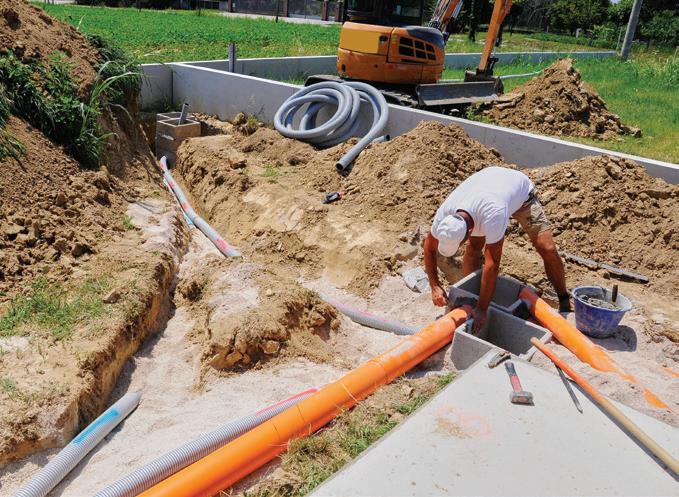
inaccurate information dramatically increases. This risk ultimately undermines confidence in knowing which source/s of utility information to trust and how best to utilise this information, knowing they are liable for the outputs and decisions made.
A lack of confidence provides an opportunity to misinterpret; make assumptions by attempting to ‘fill in the gaps’; and then share this inaccurate information, often leading to unnecessary design conflicts, ill-informed design decisions and a misrepresentation of the location and characteristics of a subsurface utility.
The ‘errors’ are transferred onto those involved in construction, causing issues with redesigns, procurement, timeframes, costly conflicts and financial friction by all parties involved.
The challenge for the engineering professional is breaking from current practices of transferring the risks associated with a poor attempt to obtain, collate and convey subsurface utilities, regardless of their status, during the design stage. A design based on poorlyinterpreted subsurface utility information questions the validity of the design and brings into contention the legalities of the engineering professional’s duty of care.
In general, engineering professionals are unaware information contained within their utility designs essentially mirrors those in AS5488-2013.
A stormwater, sewer or water main detailed design, for example, would usually consist of sufficient information to construct, including horizontal absolute spatial position (easting, northing & AHS surface level), invert or obvert level (AHD), utility size, configuration, material and trench type, and metadata information including date, revision, and supplementary information contained within notes.
In essence, the utility design shares the same attributes and metadata as Quality Level A (QLA) of AS5488-2013, meaning the engineering professional can adopt this standard as a guide to indicate an appropriate level of utility design information required though the various stages of design.
As a guide, utilities designed during the concept stage generally would require Quality Level D (QLD) accuracy, and utilities designed during detailed design would require Quality Level A accuracy. Quality Level C (QLC) and Quality Level B (QLB) would indicate utilities designed during preliminary and design development stages respectively.
UTILITY LOCATION 59
THE LIFECYCLE OF SUBSURFACE UTILITY INFORMATION EVOLVES OVER THE INVESTIGATION, DESIGN, CONSTRUCTION AND AS CONSTRUCTED STAGES.
To obtain existing subsurface utility information, the engineering professional has an obligation to properly convey their accuracy requirements by acknowledging the attributes and metadata in each quality level. A general understanding of the equipment used for each quality level, including its associated tolerances and the expected deliverables in terms of point and line data, would greatly benefit the development of a utility survey scope of works.
Many authorities across Australia are either considering, in the process of implementing, or now require newly-constructed subsurface utility infrastructure, utility attribute and metadata information to be documented in accordance with AS5488-2013 Quality Level A (QLA).
This initiative by authorities and asset owners suggests a shift in thinking from previous methods regarding how subsurface utility information is obtained and conveyed from the As Constructed/ As Built process, but is limited to
newly-constructed subsurface utility infrastructure collected and conveyed prior to backfilling.
The challenge for authorities and asset owners is knowing how to manage incoming As Constructed/As Built and data gap AS5488-2013 information while maintaining an existing database that may not be classified by quality levels.
If inconsistent information is uploaded to the likes of Dial Before You Dig, or provided directly, the end users also receive the same inconsistent level of information.
Currently, Telstra is the only asset owner listed on DBYD who now supplies their data to Quality Level D in accordance with AS5488-2013. Other authorities and asset owners alike have an opportunity to adopt AS5488-2013 and nominate an appropriate quality level on the subsurface utility information they supply.
Ultimately, AS5488-2013 provides the framework and a common language for the utility locator, engineering
professional and authority/asset owner, replacing current inconsistent practices commonly plaguing the accuracy of and confidence in of subsurface utility information throughout an asset lifecycle.
Bruce Potter is a current Standards Australia, Subsurface Utility Engineering committee member (IT-036), who represented Engineers Australia in the development of Australian Standard AS5488-2013 Classification of Subsurface Utility Information (SUI). He is a Certified Engineering Technologist (CEngT) experienced in all aspects of civil engineering and utility design and a specialist in the field of Subsurface Utility Engineering, encompassing professional utility coordination, utility data management, field data gathering and utility asset management.









































60 UTILITY LOCATION
Registration Now Open
Enquire today about Exhibition and Sponsorship opportunities.
ENA invites your business to participate as a Sponsor or Exhibitor in the only national Conference and Exhibition developed by the industry for the industry.
Join the industry’s leading asset, technology and service providers by becoming an exhibitor or sponsor at Energy Networks 2016.
Additional features in 2016 include an Operational Best Practice Workshop for network business line managers and technical staff and a Product and Service Demonstration Area. The ENA will again be holding a Meet the Industry Breakfast which was successfully introduced in 2014.
Don’t miss out on this opportunity to put your brand in front of key industry players and decision-makers.
Energy in Transition
For all sponsorship and exhibition queries, visit the Sponsorship and Exhibition page of the website or call Helen McGowan at the Conference and Exhibition Office on D: +61 3 9907 8628 or E: Helen@wsm.com.au W: www.energynetworks2016.com.au

Silver Sponsor
Espresso Bar Sponsor Satchel Sponsor



www.energynetworks2016.com.au @EN_2016
Affiliated Partner
Platinum Sponsor – Social
Media Affiliate Media Affiliate Media
Name Badge and Laynard Sponsor
Partner
Over recent months I have been attending various locator meetings and forums. A common topic that has always popped up in discussions is what could have been done differently to better protect our underground assets, whether it is from the locator, site works team or asset owner’s perspective. The following is a brief insight into situations encountered by locators where underground assets have been left vulnerable, and what could be done to improve the situation.
HOW A LOCATOR CAN HELP
Site markings – make sure your client understands your colour coding, service abbreviations and quality levels if need be. In a perfect world, everyone would use and understand AS5488, but this is not always possible. When I work at night I cannot see blue paint on green grass, so I have to make adjustments. Some companies have their own colour coding system to avoid damages. There have been many times where communication cables have been marked in white, only for a third party to turn up and damage the cable because they thought it was their excavation markers. Coding and colours are a crucial part of site communication.
Communication – if you have been unable to locate a particular service that is listed on plans, ensure you have documented this and notified your client. Suggest

an alternative way to try to locate the service, or whether there is there a way the client’s job can safely proceed. The client can then decide which way is a suitable/cost effective/reliable way to continue.
WHAT CAN WE DO DURING SITE WORKS?
Maintaining site markings – quite often a site services search will be coordinated at the beginning of a project. The locator has been to site and used spot paint or a peg system to mark locations, but as the job progresses and excavating and building has commenced, the pegs and marks have been lost. This means the landscaper might turn up and while planting a tree damages a service. If the service locations are required for the duration of the project then project management needs to either have the locations surveyed/reported, or ensure the service locator returns to refresh the markings prior to possibly damaging works commencing.
Understanding site markings – if you have taken the time to engage a service locator, then give them the time to walk through the site and communicate their findings to you. Some sites now need a services search so they can tick a box for work to proceed by obtaining a dig permit, but the services found may impact the safety of your staff, other contractors and the public.
62 UTILITY LOCATION
ARE WE LEAVING OUR UNDERGROUND ASSETS VULNERABLE?
 by Natalie Hunter, Vice President National Utility Locating Contractors Association
by Natalie Hunter, Vice President National Utility Locating Contractors Association
CAN ASSET OWNERS HELP PROTECT SERVICES?
A locator had previously located Company A’s optic fibre along a road by directly connecting to a trace wire. The same locator returned to the site 12 months later and found that Company B has now run an optic fibre through Company A’s conduit and the trace wire was gone. There was approximately 1km between pits and the job site was in the centre of the two pits. The locator could not connect to a trace wire anymore and there was too great of a distance between pits to insert a trace rod. Ground-penetrating radar was used, but due to the ground being clay no result was achieved. The optic fibres are now both susceptible to damage because they cannot be electronically located due to someone removing the trace wire.
Greater use of electronic marker systems – it is a requirement of Telstra Accredited Plant Locators to have an EMS/transponder locator as part of their tool kit to
locate optic fibre. Many locating contractors I have spoken with have a multi-frequency EMS locator; therefore it can be used for not only communications but also for water, sewer, electricity and gas purposes. These electronic marker systems often look like a ball, disc or carrot, but are great markers in such instances where there may be empty conduits left in situ for future use, non metallic pipes crossing roadways or where pit access may have been built over. For example, earthworks that have covered sewer manholes around sports fields to build a hill for spectators.
Plans – the more information that can be provided about assets in the ground the better, even if the asset is disused. For example, there may be a disused CICL water pipe still in the ground with a replaced UPVC section but only the UPVC pipe is shown on plan.
If you need any further advice please visit the National Utility Locating Contractors Association (NULCA) website, www.nulca.com.au, for a list of NULCA member locators for your state.
63 UTILITY LOCATION
Changes to Telstra Accreditation:
WHAT DOES IT MEAN FOR LOCATORS?
by Anthony Johnstone, Access Detection
In the last three months, locators throughout Australia who have had to renew their Telstra accreditation have had to complete a new process required by Telstra. The new accreditation process is part of Dial Before You Dig’s Queensland Locator Certification.
Locators no longer have to attend a course and be signed off as competent and receive accreditation to locate Telstra plant. But a word of warning, while the course is no longer required, the process to competency is far more stringent than it used to be, and a locator needs to understand both the theory and practical use of EMF locators to be able to receive this accreditation. I would highly recommend getting up to speed by using one of the selected training organisations like the National Utility Locating Contractors Association’s two-day course – this will give you enough information and locating prowess to better pass the theory and practical. This process is not recommended for beginners in the industry.
So what equipment is now required to become a Telstra locator? The most important piece in your kit will be your pipe and cable EMF locator. This will need to have a minimum of two frequencies (three is preferred), a separate peak and null mode, along with the ability to read current measurement. Extra equipment which is now mandatory includes a transponder locator which locates the 101.4 KHZ telecommunication markers (Telstra requires a single frequency, DBYD recommends multi-frequency), a traceable rod and sonde, along with your standard safety equipment that includes two lid lifters, safety barriers and a gas detector.
For the amount of times you will probably locate
transponders, having a locator with an inbuilt antenna only adds weight to your locator. And if your locator requires servicing or repair, you are down a locator. Having a separate transponder locator gives the operator the flexibility to move it around with crews when needed, and when servicing is required you still have your locator. I would not recommend purchasing signal frequency transponder locators, as some of the fibre optic network from other asset owners use frequencies including a sewer transponder.
Traceable rods and sondes are another inclusion and with the new equipment list I suggest using a traceable rod with a multi core cable with a minimum diameter of 6mm. This is due to the fact that if one of the cores breaks, you can still trace it with the remainder of the cores. 4.5mm rods are normally too small and are harder to push up ducts, especially if there are cables shared with the conduit.
The days of sliding lids of Telstra pits with one lid lifter are gone, and the possibility of damage to cables has been increased since nbn began sharing pits with Telstra. You must have two lid lifters and lift the lid up to ensure no damage occurs.
If you require any further information you can contact Telstra, Dial Before You Dig Queensland, or NULCA, who can assist with answering your questions. You can also visit www.dbydlocator.com.
If you have any questions on the equipment required, please don’t hesitate to call Anthony Johnstone from Access Detection on 0438 777 281 or email anthony@accessdetection.com.au.
64 UTILITY LOCATION
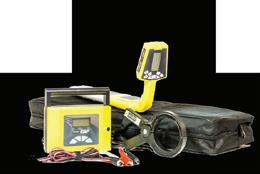


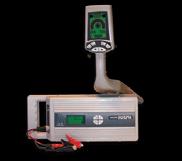


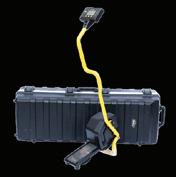
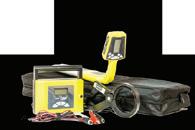
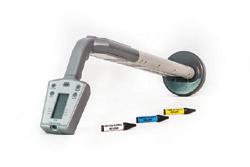




SUBSURFACE INFRASTRUCTURE The Google Earth of
When Keyhole Inc first launched its Earth Viewer app in 2001, few would have imagined the impact it would have on the world. When Google acquired the company in 2004 and relaunched the app as Google Earth in 2005, the popularity of the app exploded, and so did its number of uses. Whether it’s students wanting to understand the geography of far-flung locations, or businesses using data layers to locate target demographics, the potential uses for the app have expanded significantly in the last decade.
Now, there’s an Australian-based company that wants to take the Google Earth concept one step further – further underground, that is. Utillix is a company with a simple vision – to show utilities, businesses and residential users what lies beneath their feet.
Utilities and contractors who deal with subsurface infrastructure are familiar with the age old problem of trying to identify what assets are underneath the surface before any surface excavation can begin. For commercial contractors, traditionally, the process involves acquiring paper plans, and attempting to interpret as-built drawings
– sometimes handwritten – to ascertain where particular assets are. For the average householder, it usually means trying to make sense of Dial Before You Dig plans, which can be unfamiliar and confusing to those that don’t deal with such plans on a regular basis.
Utillix is aiming to make this guessing game a thing of the past, by providing users with an online view of the subsurface landscape. Existing assets are displayed on the map using spatially coordinated data, which ensures users have centimetre accuracy on where assets are located.
Users can also add their own asset data to Utillix, by adding photos and GPS coordinates, helping to enhance the understanding we have of the subsurface assets in place around Australia – and if the Utillix founders have their way, around the world.
The Utillix app is currently in development, and its founders expect the app to be available in the next few months.
For more information about the app, and how it can help you, head to utillix.com.

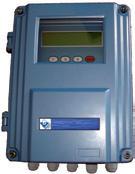


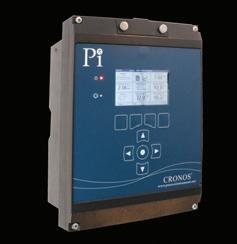

TOLL FREE 1300 363 163 sales@bintech.com.au www.bintech.com.au • ULTRASONIC TRANSMITTERS AND CONTROLLERS • POINT LEVEL SWITCHES • MAGNETIC LEVEL GAUGES • SLUDGE LEVEL SYSTEMS • WIRELESS SYSTEMS LEVEL SYSTEMS • MAGNETIC FLOW METERS • ULTRASONIC METERS -TRANSIT TIME / DOPPLER • OPEN CHANNEL • CUSTOM SPOOL SYSTEMS FLOW METERS • BIOFILM ANALYSER • RESIDUAL CHLORINE • DISSOLVED OZONE • DISSOLVED OXYGEN • TURBIDITY NEW CRONOS ECONOMY ANALYTICAL CONTROLLERS • SUSPENDED SOLIDS • PH/ORP • CONDUCTIVITY • FLUORIDE ANALYTICALCONTROLLERS NEW! BINTECH SYSTEMS WATER SOLUTIONS
66 UTILITY LOCATION Utility Partner Solutions
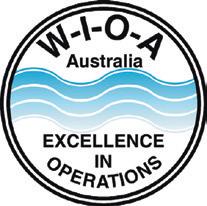
JOIN US AT THE NSW WATER INDUSTRY OPERATIONS CONFERENCE AND EXHIBITION
Newcastle Jockey Club 6 & 7 April 2016
Promoting best practice in water management by building the knowledge, skills and networks of industry operators. WIOA annual conferences provide a medium for individuals involved in water operations to:
• Listen to the experience of others through the latest “operational” technical and research based information through platform and poster presentations.
• View and discuss the latest advances in technical equipment, products and services with suppliers and trade consultants
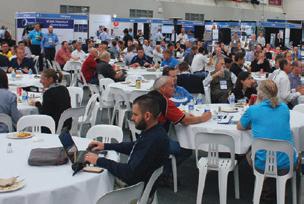

• Update their knowledge and skills through interaction with fellow water industry employees. All

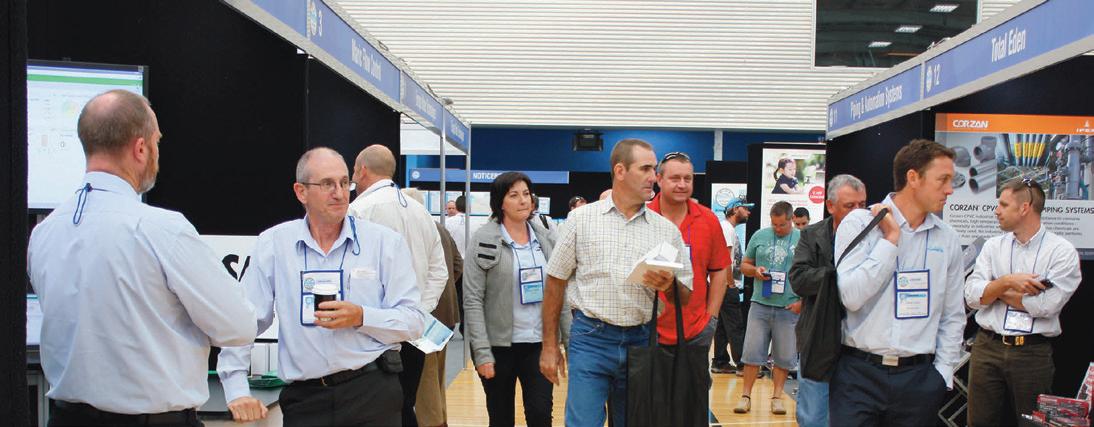
WIOA is a national association with a primary role of facilitating the collection, development and exchange of quality information between people undertaking operational roles in the water industry.
Supported by



Sponsorship Opportunities Available
Take advantage of the opportunity to position your company as a leader in water management by aligning your company as a supporter of the leading non-profit organisation serving the needs of operators in the water industry.
For more information on exhibiting or sponsorship, visit the conference website.
Sponsored by


Water Industry Operators Association of Australia (WIOA)
in the operation and
of urban, rural and industrial water related infrastructure for the management, conveyance, treatment, discharge and reuse of water and trade wastes should attend this conference. 103 Exhibition Sites SOLD OUT
water industry personnel involved
maintenance
W wioaconferences.org.au E info@wioa.org.au P 03 5821 6744 REGISTER NOW
ENSURING PERSONNEL AND ASSET PROTECTION
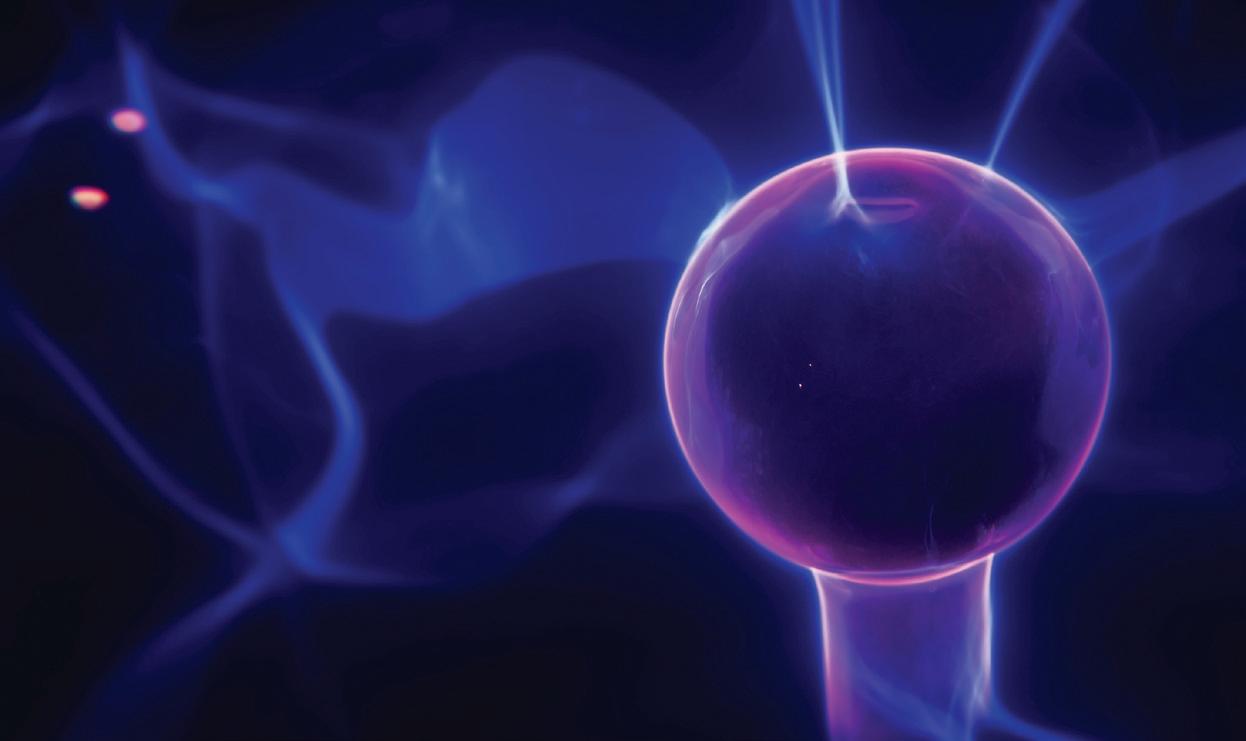
Arc faults have been a hot topic in the electrical industry for more than a decade, with much of the discussion centred on aging oil-based medium voltage switchgear and the increased risk that it poses.
While the risk of an arc fault still exists in modern medium voltage switchgear, both the likelihood that it will occur and the damage it can cause are greatly reduced thanks to arc fault tested designs in compliance with IEC 62271.200 and other measures. However, the arc fault safety rating of type-tested standalone switchgear can be easily negated by incorrect installation, which doesn’t properly consider arc ducting, venting and expansion volume requirements.
“In practice, installation contractors or switchroom builders are not always fully aware of these requirements, and sometimes they don’t fully understand the requirements. In some cases, it may be too technically difficult to achieve IEC compliance,” said Dmitry Lazarchuk, Medium Voltage Product Manager, NHP Electrical Engineering.
“In many cases the complete substation or kiosk solution needs to be arc fault-tested to prove it still maintains arc safety ratings of the switchgear. Therefore, the ideal switchgear would have to fully contain the internal arc fault so that arc venting is no longer required,” Mr Lazarchuk continued.
A short-circuit or another malfunction can create an internal arc and when this occurs in a medium voltage cubicle, it can severely damage the installation and possibly injure the operator.
NHP Medium Voltage Switchgear cubicles are designed and type-tested to mitigate the consequences of internal arcs, and therefore protect both the operator and the installation. Through a strategic pressure release system, the internal arc is restricted to the compartment where it originated and it does not spread towards the operator or to other compartments.
The cubicles are specifically designed to minimise the consequences of an internal arc. Forming a key component of this is the option of a built-in arc quenching system, ‘Arc Killer’, which can extinguish an arc in less than 50 milliseconds. Exclusive to NHP switchgear, Arc Killer is a unique worldwide patented system developed in Europe for the DF2 series of air insulated modular type switchgear. It provides an efficient, simple arc fault protection system, not only for switchgear in substations, but also in the ring network – without the need to send a remote trip signal to upstream CB, unlike typical systems based on arc flash relays. The Arc Killer was a critical function when it came to product selection for a recent large-scale water and wastewater facility project in Australia.
“Arc Killer from NHP protects medium voltage switchgear from internal arc damage and allows fast restoration of switchgear, avoiding long downtime and huge financial loss,” said Mr Lazarchuk. “It also ensures
the highest level of operator safety in the unlikely event of an internal arc fault, going beyond requirements of the Australian standards. This made it the most suitable product for a recent water and wastewater application that we were involved in.”
Arc Killer takes arc quenching to a new level, providing improved security that protects valuable switchgear and eliminates blast damage to switchrooms caused by the high pressures of expanding gas and temperature generated by arc faults. Not only are the operator and the environment shielded from harm, but the super-swift arc extinguishing system allows cubicles to be back in operation very quickly in the case of an internal fault. Moreover, the Arc Killers’ fast operation allows full containment of the arc fault within the switchgear enclosure without the need for external ducting or venting. Consequently, the substation design is simplified and the arc fault safety rating of switchgear is always maintained irrespective of where and how it is installed.
In addition to NHP’s market leading range of medium voltage switchgear complete with Arc Killer technology, when combined with NHP’s substation automation solutions, such as the MiCOM Px40 Agile relay, end users can improve network efficiency and ultimate reliability. When it comes to utility applications, NHP is your trusted partner.
Utility Partner Solutions SWITCHGEAR 68

Higher productivity and increased safety from a local partner
With over 45 years of experience, NHP are proud providers of heavy duty solutions for the utility sector.
We understand that the larger scope of your utility project not only calls for increased focus on product selection, but other compliance requirements such as government restrictions and safety regulations.
The ability to overcome such challenges can be the difference between success and failure.
Partnering with NHP unlocks an extensive range of locally stocked low and medium voltage products including MiCOM Agile protection relays.
Supported by expert staff that enable a customised solution, NHP also offer a complete range of technology systems specifically designed to monitor equipment and achieve higher productivity as well as increase efficiency and safety.

NUTILITYMAGAD_3441_11/15 EASY TO DO BUSINESS WITH NHP ELECTRICAL ENGINEERING PRODUCTS PTY LTD 1300 NHP NHP | nhp.com.au |
EMBEDDED NETW ARE UTILITIES READY TO EMBRACE THE OPPORTUNITIES?
by Dan Howard, Partner, Clayton Utz
While much recent attention has been focused on distribution and transmission networks, and pressure on their returns, the role of the embedded network has also been facing significant change. In many ways, the embedded network is at the leading edge of network development and is a barometer for the success or otherwise of our ability to implement a suitable regulatory regime. But where do large-scale utilities fit in? Are we ready to face the challenges and embrace the opportunities?


EMBEDDED NETWORKS 70 Utility Partner Solutions
ORKS:
Large-scale change is often difficult to achieve in an efficient manner. However, smaller, more confined networks are a wonderful test bed for future technology and integrated systems. The ability to install and run a range of renewable generation and electricity storage systems in an integrated manner is a particularly exciting prospect.
The embedded network provides an ideal environment to engage in larger-scale renewable energy capture and generation. Harnessing renewable systems and coupling them with advanced storage facilities will give the embedded network system the next tier of energy production and control.
What makes embedded networks even more interesting is the ability to integrate energy efficient and smart products. Managing the energy demand on an individual level and as a collective can maximise energy efficient usage and increase the proportion of renewable energy consumed across the embedded network.
The smart embedded network will provide advanced platforms that enable consumer benefits through individual system management, efficient usage and the ability to access the next generation of energy retail products.
With these benefits on offer, there is growing momentum to upgrade existing brownfield embedded networks and to plan advanced greenfield networks.
While embedded networks are principally the domain of shopping
centres, airports, industrial parks, caravan parks and large buildings, larger integrated property developments including new mixed density developments are increasingly looking to utilise the embedded network for supply of electricity.
Developers and infrastructure owners are keen to market their developments as having leading edge green and efficiency credentials. As a result, the next wave of infrastructure is likely to involve an integrated development of embedded electricity networks, water supply networks, water treatment, gas networks and electricity generation and storage across greenfield developments. The existing ‘set and forget’ model of the electricity embedded network is likely to eventually disappear.
REGULATING EMBEDDED NETWORKS
Regulation of the supply of electricity through an embedded network is currently focused on two key elements: the network component and the electricity retailing component.
In the National Electricity Market, network owners and operators are required to register as a network service provider or otherwise be subject to an exemption.
Typically, embedded networks can avail themselves of exemptions from the requirement to be registered as a network service provider which fall into three key categories: deemed, registrable, and individual.
Deemed exemptions apply
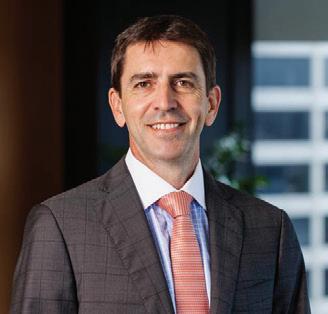
automatically and cover small-scale selling arrangements on the embedded network. For example, an embedded network supplying electricity to less than ten small tenants requires no application to be made to the AER and will be covered by a deemed exemption.
Registrable exemptions require an application to be made to the Australian Energy Regulator (AER). These exemptions cover situations such as where electricity is supplied to large customers or supplied to 10 or more small tenants. Conditions apply to registrable exemptions and are enforced by the AER.
Individual exemptions are also available on application to the AER and are designed to cover situations where circumstances do not neatly fall within the permitted classes of registrable exemptions and are such that do not warrant the requirement to obtain a full network service provider registration.
Network exemptions typically align with the retail exemptions under the National Energy Retail Law.
FUTURE REGULATION
While it is not proposed to detail all of the relevant exemption conditions, there are some requirements of embedded network approvals that will need to be revisited to enable the next generation of embedded networks to function efficiently.


EMBEDDED NETWORKS
71
WHILE EMBEDDED NETWORKS HAVE TYPICALLY BEEN THE DOMAIN OF AIRPORTS AND OTHER LARGE BUILDINGS, THE RANGE OF APPLICATIONS IS INCREASING – PROVIDING LARGE-SCALE UTILITIES WITH BOTH OPPORTUNITY AND THREAT. Utility Partner Solutions
DAN HOWARD.
Recent changes to the regulatory regime have focused on metering and management of the embedded networks. The National Electricity Rule changes, the subject of draft rule determination by the Australian Energy Markets Commission 10 September 2015, are designed to facilitate easier access to retail competition by all embedded consumers and to have managers appointed to ensure embedded systems operate and function within the applicable rules and procedures. While these steps are useful in progressing the operation of embedded networks, careful regulatory design is required to ensure that the impending advancement in network technology is fully utilised.
There are a number of key issues that arise from a regulatory perspective and need to be viewed in context of the advancement of battery storage; integrated renewable embedded generation; direct current systems; smart control plant; and control systems. If the aim is to have an overall impact that is much greater than the sum of the individual parts, then it is important the regulatory design embraces the integrated system concept.
The key pressure points that the installation and operation of this type of embedded network face are the ability to lock in customers over a reasonable pay-back period and managing the provision of the services only to those embedded customers who agree to receive them.
Retailer of choice provisions can have a significant impact on next generation embedded network models because they can permit embedded users to ‘bypass’ the embedded retail supplier and contract directly with an outside retailer.
While retail competition is a sensible goal on its own, the embedded network supplier is faced with seeking to recover installation, operations and power support costs from a changing customer retail base. This uncertainty could be reduced with regulation that recognises advanced systems and allows for cost recovery for those embedded networks and systems. It is worth recognising that in the embedded network environment, the retailing of electricity and the network ownership and operation are to some extent intrinsically linked, particularly where the embedded network owner has installed advanced systems designed to provide and monitor various power sources through the network which impact on the retail supply arrangements to the embedded consumer.
The regulatory regime needs to cater for and foster technically-integrated embedded developments, and one part of the solution may be to allow for multiple layers of retailers for an embedded customer, perhaps in addition to system cost recovery for the network and system owner.
CHALLENGES FOR UTILITIES
For the larger-scale network utilities themselves, the connection and interface with embedded network owners raises the challenge of what can be charged for the provision of broader network support, considering that the main network demand may be less over time than it would have been if an advanced embedded network was not installed. The role of large-scale utilities and the degree of interconnection and interface with advanced embedded networks are key issues in shaping the future operations of networks. There may be advantages
to the broader distribution utility if it could have some degree of influence and control over the ‘combined’ effect of the embedded network. For example, there may be periods where the larger network may benefit from the output of embedded network generation. The embedded network owner may be in a position to provide a combined power output from its storage position (which may include combined electric vehicles plus other power storage) to the benefit of the network utility.
This style of arrangement needs to be available to distribution utilities and the regulatory regime must be flexible enough to enable embedded network systems to receive appropriate payments for this style of service.
The role that utility networks will play as we move to the next generation of network systems and use will be fundamental to maintaining a secure and stable electricity supply to the end user. Not only will the main distribution networks provide connectivity, they will also deliver an energised system to embedded networks allowing power to be available at times when the embedded system does not have sufficient generation. Framing regulation in a manner that facilitates positive interaction between utility networks and embedded networks will be an important holistic step to a properly functioning network.
Importantly, network utilities need to now assist in embracing the future of the sophisticated embedded networks, which consumers and developers are keen to implement. Utilities are in prime position to support alternative regulatory models and work with the microgrid developers to achieve an efficient and flexible grid platform.
Dan Howard is an engineer and lawyer specialising in energy and resources law with an emphasis on electricity, gas, mining, utilities and infrastructure. He is consistently recognised by clients and independent directories for his expertise in these areas, including multiple listings in the Australian Financial Review’s Best Lawyers, Doyle’s Guide and the International Who’s Who of Energy Lawyers.
As a result of acting in the development of some of Australia’s largest electricity, gas and utility projects, Dan has significant experience advising energy generators, retailers, network distributors and end users.
He has a detailed understanding of the energy industry and energy regulatory environment in Australia.
EMBEDDED NETWORKS Utility Partner Solutions 72


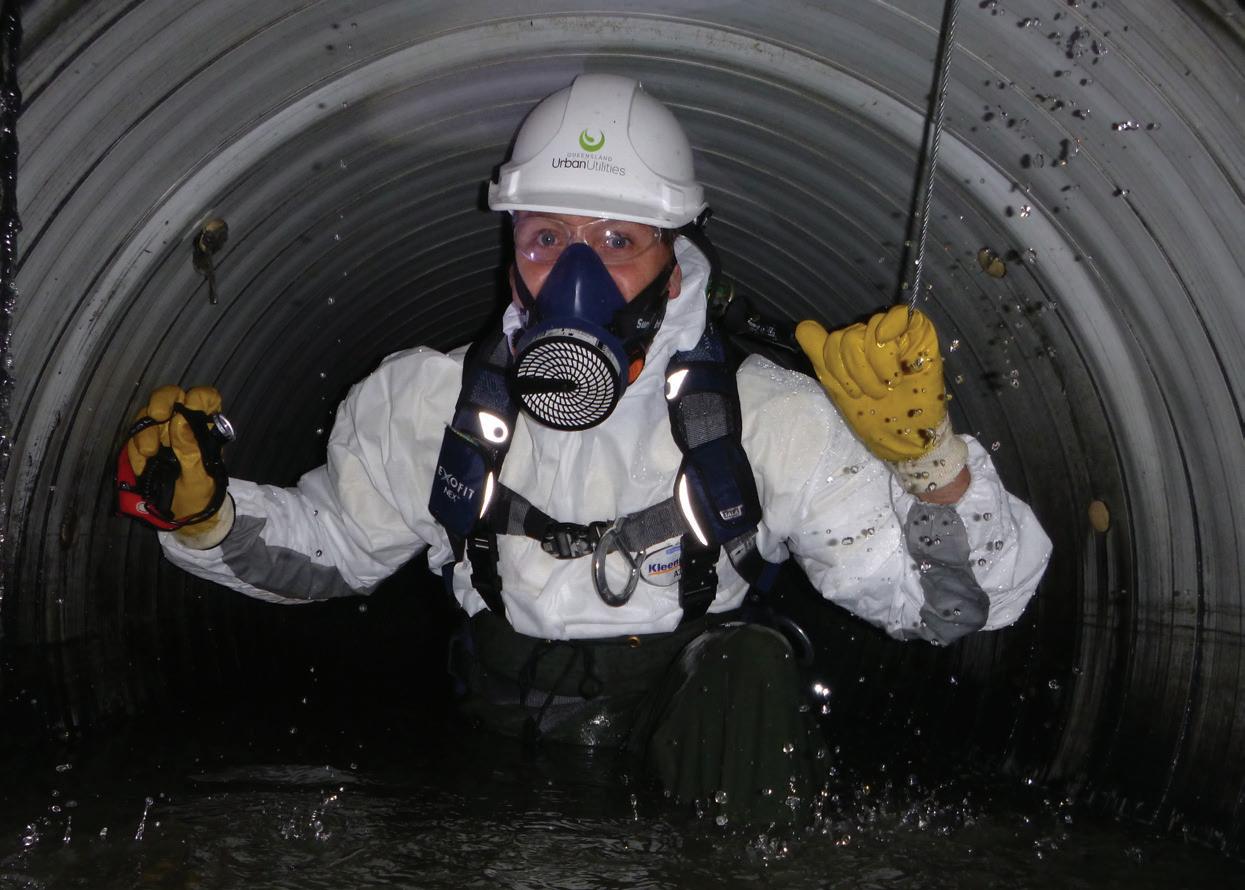
History in the making: RELINING A CRITICAL SEWER MAIN
Deep beneath the streets of Brisbane, and in the dead of night, one of Brisbane’s oldest sewer lines is getting a makeover in a project which still has many years to run but is already collecting awards for the innovative construction methods used.
Queensland Urban Utilities (QUU) has completed the first stage of a $130million upgrade to the S1 main sewer, using the latest trenchless technology to reline a 5.7km section of the historic 100 year old pipe.
The 5.7km sewer runs from James
St in Fortitude Valley, winding its way north-east around the river to the Eagle Farm pump station in Brisbane, running under Kingsford Smith Drive, one of the busiest roads in Brisbane.
The project is one of the most unique sewer rehabilitations ever undertaken in Australia due to the age and depth
of the pipe. The S1 main sewer carries 60 per cent of the city’s sewage, spans 1.5m in diameter and lies 20 metres, the equivalent of eight storeys, below the ground. It was the first major trunk sewer built in Brisbane and was constructed 100 hundred years ago, using traditional mining techniques
SEWER REHAB
74
CONDITION ASSESSMENT
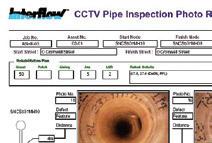
WASTEWATER & STORMWATER
Solutions for the whole network.
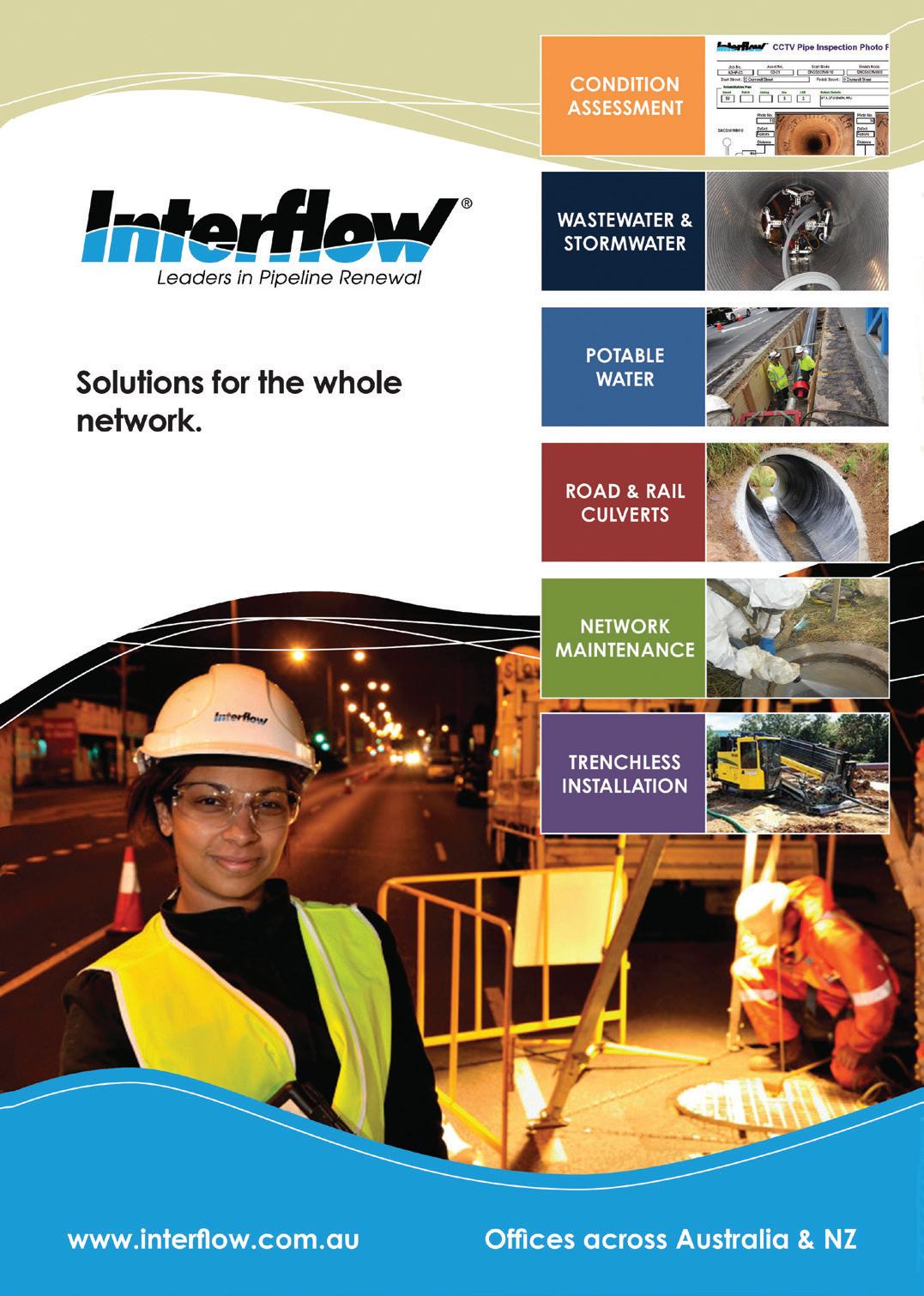
POTABLE WATER

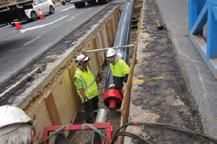
ROAD & RAIL CULVERTS
NETWORK MAINTENANCE

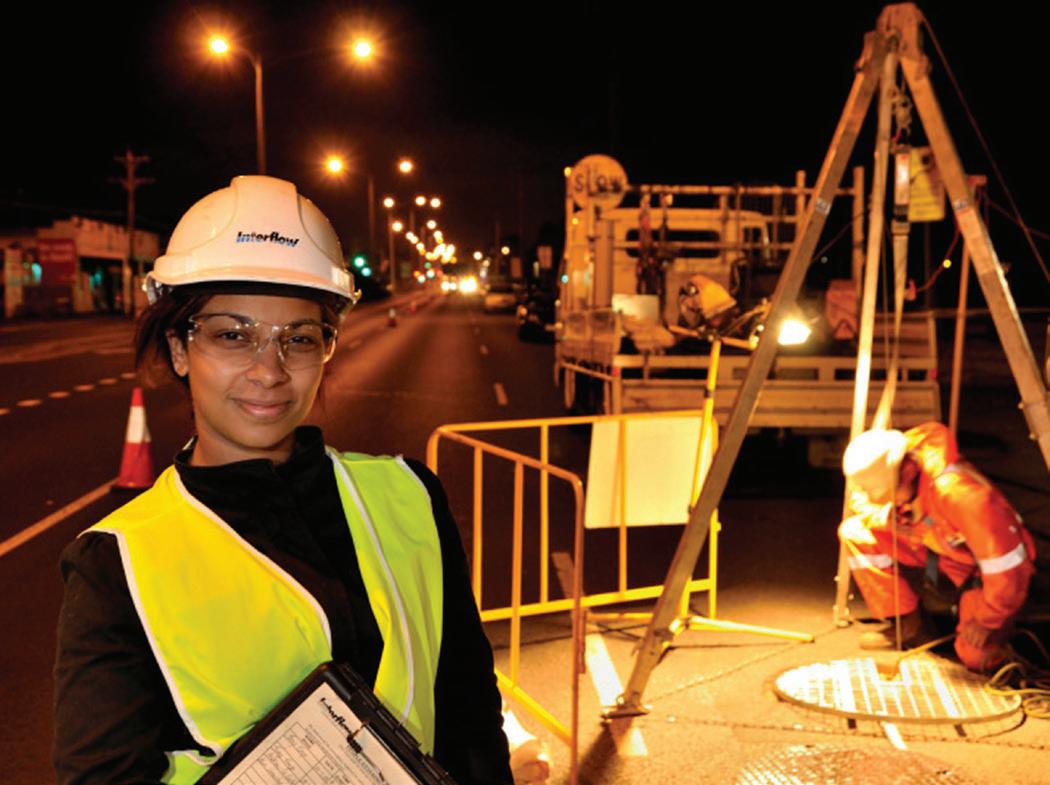
TRENCHLESS INSTALLATION

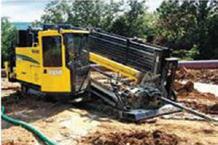
Offices across Australia & NZ
www.interflow.com.au
available at the time. An unreinforced concrete pipe was constructed inside the tunnel in segments. Recent CCTV condition monitoring identified internal corrosion of the concrete pipe.
The first phase of the upgrades were carried about by sewer rehabilitation contractor Interflow, who implemented new technologies to overcome the challenges associated with the project.
Interflow used Ribline, a composite steel-reinforced high-density polyethylene liner, to reline the sewer.

The liner was fed from a spool on the surface into the underground pipe segments.
Closing the road was not an option, so trenchless technology was used to go underground and reline the old concrete pipe with a new pipe made from polyethylene. This meant there was very little disruption to traffic and no need to dig up the road.
Works were completed during the night between 8pm and 5am to ensure the safety of workers and minimise
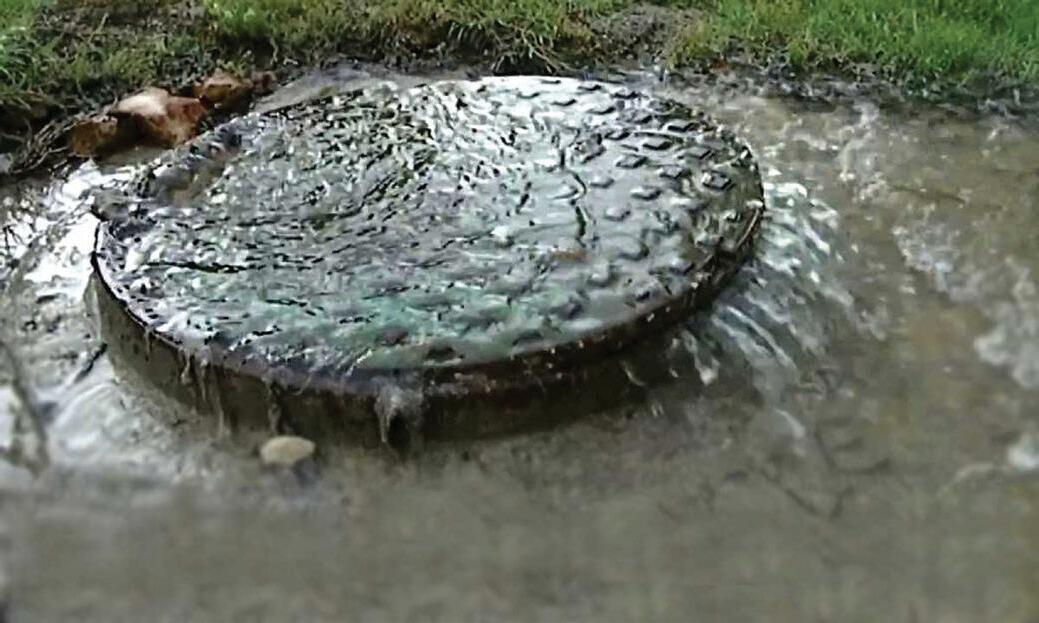
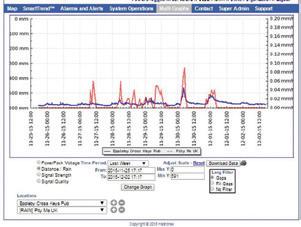
traffic disruptions, as the maintenance holes used to access the sewer were located on the edge of a road or in the median, in high traffic volume areas.
Night construction also proved an advantage because flow levels in the sewer line are lower at night and gas levels are reduced.
The spooled liner was mobilised to site each night and removed by 5am each day in a precision operation which allowed the road to reopen.
Interflow and QUU also managed construction impacts of the upgrade by fast tracking the works with multiple crews working between Amy Street and Cooksley Street and using generators with in–built noise suppression.
Work methods were also reviewed daily to identify if any additional measures could be implemented to further reduce impacts.
The upgrade aims to extend the operational life of the pipe by at least another 50 years and cater for Queensland’s population growth.
The project began in March 2015 and will be delivered in several phases over four years with completion expected in 2019.


If wet weather loadings on your treatment plant & sewage manhole overflows are causing you grief….. YOU NEED SMARTCOVER now even smarter with SmartRain RD TM Phone: 1800 678 910 sales@qmaxpumping.com.au REAL TIME View and understand relationship of sewer level or flow changes as affected by rain, with real-time 24/7 super accurate rainfall data from your nominated pinpoint locations. SEAMLESS Seamlessly characterises these two essential data streams, providing intelligent identification of costly I&I sources within your sewer collection system, Turning your Data into Decisions TM . FLEXIBLE No electricity required. No SCADA system required. Available from any location on earth. For More information on how SMARTCOVER® sewer monitoring can benefit your sewer reticulation and treatment network contact us ® INSIDE THE SEWER AS SPIRAL RELINING TOOK PLACE. 76 SEWER REHAB
The Water Report

Brought to you by the Editors and Journalists behind Utility magazine, The Water Report is an indispensable and data-driven guide to what is really happening in the industry.
Essential industry data – at your fingertips
Detailed project summaries and construction updates
Winners of recently announced tenders
Policy and regulation insights.
A subscription to The Water Report is just $39 per month.
No lock in contracts
First month is free
Cancel anytime.

SIGN UP TODAY & GET A FREE TRIAL waterreport.com.au/subscribe
SPIRAL SOLUTION FOR MELBOURNE’S NORTH WEST SEWER
New technology has helped Melbourne Water complete a complex sewer rehabilitation in Melbourne.
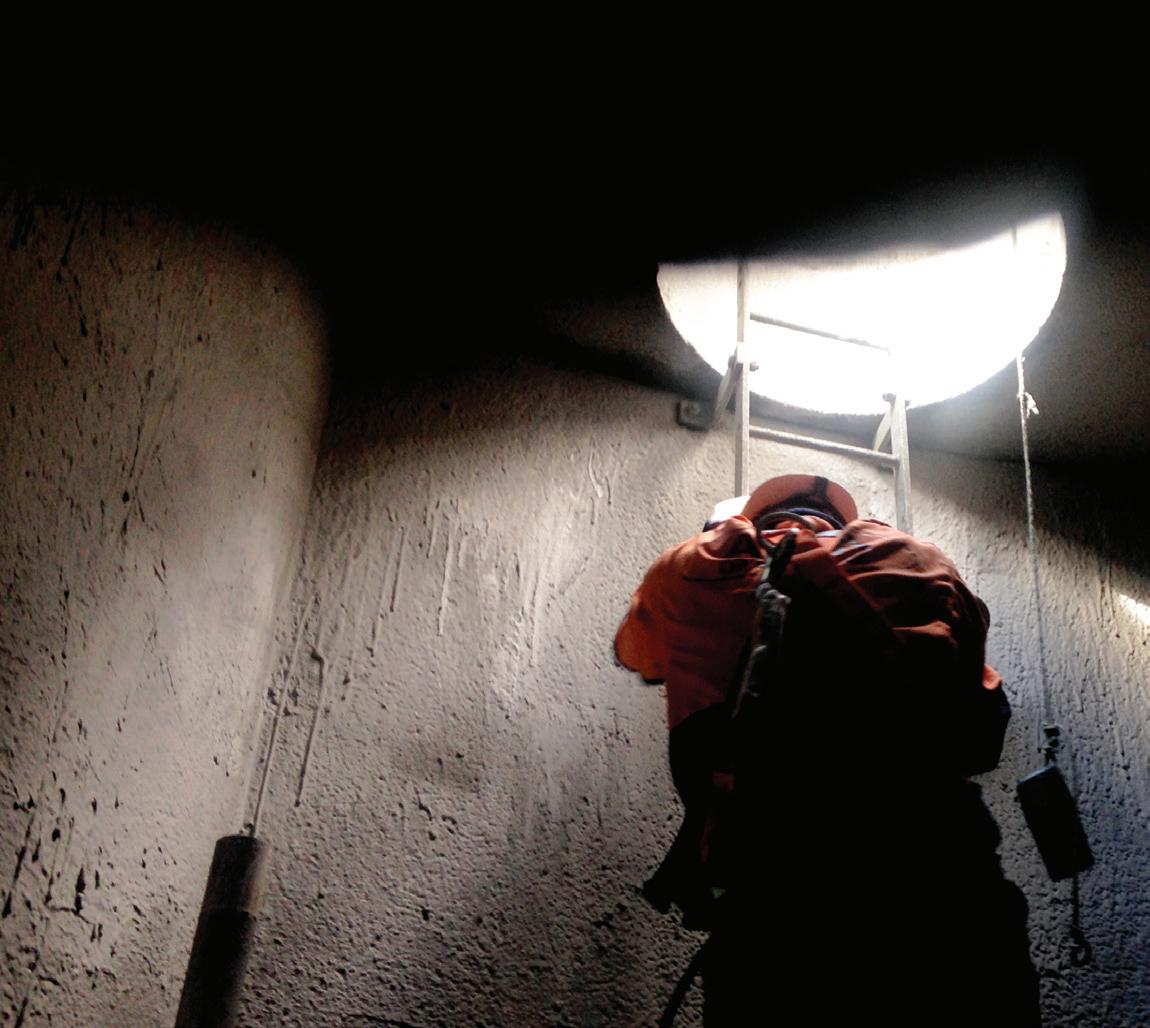
Melbourne Water recently rehabilitated the North West Sewer (NWS) and its connecting manholes at Montgomery Park in Essendon.
The North West Sewer transfers wastewater from Melbourne’s inner north-western suburbs to the Western Treatment Plant via the Western Trunk Sewer at Brooklyn pump station.
The rehabilitation restored a section of the sewer under Montgomery Park which was severely corroded and at risk of failing.
The rehabilitation was completed underground in two stages by Thiess Black and Veatch Joint Venture (TBVJV).
The first stage involved relining a 230 metre section of the existing sewer, before two connecting sewer manholes were refurbished.
This was the first time Melbourne Water used Ribline, a composite steel reinforced high density polyethylene liner, to reline a sewer.
The liner was spirally wound into place at one of the manholes and sealed with structural epoxy. Cement was then pumped behind the liner to fill voids between it and the existing sewer.
This product and its specific installation provided the sewer with a continuous, strong, joint-free liner.
SEWER REHAB 78

GOING INTO THE SEWER FROM THE MANHOLE AT MONTGOMERY PARK.
Project Manager, Jim O’Neill, said, “This was the first time Melbourne Water had used this Ribline product to repair a large, live sewer. We are really happy with the outcome.”
The rehabilitation reduced the diameter of the sewer main from 1.8 meters to 1.6 metres but restored the structural integrity of this section of the sewer.
Stage two of the project involved removing the deteriorated concrete surfaces on the two connecting sewer manholes and applying a new protective coating. These manholes are located on opposite corners of









GUIDED BORING SPECIALISTS
ABOUT US
Edge Underground is a precision microtunnelling contractor that operates in Australia and the USA. With a focus on innovative technology and expertise, Edge Underground designs and enhances the performance of trenchless equipment.
OUR SERVICES
• Microtunnelling
• Pipe Jacking
• Thrust Boring
• Laser Tunnel Boring
stuart@edgeunderground.co 8 www.edgeunderground.co
out more about keyhole pipeline
0458 000 009 ( JACKED 1300 522533
*
Find
installation www.keyholepipeline.com.au 1300 JACKED
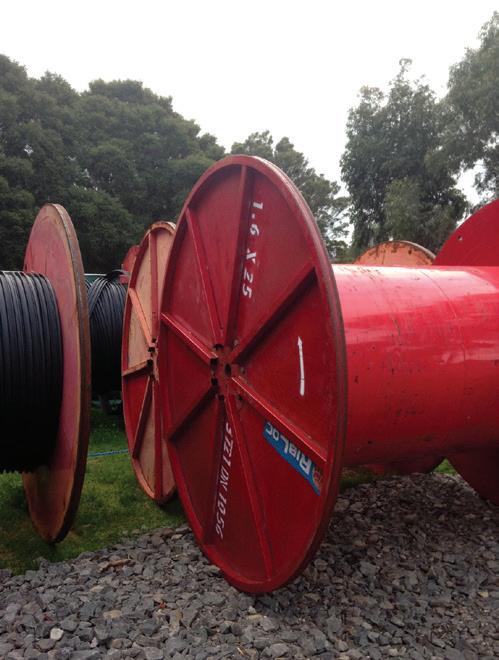
The experts in
Montgomery Park, with one near the intersection of Albion and Tennyson streets and the other located near the intersection of Lawson and Hilda streets.
The sewer relining and manhole refurbishment required contractors to work over 22 nights from July 2015 to ensure the safety of people working on the project.
“As there had been a long history of ongoing repair work on this sewer at this location, completing the work at night was always going to be a challenge,” Mr O’Neill said.
“Being mindful of the community was a high priority for everyone.”
Before construction began, TBVJV undertook a trial of the night work methods and procedures, where workers trialled safe entry and exits into the confined spaces. Workers also looked for any potential restrictions on the use of the pipeline relining equipment.
TBVJV implemented a number of measures to reduce noise, light and odour for the community for the duration of the project.
The rehabilitation project was fully completed in November 2015.

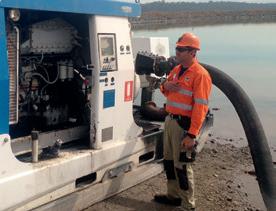
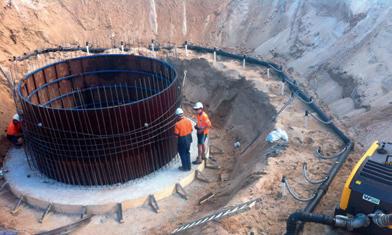

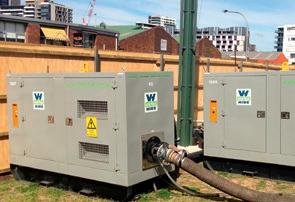




















& COMPANY OVERVIEW To request a copy of our Company Overview Call 02 4966 0737 We are passionate about pumps, Vortex Hire was founded with the goal to provide dewatering & pump hire equipment maintained to the highest standard when you want it, where you want it. www.vortexhire.com.au EMPTY REELS AT THE CONSTRUCTION SITE FOLLOWING THE INSTALLATION OF RIBLINE. 80 SEWER REHAB
dewatering pump hire
SL-RAT SOUNDS OUT A BRIGHT FUTURE
In the August 2015 issue of Utility, we took a closer look at the new Sewer Line Rapid Assessment Tool (SL-RAT) which adopts the innovative technology of using ‘sound’ rather than ‘sight’ to assess the condition of underground pipes. Now that testing of the new system has been carried out by major utilities over the past year, we thought it would be a good chance to touch base, and see how the SL-RAT is stacking up.
Utility spoke with Sydney Water’s Service Delivery Officer Steve Barclay, and Queensland Urban Utilities (QUU) Senior Engineer Bruce Thompson, to get the low-down.
SYDNEY WATER
Mr Barclay has worked in wastewater for over 30 years, is a Sydney Water expert condition assessor and has managed the sewer traverse program for almost 20 years. He commenced a trial of the SL-RAT in November 2014 and presented the results at the No-Dig Down Under conference on the Gold Coast in September 2015.
“The system has been very easy to use in the field, as there are only three buttons which prompt you for any information that the machine requires. Once the machine allocates a serviceability score, you can either record the result manually or download it via an easy-to-use website.
“Being able to evaluate the serviceability grading of reticulation sewers from the maintenance holes without the need to send any equipment through the pipe has continued to be a big bonus throughout our trials.
“It takes a fraction of the time in comparison to traditional CCTV inspections, and this adds to the system in terms of cost-effectiveness.
“A recent US EPA study has also shown that it can reduce inspection costs down to approximately $1 per metre,” says Mr Barclay.
Mr Barclay sees the SL-RAT benefitting Sydney Water in a number
of ways in the future.
“The main benefit of the technology is that we can easily and quickly prioritise our choke reduction programs to better target chokes to reduce the impact on our customers and the environment.
“In my role, I am always looking for new ways to improve our system performance. When I learned about the SL-RAT I asked for a demonstration and it was soon decided to begin using it on trials. At the moment, Sydney Water is currently looking to include acoustic technology as part of its choke reduction strategy,” says Mr Barclay.
QUEENSLAND URBAN UTILITIES
Mr Thompson is in charge of a small team who manages the infrastructure maintenance and servicing reliability of QUU’s sewage network assets. They analyse, monitor and report on planned maintenance, including budgets and compliance, as well as the annual performance of the sewers themselves.
QUU first began testing the SL-RAT in May 2015 in a joint trial with the Water Services Association of Australia (WSAA). According to Mr Thompson, a new set of trials will be underway over the next three months to further investigate the RAT’s potential.
“It’s early days just yet, but the effectiveness of the SL-RAT is looking positive. The system has the potential to reduce the number of chokes within our sewerage networks, by identifying partial blockages before they become a problem,” says Mr Thompson.
The new trials are being carried

out in suburbs with particularly high choke rates, and in terms of accuracy, Mr Thompson is hoping that these upcoming tests will provide QUU with quantifiable data.
“Part of the reason why we are running these current full-scale tests is to compare the accuracy of the SL-RAT against traditional CCTV inspections. Once a blocked sewer is identified by the SL-RAT, we are going to use CCTV to confirm the system’s accuracy. Hopefully we will be able to see a correlation between the two methods and confirm that the SL-RAT is highly accurate.
“If the tests prove successful, we will hopefully be rolling out the technology across more suburbs in the next financial year,” says Mr Thompson.
Cost-effectiveness of the SL-RAT has also been a major selling point of the technology, as it has the potential to direct QUU’s cleaning program to target the sewers most in need, and leave those that don’t require cleaning.
“As well as pre-screening with the SL-RAT, post cleaning may also be possible. Once the blockage has been cleaned, we can run the device for confirmation. This will really help in providing us with a method of quality control for our cleaning program.
“Overall, the future of the SL-RAT is looking good. Chokes in sewers are not good for the customers nor the environment, and we really see this tool having the potential to help manage the inspection and cleaning process a lot better,” says Mr Thompson.
SEWER REHAB
81 Utility Partner Solutions
BRUCE THOMPSON WITH THE SL-RAT.
SHARING THE LOAD FOR THE FUTURE OF DONNYBROOK
Volcanic rock and a shared trench proved a dynamic challenge to the latest water and gas installations in the urban fringe town of Donnybrook in Victoria. Located within one of Australia’s fastest growing municipalities, the need for new infrastructure became paramount, with Yarra Valley Water, APA Group, Mirvac and Comdain Infrastructure stepping up to the challenge. AHD Trenchless was contracted to complete multiple trenchless sections within the project.
With the population of Melbourne set to become the largest in Australia by 2050, it’s no surprise that a consistent flow of home buyers are making their way to Melbourne’s outer suburbs. The City of Whittlesea, home to the rural towns of Merrifield and Donnybrook, is no exception, welcoming almost 8,000 new residents in 2014 alone.
Construction of the Donnybrook water and gas project, located north of Melbourne, began in mid-April 2015 in order to increase distribution to these areas in need. Water and gas pipelines were constructed along Donnybrook Road, and are currently servicing the Donnybrook and Merrifield precincts. Comdain Infrastructure was contracted by APA Group (on behalf of Australian Gas Networks) and Yarra Valley Water to complete the pipeline installations, which included utilising a shared trench for a section of the construction.
INSTALLATION OF THE GAS PIPELINE
APA Group managed the construction of the gas main along Donnybrook Road for Australian Gas Networks (AGN). The gas main now forms part of AGN’s natural gas distribution network to the north of the Melbourne CBD.
The total length of the gas main is 10km and it is made from DN 300mm high pressure steel. 4.2km of the gas pipeline shares a common trench with Yarra Valley Water. According to APA, the ground conditions along Donnybrook Road posed a challenge for the workers on-site.
Ground conditions in the area comprised of clays and boulders from the underlying Quaternary Age Newer Volcanics basalt and there were multiple basalt flow boundaries along the alignment.
This meant that there was a lot of rock along the proposed trench alignment and heavy machinery was required to excavate the trench for water and gas.
The contractor elected to pre-break the rock with a rock breaker, followed by the use of an excavator to remove the rock from the trench. All trench material was then sorted and disposed of off-site.
Another challenge associated with the project was the alignment of forty-nine power poles located along Donnybrook Road that conflicted with the proposed location for the water and gas pipe.
In order to resolve future construction issues, AusNet Services and an accredited contractor were engaged to relocate the poles to a new alignment.
The gas main now delivers gas to new housing and industrial commercial developments in the Northern Growth Boundary that includes the Merrifield and Donnybrook precincts.
INSTALLATION OF THE WATER PIPELINE
The new water main is approximately 6km in length and DN450 in diameter. The diameter reduces in size to DN300 as it extends west to east along Donnybrook Road.
According to Pat McCafferty, Managing Director at Yarra Valley Water,
“When installing the water pipe, traffic management along Donnybrook Road was challenging, given that it is a single carriage way road.
“We required the skills of a competent contractor with sound construction methodologies to maintain a functioning lane of traffic, while also providing the adequate room required to safely construct both mains in the road verge.
“We believe the solution reached in conjunction with VicRoads has minimised impact on the community as much as possible. This was particularly important when considering access to the Donnybrook township and residents along Donnybrook Road,” said Mr McCafferty.
WHY A SHARED TRENCH?
Construction via a shared trench method not only reduced the impact on the surrounding environment, but also provided customers with a clear point of contact for information on the works.
According to Mr McCafferty, “With a great deal of development occurring in the area, the shared trench method had the benefit of avoiding customers becoming frustrated or confused by receiving numerous communications from different organisations and potentially receiving inconsistent messages about work happening in the same area.
“This joint approach resulted in customers being engaged about several projects in the same communication, minimising confusion, and providing them with customer service expectations.
PROJECTS
82

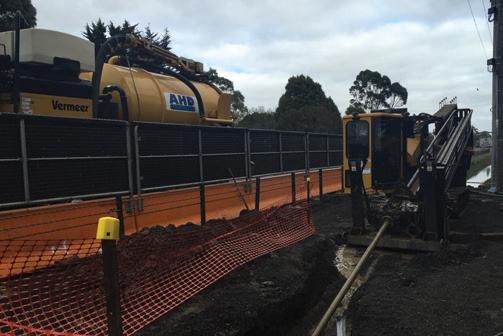
“Most importantly, customers were given one point of contact for information instead of several,” said Mr McCafferty.
According to Ryan Buhagiar, Land Development Project Manager at YVW, the shared trench method was also beneficial in that it reduced the overall impact of the works on the environment as well as reducing community costs.
WORKING AS A TEAM
Installation of the twin pipes involved a lot of planning, preparation and collaboration between each of the contractors involved, said Mr Buhagiar, especially when construction took place beneath creek beds or railway lines.
“As a small number of contractors are accredited to complete both gas and water works, a significant amount of time was spent in researching the most appropriate procurement method to select the right contractor.
“As separate contracts are held for water and gas, this required a considerable amount of collaboration between APA and YVW to ensure the pipes could be installed safely. Both parties had to bring a degree of flexibility to the process to accommodate the respective governing technical requirements that each service was designed to.
“The major crossings of the Merri Creek, Kalkallo Creek, and railway also required careful consideration of the requirements imposed by the various authorities and stakeholders responsible for the respective areas,” said Mr Buhagiar.
APA agreed that the challenges of adopting a shared trench definitely involved the coordination of project activities and timelines to ensure the approach did not affect the delivery for the project for water and gas.
According to APA, while both parties managed their own processes for the planning and execution of the project, there was considerable amount of coordination of activities.
The approach also meant that both water and gas worked together to resolve issues identified with the alignment, said APA.
TRENCHLESS CONSTRUCTION
For construction beneath Merri Creek, AHD Trenchless was contracted to carry out trenchless Horizontal Directional Drilling (HDD).
The original 450mm steel open trenched water pipe was switched to a 560mm polyethylene pipe for the trenchless crossing, with the gas pipe remaining the same diameter throughout the project.
According to Anthony Doherty, Director at AHD Trenchless, the polyethylene pipe was chosen as it is more suited to trenchless methods, whereas policy surrounding the gas installation required consistency in pipe diameter across the total length of the pipeline. A Vermeer D100x120 and a Universal 220x350 drill was used by AHD Trenchless for HDD spanning a total distance of 150m beneath the creek, with a tight offset of 1.2m between the pipes.
“With a tight 1.2m offset between the pipes, accuracy and precision was
top priority for our team throughout construction.
“The ground beneath the river was extremely hard and rocky, consisting mainly of volcanic basalt which required added time and care during drilling operations,” said Mr Doherty.
This was also a challenge for Drilling Superintendent, Gerard Hogan, who said that his team had to take extreme care when drilling the pilot hole, to ensure that the bend radius met the specifications of the gas pipe.
BENEFITS TO THE SURROUNDING AREA
According to AGN, the new infrastructure will identify the future location of housing for the new town and neighbourhood centres and local employment areas, new social and community infrastructure, parks, open space networks and green corridors.
All of this will be supported by a network of major roads, public transport, footpaths and cycle networks. The delivery of natural gas infrastructure to these new communities provide homeowners with the option to connect to an energy source that could lower their running costs and improve energy efficiency, comfort and reliability for their home, says AGN.
ABOUT THE VICTORIAN STATE GOVERNMENT NORTH GROWTH CORRIDOR PLAN
The Victorian State Government North Growth Corridor Plan is one of Victoria’s high-level integrated land use and transport plans that provides
PROJECTS 83
A SHARED TRENCH WAS USED TO LAY BOTH WATER AND GAS PIPELINES SIMULTANEOUSLY.
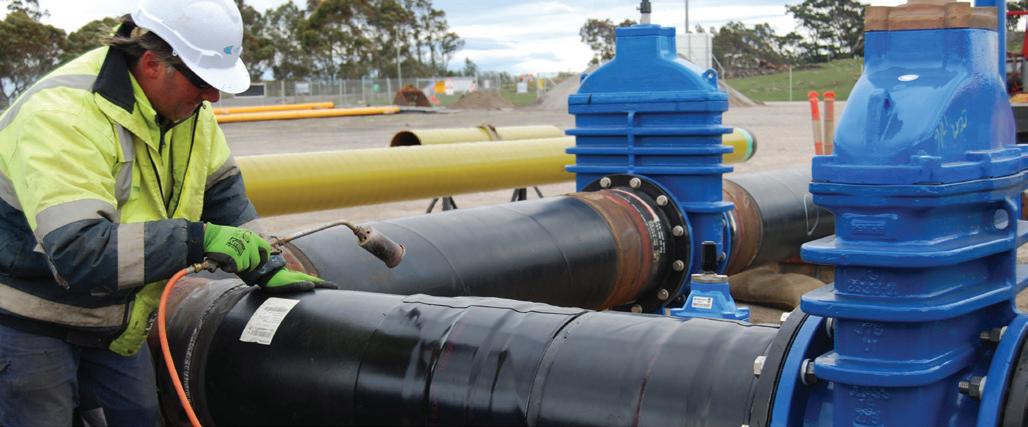
PRECISELY-TIMED ON-SITE ASSEMBLY ENSURED SUCCESSFUL COMPLETION OF THE COMBINED WATER AND GAS PROJECT FOR YARRA VALLEY WATER AND APA GROUP.
a strategy for the development of Melbourne’s growth corridors over the coming decades.
The North Growth Corridor Plan projects a population of 60,000 established over six precincts associated with the Merrifield Development, which incorporates 37,000 residential lots.
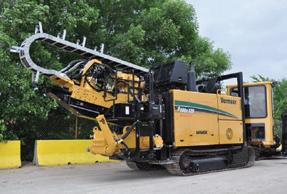
Merrifield is located about 30km north of Melbourne’s city centre, on Donnybrook Road near Kalkallo.
The Merrifield Town Centre has been planned to support up to 160,000 square metres of retail space and a range of residential, commercial, civic and community uses.
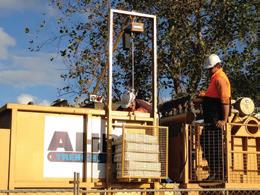
ABOUT AUSTRALIAN GAS NETWORKS (AGN)
Australian Gas Networks owns about 23,000 kilometres of natural gas distribution networks and 1,100 kilometres of transmission pipelines, serving over 1.2 million consumers in South Australia, Victoria, Queensland, New South Wales and the Northern Territory.
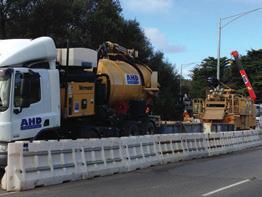

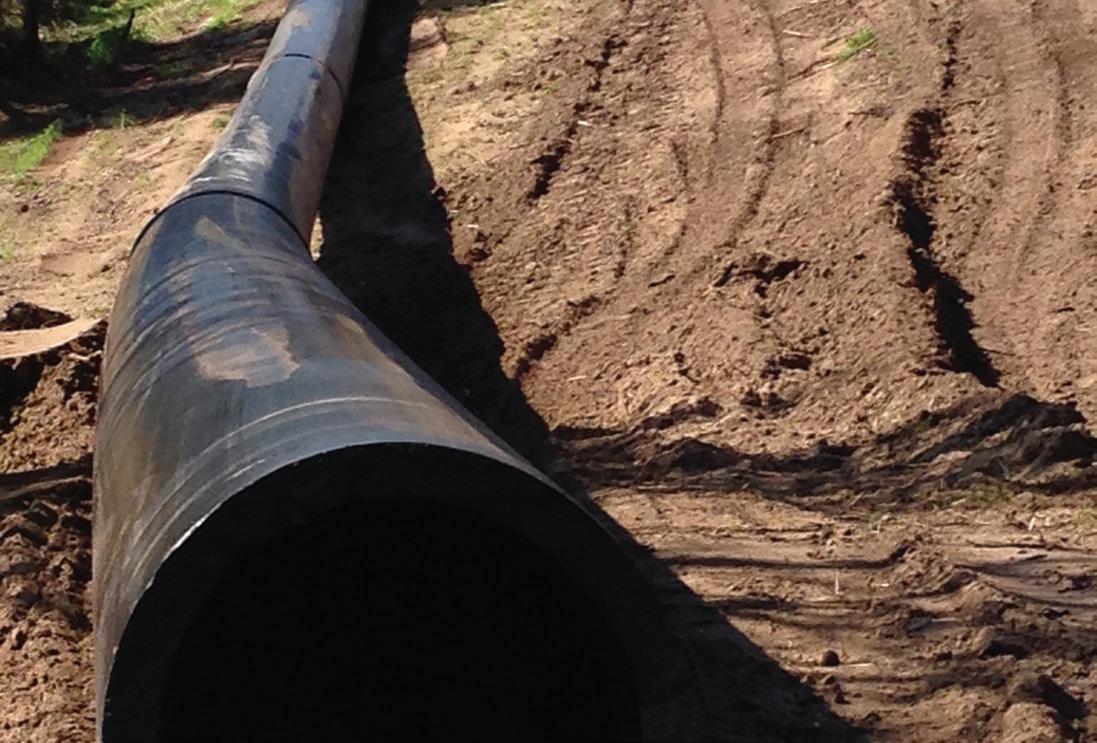

PROJECTS
Australia’s most advanced HDD contractor... AHD Delivers, every time • Experienced staff • The latest equipment • Technologically innovative T: (03) 9439 93 73 W: www.ahdtrenchless.com.au 84
CONCRETE CUTTING MADE SUSTAINABLE
A Melbourne-based company has developed a sustainable, environmentally friendly method of concrete cutting.
Cut and Clean Concrete Cutting is a specialist provider of concrete and asphalt cutting services. The company’s journey began 33 years ago working in the civil industry cutting concrete and asphalt, and they began trading as Cut and Clean Concrete Cutting in 2009.
In 2004, Cut and Clean undertook a research and development program to establish an environmentally friendly approach to concrete cutting. As a result, Cut and Clean was the first to market with a sustainable, environmentally responsible solution for water conservation and waste
management within the concrete cutting industry.
Today, Cut and Clean still remains the only provider of concrete cutting services with an integrated water recycling process and environmentally responsible waste management solution as part of its service, which is utilised in every single job the company undertakes.
The innovative approach taken by Cut and Clean provides protection against the discharge of contaminants to waterways, and reduces exposure to potentially harmful airborne particles.
Their patented process enables
the recovery, separation and recycling of the slurry produced by cutting of asphalt and concrete. The outcomes achieved include reduced contamination of waterways and the environment in general, avoidance of potential damage to public infrastructure, significantly lower water usage and safer on-site operations.
Cut and Clean operates seven integrated vacuum and recycling units, and is in the process of constructing an eighth unit which will be operational in 2016.
For more information, and to view a short video of Cut and Clean’s operations, visit www.cutandclean.com.au.
Cut and Clean Concrete Cutting is a specialist provider of concrete and asphalt cutting services. We have been working in the civil industry for over 25 years and provide a 24/7 service.
- Concrete/ Asphalt Flat sawing to depths up to 525 mm.
- Slurry Vacuuming and Recycling
- Hand sawing to depths up to 150 mm.
- Core holes up to any size
- Silence blades (up to 375 mm deep)
- Hydraulic Sawing
PHONE: (03) 9458 1434
MOBILE: 0412 311 963
WEBSITE: www.cutandclean.com.au
EMAIL: info@cutandclean.com.au
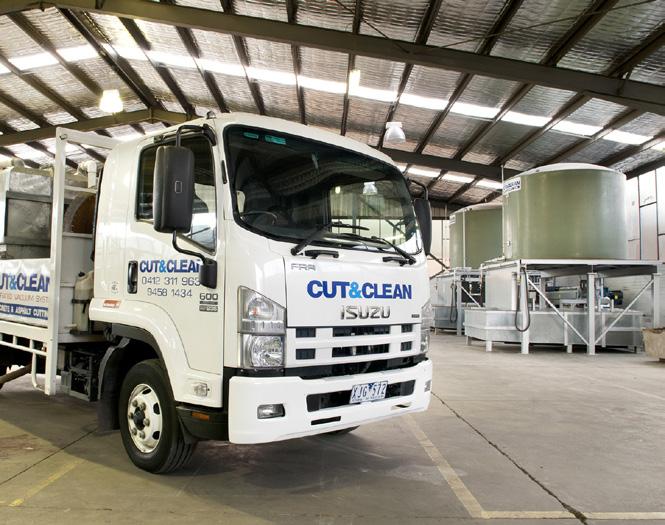

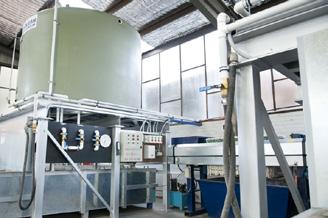
Utility Partner Solutions SUSTAINABILITY
CUT & CLEAN
CUTTING • SLURRY RECYCLING
CONCRETE
85

AGL has increased Australia’s solar energy contribution with a $440million solar project that includes the largest solar power plant in the southern hemisphere.
The project has been built across two sites in New South Wales, Nyngan and Broken Hill, with both solar farms now fully operational and generating up to 155megawatts of electricity between them.
The project received $166.7million in funding from the Australian Renewable Energy Agency (ARENA) and $64.9million from the NSW Government.
The Nyngan Solar Plant reached full generation in June 2015 and to date it has generated 60,000MWh of renewable energy. It spans 250 hectares and has 1.36 million solar PV modules, making it Australia’s largest solar plant.
The $290million plant is expected to produce around 230,000MWh of electricity annually, which is enough to meet the needs of approximately 33,000 homes across New South Wales.
Nyngan is a partnership between
UTILITY SCALE SOLAR TAKES OF F
AGL’s recently completed Nyngan and Broken Hill solar farms are advancing the case for large-scale solar farms in Australia.
AGL Energy Limited and First Solar, and its construction employed more than 250 people and boosted the local economy. First Solar was awarded the contracts for the engineering, procurement and construction (EPC) for the project and will maintain the facilities for the first five years.
Nyngan’s sister plant in Broken Hill began operation six months later, with 677,760 solar panels generating renewable electricity for up to 17,000 homes.
During the construction of the Broken Hill plant, AGL had the advantage of incorporating lessons learned during the construction of the Nyngan facility. Both plants will now be able to shape future Australian solar projects.
“The Nyngan Solar Plant is the largest in Australia, with sister plant, Broken Hill, the second largest. The delivery of these plants has marked the birth of the large-scale solar industry in Australia and demonstrates that our local industries have the capability to deliver large-scale solar PV projects on time and on budget,” said Adam
Mackett, AGL Project Manager for the Nyngan and Broken Hill solar plants.
Both these projects have created jobs and developed regional skills through industry development. During the peak of construction, the Nyngan Solar Plant had up to 250 people and the Broken Hill Solar Plant had 150 people working on-site.
“By Christmas 2015, both plants combined had generated over 175,000MWh of renewable energy, which is enough to power around 29,600 average Australian households annually.”
ARENA’s Ian Kay said “ARENA has shared a myriad of knowledge throughout the construction of both plants, from how to most effectively procure equipment, to managing local supply chains. This invaluable information will give future large-scale solar projects a head start.”
The project aims to develop Australia’s large-scale solar industry by encouraging economic and industry development at the two plants, as well providing academic research infrastructure.
SOLAR & STORAGE 86
SOLAR PANELS STRETCH INTO THE DISTANCE AT BROKEN HILL. IMAGE COURTESY AGL.
The research infrastructure will be used by the University of Queensland (UQ) and the University of New South Wales (UNSW), who are conducting related academic research under the Education Investment Fund (EIF) component of the project.
The University of Queensland will build their own 3.275MW PV research plant and test tracking technologies and performance, energy storage, and operational strategies, while UNSW will develop modelling techniques for the integration of solar power stations into the electricity grid.
The research conducted and the renewable power generated from each site will pave the way for more utilityscale solar plants to be built in Australia in the future.
ARENA CEO Ivor Frischknecht said the project is already achieving one of ARENA’s key aims of increasing the amount of renewable energy in Australia.
“AGL’s solar project at Nyngan and Broken Hill represents a big investment by the company and also by ARENA,” Mr Frischknecht said.
“And the knowledge gained from its successful launch and ongoing operations will lead to further improvements in technology and reductions in costs for the sector.”
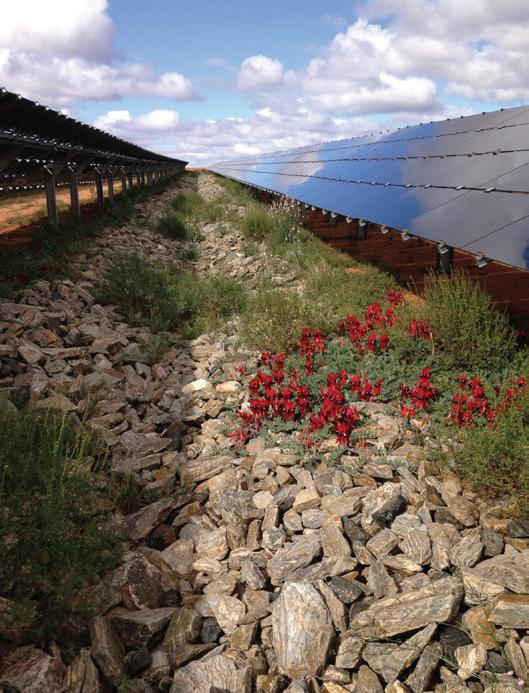

CONNECTING YOU TO
RENEWABLE ENERGY SOLUTIONS











Ampcontrol is focussed on supporting Australia’s growing renewable energy sector and playing a part in its development. We have the scale and experience to provide solutions to your largest, most complex and most time critical electrical, electronic and control problems.
Find out more at ampcontrolgroup.com/renewables
BROKEN HILL GENERATES ENOUGH RENEWABLE ELECTRICITY FOR 17,000 HOMES. IMAGE COURTESY AGL. SOLAR & STORAGE 87
TRANSFORMERS FABRICATION ASSET MANAGEMENT FIBRE OPTICS AND CABLE ELECTRICAL DESIGN AND MANUFACTURE ELECTRICAL PROTECTION SOLAR POWER STORAGE SOLUTIONS REMOTE AREA POWER WIND POWER
TESLA TEAMS UP WITH AUSTRALIAN DISTRIBUTORS
The biggest name in energy storage for 2015, Tesla, has teamed up with a number of Australian distributors to bring their low-cost batteries into homes in 2016.
In December, Tesla and Origin Energy announced that they had teamed up, with Origin acting as a retailer of Tesla’s Powerwall battery storage option.
The Tesla Powerwall is a wall mounted rechargeable lithium ion battery which is suitable for indoor and outdoor installation.
Origin Chief Executive Officer Energy Markets, Frank Calabria, said, “By offering rooftop solar with home batteries, Origin is able to provide households with greater control over their energy use than ever before.
“Customers can now also make their investment in solar work harder, as excess electricity produced during the day can be stored for use at a later time when the solar panels do not produce electricity.”
Mr Calabria said, “Origin is Australia’s leading energy retailer with more than 400,000 solar customers, and Tesla Energy has quickly established itself as
a global leader in battery storage, so we are delighted to be collaborating on Origin’s first solar and battery offering.”
Origin is bundling the Tesla Powerwall with Trina solar panels and the Solar Edge inverter as part of a home energy solution. Customers can be the first to have the Tesla Powerwall installed by ordering it on the Origin website.
The Solar Edge inverter uses solar optimisers on each panel to deliver improved system performance and has been approved by Tesla Energy for pairing with the Powerwall.
“Origin is providing customers with a simple, no-fuss solution by allowing them to buy their solar system, inverter and battery product from us, have it installed and monitored by us and enjoy the benefits of our post sales service support,” Mr Calabria said.
“Home batteries will not be for everyone at this early stage, but with more than 80 per cent of solar PV
owners in a recent survey indicating they would consider buying a home battery, Origin is ideally placed to help consumers find the right solution for them with our end-to-end offering.”
While Origin was the first utility to be named a distributor for the Tesla Powerwall, others quickly followed suit, including CitiPower and Powercor, South Australian Power Networks, Ergon Energy and United Energy. A number of private companies have also been named as distributors, including Natural Solar, Simply Energy, SunEdison Australia and CSR Bradford.
All distributors expect to begin supplying and installing Powerwalls early in 2016, and it is expected that Tesla will continue to add to its authorised distributors in Australia as the year goes on.

SOLAR & STORAGE 88
HOW WILL THE STORAGE MARKET DISRUPT YOUR BUSINESS IN 2016?
The Energy Storage Council, the peak body for the energy storage industry in Australia, is holding a number of educational events in 2016, to ensure the energy industry has the latest technical, market and economic information for this rapidly growing sector.
On 17 February 2016 the Energy Storage Council (ESC) is proud to be hosting the inaugural Queensland Energy Storage Summit.
Join the ESC in Brisbane as QLD Minister for Energy, the Hon Mark Bailey, introduces a showcase of the state’s research & development, innovation, key industry projects and investment opportunities in the energy storage industry.
The summit is an opportunity for leaders of government, industry and the energy sector to connect and learn about current technology developments, market trends and review real industry case studies.
On 4-5 May 2016, the council will
host its second annual Energy Storage Conference alongside the Solar Energy Conference & Exhibition in Melbourne.
The 2016 Conference is free to attend and will again bring together leading industry experts, policy-makers and innovators. In 2015, almost 1,500 delegates registered to attend the energy storage conference. With rapid exhibition growth and more presentations in 2016, this is the industry event not to be missed.
The conference program is designed to give delegates a full overview of the current state of energy storage in Australia and globally. With over 40 speakers the program focuses on market developments and trends,
technology integration, policy and regulation, and new industry case studies. More interactive panel sessions will be incorporated into this year’s conference, with major sponsor, Enphase Energy, hosting the first session in the afternoon on day one.
The expanded energy storage exhibition zone is packed with quality and innovative displays from both Australian and international companies.
The event brings together representatives from energy storage companies including technology manufacturers, equipment providers, project developers, consultants, utilities and other energy industry leaders.
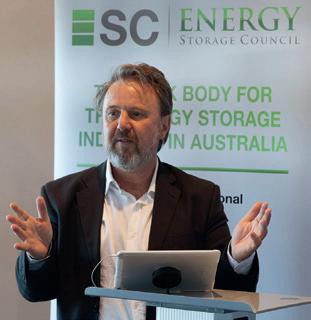
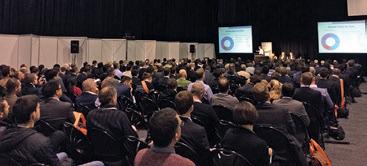
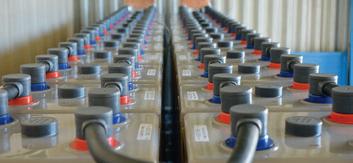
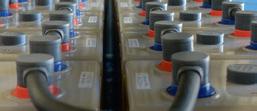
The Energy Storage Council’s second annual conference will be held alongside the Solar Energy Conference & Exhibition, a forum for energy storage industry participants to network, share information and build knowledge.





More information on the Energy Storage Council and 2016 industry events can be found at www.energystorage.org.au. FREE TO ATTEND MEDIA PARTNERS CO-LOCATED WITH
– 5 May 2016 Melbourne Convention & Exhibition Centre SPONSORS REGISTER NOW at www.energystorage.org.au
4
SOLAR & STORAGE 89

INDUSTRY LAUNCHES FATIGUE RISK MANAGEMENT GUIDELINES
Fatigue can have serious consequences for worker safety when poorly mitigated and managed. With some of the most catastrophic disasters in recent decades being attributed to fatigue and/or human error, the Australian Pipelines and Gas Association (APGA) has developed comprehensive Fatigue Management Guidelines to ensure the industry provides employees with a safe working environment.
The reality is that fatigued workers are less productive, do not perform as well, experience more health issues, and are significantly more likely to be involved in an incident at work or on the roads. Worker fatigue is not only a risk to the individual’s safety; it also poses a risk to the health and safety of all those present in the work environment, as well as members of the community. The impact of fatigue-related incidents is widespread, impacting workers, organisations, families and the broader community.
As a result of the identified health and safety risk that fatigue poses, increasing focus has been placed on understanding the impacts of fatigue on a worker’s cognitive and physical performance, as well as determining best practice strategies to mitigate
and manage the risks of fatigue within organisations. This is the key driver for ensuring that employers understand what steps need to be taken to effectively address fatigue across their workforces.
Fatigue is a critical issue for organisations, and it requires considered management. Merely ensuring compliance with legislative requirements by adhering to prescribed drive, work and rest hours is not enough to ensure all workers are provided with a safe work environment.
Good fatigue management practices encompass a Fatigue Risk Management System that incorporates a systematic approach to risk management, adequate training and education for workers, and welldeveloped and implemented policies and procedures to support proactive
fatigue management strategies.
The Australian Pipelines and Gas Association has prepared guidelines for workers in the pipeline industry, with the intent to encourage the adoption of uniform fatigue management practices across the industry.
WHAT IS FATIGUE?
The term ‘fatigue’ is a general term used to describe the feeling of being tired, drained or exhausted. It is a physical condition that can result from inadequate or disturbed sleep, physical exertion, mental exertion, or prolonged waking times. Fatigue can be, in some cases, a natural response to the mental and physical effort of everything we do, and adequate sleep is essential for restoring the balance and promoting recovery.
90 SAFETY
Signs and symptoms of fatigue can typically be grouped into three categories: physical, mental and emotional. A range of factors can contribute to fatigue.
Fatigue is a risk to which anyone can be exposed on a daily basis. With the lines between work and home life being blurred by the use of technology and ever increasing demands on time, the ability to balance family, work and social activities is complex. While a certain level of fatigue can be a normal response to everyday living, high levels of fatigue can have a range of undesirable outcomes for the individual, the organisation and the community.
IMPLEMENTING A FATIGUE RISK MANAGEMENT SYSTEM
As part of the Fatigue Management Guidelines, APGA is advocating for organisations to develop a comprehensive Fatigue Risk
Management Policy to better mitigate some of the potential risks associated with fatigued workers.
As with a safety management policy, the fatigue management policy document outlines what commitments an organisation will make in order to manage fatigue-related risk and how these mitigations will be conducted in the organisation.
There is much that can be gained by industry members supporting each other to achieve positive outcomes regarding fatigue management.
Within organisations, stakeholders must discuss the best strategies for the organisation in managing fatigue risk. All levels of the organisation should be included in consultation processes and provided with opportunities to make suggestions and recommendations. All relevant stakeholders need to be educated regarding their role in managing fatigue and equipped with the necessary knowledge and abilities
to enact such practices.
At the industry level, strategies to manage fatigue can be enhanced through a defined commitment to share knowledge and information about tried and tested fatigue management approaches. With a broader commitment, and the establishment of a minimum benchmark for fatigue management, the industry should see improvements in safety performance through improvements to the fatigue management culture and decreases in fatigue-related incidents.
NEXT STEPS
To ensure your organisation is doing everything it can to protect health and safety with regard to fatigue, conduct a review of your fatigue risk management policy against APGA’s Guidelines, which can be found at APGA’s website www.apga.org.au.
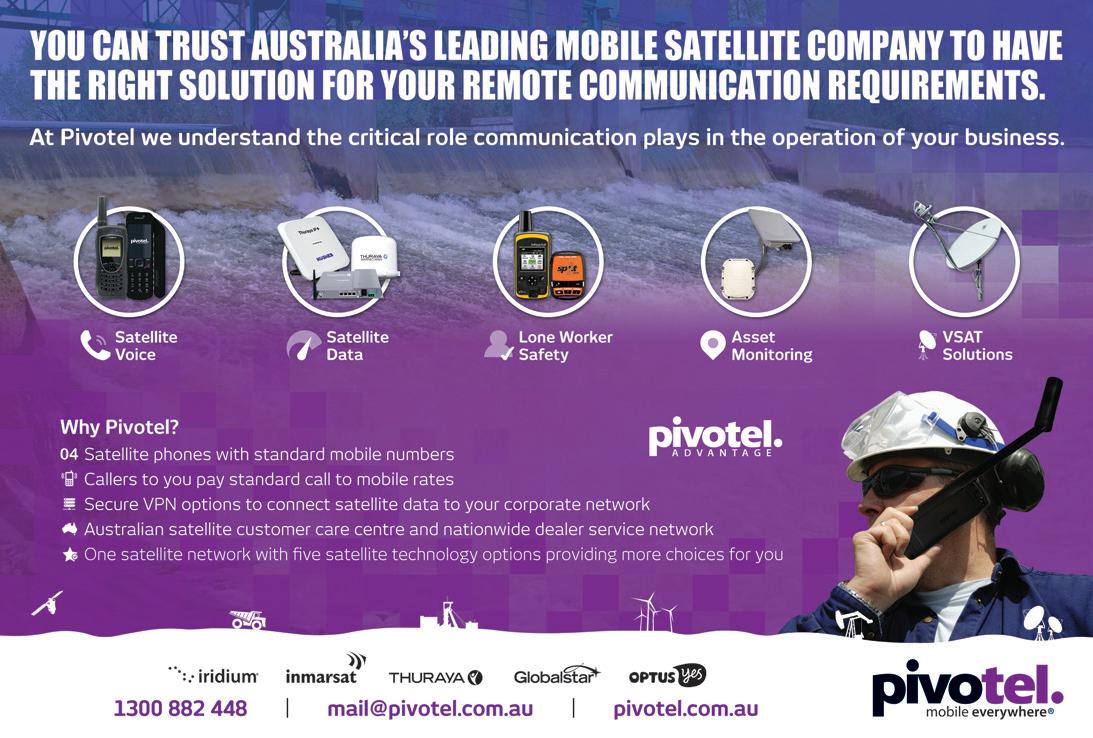
91 SAFETY
WOMEN IN UTILITIES
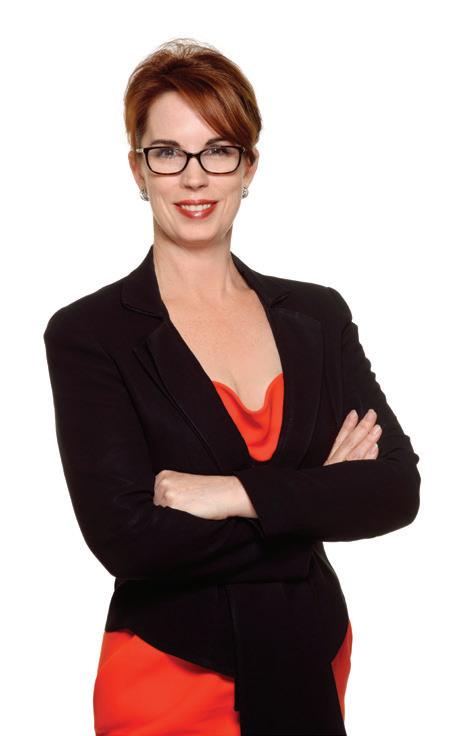
Felicia Brady is a management consultant who has steered utilities, government departments and businesses through some of the key transformations in the utilities sector over the past 25 years. With a background in project management and a diverse skill set, she’s an expert in navigating disruptive change and identifying the new business opportunities that inevitably ensue.
FELICIA BRADY
EARLY DAYS
I started my career working for the Federal Government in Canberra, but after five years, three departments and a Masters in Project Management, I moved to Melbourne and joined a management consulting firm.
In the twenty years since then, I have delivered business projects and major transformations, built new businesses and launched new technologies, created an entire program delivery function from zero to 500 people, and managed a huge project portfolio worth hundreds of millions of dollars.
What excites me these days is creating new capabilities that can endure beyond my tenure, and delivering change that gets into the DNA of the organisation.
GETTING A START IN THE SECTOR
I was working for the Department of Industry in Canberra and was appointed to the interdepartmental committee working on the deregulation of the electricity industry. A few years later, after running projects at telcos and banks, I was asked to backfill a colleague who had been working at Powercor. During the period I worked there, the national market was created, the first tranches of contestability were opened, the distributors and retailers were split, and the buying and selling spree commenced. I had the opportunity to develop market-leading products, develop sales and marketing strategies, deliver new billing systems, set up strategic alliances, and eventually
set up the Full Retail Contestability (FRC) project. The years since have seen me work on the delivery of FRC, major retail transformation projects, the smart meter rollout in Victoria, the acquisition of the NSW retailers, and the introduction of smart metering technology on the consumer side.
CURRENT FOCUS
At the moment I am working with OTS, a boutique consultancy with specialist expertise in operational technology. The convergence of operational technology and information technology has been one of the great game changers for utilities, with smart metering and smart grid services being rolled out all over the world and driving a new wave of analytics capabilities. I am currently at South East Water working on their Digital Utility Program. This program is looking at how we transform systems and processes to better meet the expectations of customers, and how we use real time information and data to optimise network operations and more effectively manage assets. It is great to be working on a program about doing things smarter and faster, and with a really strong focus on customer benefits.
UTILITIES: THE PLACE TO BE
There are a couple of things about utilities that I really like. I’m a problem solver by nature, and this sector is rich with complex problems. New technologies are fundamentally changing the way the industry works, the regulatory foundations of the sector
92
FELICIA BRADY.
The services delivered by this sector enable the rest of the economy to function, and they are the foundation of the incredible quality of life we have in Australia.
are shifting all the time, and there are exciting innovations in IT services, analytics, and communications that create enormous opportunity to create and deliver value for customers. It is a very exciting time to work in this sector.
The other reason I like utilities is simply what they do. The services delivered by this sector enable the rest of the economy to function, and they are the foundation of the incredible quality of life we have in Australia. Clean water, secure power supply, comprehensive transport options, and universal access to telecommunications are not available to almost half the planet. It’s a privilege to play a small part in bringing these services to the community.
NAVIGATING THE CHALLENGES
The biggest challenge for me personally in this industry has been the perception that utility experience is not transferable to other sectors. While some engineering functions may be very specialised, a huge amount of what people in utilities do is exactly the same as insurance, banking, healthcare and telecommunications.
Project management is a functional skill, it can be applied in any domain, and the things that make you effective as a project manager are not industry-specific. The same can be said of customer service, billing, credit management, IT delivery and general management. People who have lived through the exponential change utilities have experienced in the last 20 years have a huge amount to offer
other sectors facing disruption and structural change.
WHAT LIES AHEAD
The challenges differ between the utilities. In water we need more data. Four meter reads a year cannot give a customer any intelligence about their consumption or any control over their expenditure. Some form of digital metering infrastructure is essential to acquire that data but it is a very hard business case to make under the current regulatory arrangements.
Electricity faces declining consumption, the rapid uptake of alternative generation and storage technologies and the threat of retail disruption. In areas where smart metering is available you are already starting to see new retail business models emerge, and this market is ripe for disintermediation. I think that in the next five to ten years there will be fundamental structural change in this industry.
The great untapped opportunity in utilities is for someone to deliver a truly customer-centric service that consolidates all utility information, simplifies billing, increases choice and control and is seamless to join, set up and exit. There are too many vested interests at play at the moment and customers are not getting the best outcome from all their service providers.
Given this, I’d be very happy to keep working in the utilities sector. Over the last 25 years there has been enormous change in so many aspects of the sector, and there is no sign of it slowing down. The growth of new energy technologies, smart grid
analytics and increasing momentum towards the Internet of Things are going to drive the next wave of change, and I’d love to be a part of that.
MENTORS
During my early career I didn’t come across a lot of women in the industry, though that is starting to change. Having said that, at Origin I was lucky enough to work with Karen Moses, who helped lead Origin through their period of exponential growth. Karen was a role model to all of the women at Origin, showing that ability can take you anywhere, and that women can do anything. Watching Karen use her position to advocate for diversity was a great lesson in managerial courage, and an active demonstration of how to bring about change.
IT’S ALL ABOUT BALANCE
Life outside work is all about family. I have two children at wonderful schools and we spend most of our non-work time at school activities or with friends whose children attend the same schools. It’s not very diverse of us, but we really don’t have much time for anything else. Both our families live outside Victoria so this is our support network.
The only observation I have about balance, other than outsource everything you can afford to, is to look for an employer with a culture that truly supports families. There is a big difference between policy and culture, and an employer that genuinely cares about your whole life will enable you to perform at your best at work and at home.
93
MAKING THE MOST OF NBN INFRASTRUCTURE
In order for all of the applied connection types to meet the demands of the National Broadband Network, steps must be taken to ensure each network is ready to deliver the required performance. In this NBN update, we take a look at some of the programs underway to maximise network performance and make the most of both pre-existing and new infrastructure involved in the multi-technology mix.
MAXIMISING THE CAPACITY OF HFC
The hybrid fibre coaxial (HFC) networks nbn has purchased from Telstra and Optus are vital components to the MTM rollout, with approximately 34 per cent of premises around Australia to receive HFC connections to the network.
In order to optimise HFC network performance, nbn is currently undertaking technology trials which set it up to become one of the first telecommunications companies in the world to adopt the Data Over Cable Service Interface Specification (DOCSIS) 3.1 standard. Applying this technology standard has the potential to offer speeds rivaling those of a full fibre-to-the-premises (FttP) connection to premises connected to the network via HFC.
DOCSIS 3.1 increases the capacity of the cable by transmitting data more efficiently and using more of the available spectrum, increasing the possible download and upload speeds as a result. Upgrading the network to meet this standard will involve using the latest DOCSIS 3.1 compliant technology and re-architecting the network to optimise the ratio of premises to a node.
The benefits associated with DOCSIS 3.1 are not limited to higher upload and download speeds. The technology also offers powerful network maintenance tools, allowing potential faults to be detected before service is interrupted and enabling proactive network maintenance to realise maintenance cost savings.
nbn intends to have DOCSIS 3.1 services commercially available in 2017. The company’s commercial HFC product is scheduled for launch in the second quarter of 2016, and a customer experience pilot is currently underway on the Optus HFC network in Redcliffe, Queensland. The trial has seen HFC NBN connections extended to 4,500 premises and end users from a variety of retail service providers have had their connections activated. nbn states that end users have been receiving speeds of up to 100Mbps/40Mbps during the trial.
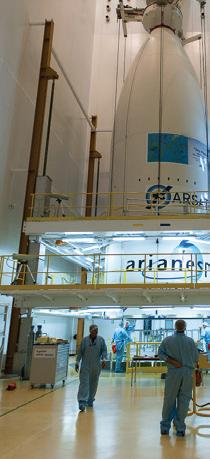
COMMITTING TO HFC EXCELLENCE
nbn has also been working to better leverage Australia’s industry expertise for effective HFC network upgrades and seamless ownership transitions. Towards this end, the company has been in discussions with the former owners of the networks, Telstra and Optus, regarding a shared management approach for their respective networks.
As a result, nbn has signed a Memorandum of Understanding (MOU) with Telstra to negotiate a contract for the design, procurement and construction management for the 3.6 million premises in the HFC NBN footprint that will be serviced by key components of the current Telstra HFC network. This contract is expected to be finalised in early 2016. Discussions with Optus are ongoing towards securing a similar arrangement for the Optus HFC network.
If negotiations go as expected, Telstra will become a partner in managing the design and build of a large portion of the HFC network.
The proposed HFC Engineering, Procurement and Construction Management (EPCM) arrangement also provides for Telstra to undertake self-performed work (e.g. in exchanges). Work under the proposed EPCM will also continue past RFS (e.g. management of nbn MIMA contractors, some Telstra self-performed work and defects liability work). All product development, related activities with retail providers, and work required once end users are able to order a connection, will continue to be managed by nbn.
By handing over the build management within the HFC network footprints to their legacy owners, Telstra and Optus, nbn seeks to simplify the transition during the co-existence period and mitigate the potential risks associated with these complicated yet critical migrations. The legacy owners will adhere to the network construction principles outlined by nbn, and nbn will retain strong oversight of the project.
94 NBN

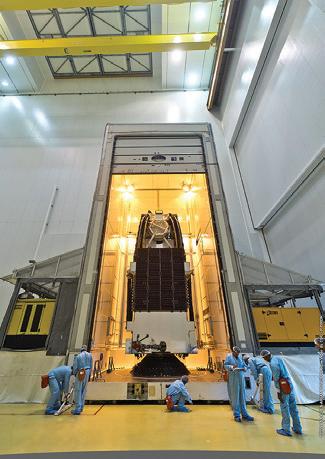

FORGING FORWARD WITH AUSTRALIA’S LARGEST INFRASTRUCTURE PROJECT
The HFC network is not the only component of the multi-technology mix involved in a revolutionary agreement to maximise rollout efficiency and technology performance.
nbn has also signed Operate and Maintain Master Agreements (OMMA) with Service Stream Limited, Telstra and BSA Limited for services on the fixed line networks including fibre-to-the-premises, fibre-to-the-node, fibre-to-thebuilding and HFC connections.
These contracts are based on the same principles of flexibility, competition and incentives for high performance as the Multi-Technology Integrated Master Agreements (MIMA) signed for the networks’ construction and involve activating premises and performing ongoing maintenance. Work covered by the OMMA relates to operations and maintenance work once an area has been declared ‘ready for service’ (RFS) and end users are able to order a connection.
POTENTIAL FTTDP PRODUCT ANNOUNCED
nbn has also been trialling a new broadband technology standard called G.Fast, which increases the speeds achievable over existing copper cables, by employing fibreto-the-distribution-point (Fttdp) connections. Fttdp is similar to fibre-to-the-node, except the fibre optic component of the network terminates at the last possible junction point, known as the distribution point, located within 250m of the premise.
This technology will potentially be used in the MTM rollout to upgrade some of the network’s fibre-to-the-node (FttN) and fibre-to-the-basement/building (FttB) connections in the future, in order to achieve superior performance.
The first nbn field trials of G.Fast were conducted in a Melbourne office block and achieved speeds of more than
600Mbps on a 100metre stretch of more than 20 year old copper. Furthermore, trials at the nbn National Test Facility reportedly achieved speeds of nearly 970Mbps over a stretch of 20 metre copper cable.
The company is currently engaging with its retail service providers to organise wider G.Fast field trials.
REACHING FOR THE STARS WITH SKY MUSTER
By optimising the multi-technology mix, nbn has also found a way to increase the data capacity of the nbn satellite network. This means that end-users in remote areas that will be serviced by satellite broadband via the two NBN dedicated satellites will receive an improved service with a higher data capacity than originally planned.
This has been made possible by moving 40,000 premises originally marked for satellite service to the fixed line and fixed wireless footprint, resulting in more available capacity on the satellite network, and by increased utilisation of the second purpose-built broadband satellite due to be launched next year.
The Sky Muster service is expected to begin in the second quarter of 2016.
Overall, the way forward for the nbn network is being finetuned to deliver an enhanced product to end users by making the most of each component of the multi-technology mix and forging effective partnerships to make use of Australia’s world-class technical expertise. This occurs while the rollout itself accelerates with weekly rollout figures showing around 10,000 new connections per week compared to approximately 4,000 per week in December 2014.
The shape of Australia’s digital future is gradually taking shape – watch this space.
95 NBN
THE LAUNCH OF THE SKY MUSTER SATELLITE.
LEARNING TO BUILD THE DIGITAL UTILITY
Last November, the team from Utility headed to Sydney’s Luna Park for Australian Utility Week, the annual event which brings together industry leaders to discuss and debate the challenges facing the industry.
The 2015 event centred around the theme of Building the Digital Utility, a concept which many attendees are currently navigating. The event provided a welcome opportunity for delegates to share information on how they are adjusting their strategies to transform into digital enterprises.
Organised by Clarion Events, the conference revealed that despite disruptive technologies sparking rapid transformation of the energy sector, the industry has not shied away; instead, most are jumping at the chance to develop new strategies for the future of Australia’s power generation.
Key focus groups centred around:
• How to best generate a digital advantage using M2M strategies, sensors, AMI and analytics platforms,
• How to improve customer experience via social networks, self service and new billing formats and,
• How to effectively operate new business models using disruptive technologies.
Sydney Water Managing Director Kevin Young opened the event, sharing insights into the way his organisation has promoted customer engagement from the inside out, by driving efficiency improvements across the enterprise. As water utilities digitise over the coming years with smart meters, cloud storage and Internet of Things (IoT) technology,
they need to transform internally across all areas of business, including the in-house IT departments.
According to Mark Henley, Director of Transformation and Digital Strategy, Adobe, Asia Pacific, customer expectations for utilities to provide a seamless online experience is everincreasing. He noted that 40 per cent of S&P 500 businesses will not exist in ten years time, and because of this, utilities must improve the way they connect with their customers in order to reduce churn and ‘keep up’ with mainstream online technology.
How to mine data effectively was also a hot topic, as utilities grapple with how to best manage the streams of customer and usage data now becoming available to them. According to Mr Henley, only 12 per cent of customer electricity data is currently used by utilities. Given this, he argued that it is more important for utilities to have access to quality data – as more data does not equal bigger or better outcomes.
In another popular session at the event, Senior Director Smartgrid Solutions at Itron Asia Pacific, Paul Nelson, discussed the societal and technical challenges involved with microgrids. Mr Nelson questioned who will manage these networks, and how the industry will go about doing this responsibly. He also made it clear that there is a lot of work to be done
What the delegates thought
“Australian Utility Week provides like-minded industry participants an opportunity to interact and share ideas and thoughts outside the usual workplace.”
David Hutchison, Customer Portal Manager, United Energy and Multinet Gas
“A very good and informative session hearing Australian Utilities’ experiences and learning about customer engagement, data insights and disruptive technologies. Highly recommended for all management staff in the utility industry, as well as analysts and engineers.”
Joel Hung, Analyst, Mainpower NZ
in terms of developing management strategies for the changes in energy flows of the centralised grid during connection and disconnection of these microgrids.
Also up for debate was the effective management and distribution of electricity tariffs for localised grids. Jay Rutovitz, Research Principal at the Institute of Sustainable Futures, presented an in-depth research project sponsored by ARENA, titled ‘Facilitating Local Network Charges and Local Electricity Trading.’ The aim of the ongoing project is to bring together a partnership of consumers, researchers, electricity providers and the government to help level the playing field for local energy and prepare for the electricity grid of the future. This involves facilitating the introduction of reduced local network charges for partial use of the electricity network, and the introduction of Local Electricity Trading (LET) between associated customers and generators in the same local distribution area.
Industry collaboration and development of new and innovative solutions will form the basis of forward motion in the industry, as utilities and energy retailers prepare for digital transformation. It will be interesting to see just how far the industry will have come by the next Australian Utility Week, which will again be held in Sydney from 29-30 November 2016.
“Australian Utility Week is an opportunity for us to share our successes, as well as our challenges, learn from each other and look for opportunities to improve the services for the ultimate benefit of our customers.”
Kevin Young, Managing Director, Sydney Water
96 EVENTS
The grid is changing. ARE YOU READY?
Registrations are now open for Energy Networks 2016: Energy in Transition. The Energy Networks Association’s (ENA) biennial conference and exhibition will be held at the Adelaide Convention Centre from 18-20 May 2016.
As the only conference and exhibition in the market developed by the network industry for the industry, Energy Networks 2016 will have unrivalled access to the leaders and experts in the sector.
Energy Networks 2016 will bring together international and Australian energy industry experts in technology, service delivery and asset management as well as Australia’s energy policy makers, regulators and advocates.
CONFERENCE PROGRAM
The ENA is excited to confirm the attendance of industry leaders from Australia and around the world. The plenary agenda will include AGL CEO Andrew Vesey, Landis+Gyr President and CEO Americas Prasanna Venkatesan, and Lena Hansen of the Rocky Mountain Institute.
The Energy Networks 2016 plenary will also feature leaders across the energy supply chain, including Energy Network CEOs Ben Wilson (Australian Gas Networks), Paul Adams (Jemena), Merryn York (Powerlink) and Ian McLeod (Ergon Energy).
The Energy Networks 2016 concurrent program will feature over 60 national and international experts discussing key issues for the future of the energy system. Some of the topics to be explored will include:
• Gas and the grid
• Metering and grid intelligence
• Case studies in storage
• Connecting embedded generation. Confirmed speakers come from energy network businesses across Australia and from leading service and
technology providers and researchers across the sector including GreenSync, CSIRO, Siemens, Reposit Power, the Clean Energy Council, Enernoc and Ernst & Young.
NEW! OPERATIONAL BEST PRACTICE WORKSHOP
A new feature of Energy Networks 2016 is the Operational Best Practice Workshop. Designed specifically for network business line managers and operational staff, this workshop will consider the latest practices and technology that supports the modern grid and will appeal to a broad range of those working in the industry.
Four fundamental elements in the safe and efficient operation of electricity distribution and transmission networks will be discussed over the course of the workshop, including:
• Substation Modernisation
• Vegetation Management
• Managing Embedded Generation on the Grid
• Asset Defect Identification and Reporting.
Managing vital electricity assets and integrating new technology and services on the grid, whilst meeting the core responsibility to deliver safe and reliable energy in diverse conditions is critical for network businesses. Expert speakers across the two days will come from electricity networks, service and technology providers and research agencies, including Oracle Utilities, United Energy, Siemens, Fugro Roames, SA Power Networks, Geomatic Technologies, North Power, Ergon Energy, AECOM, Wilson Transformer Company and CSIRO.
NEW! PRODUCT AND SERVICE DEMONSTRATION AREA
For exhibitors and sponsors keen to increase their exposure to delegates, a new opportunity to highlight
innovative products or services during the conference breaks has been introduced. The Product and Service Demonstration Area will be a key feature of the Exhibition Hall, and is a great opportunity to showcase your business. Spots are limited, so find out today how your business can participate in this new feature.
SECURE YOUR PREFERRED SPONSORSHIP AND EXHIBITION OPPORTUNITY TODAY
Energy Networks 2016 is offering extensive opportunities for businesses that support the industry to meet key decision makers in the energy networks sector through sponsorship or exhibiting in the Exhibition Hall.
A number of exciting sponsorship and exhibition opportunities are still available, so visit the Energy Networks 2016 website today to download the Sponsorship and Exhibition Prospectus. Take action today to ensure your preferred level of engagement is secured.
With increased attendance in 2014, Energy Networks 2016 is an important opportunity for businesses across the energy supply sector to make direct contact with relevant industry people.
Delegates at Energy Networks 2016 will be drawn across the energy network sector and will include CEOs and senior executives, senior technical and regulatory managers, team leaders and line managers, consumer engagement specialists, technology and service providers, experts from across gas and electricity markets and representatives from key regulatory and government agencies.
In 2016 exhibitors are also welcome to participate in the conference sessions. The conference program will reflect the changing environment that energy businesses are operating in, ensuring your organisation stays ahead of the market and is aware of research and development within the sector.
Don’t miss out on the opportunity to be part of this critical conversation.
Early bird registration closes on the 26 February 2016. Registering early for Energy Networks 2016 will save you $200 off the full delegate rate. Discounts are also available for group bookings made by a company in a single transaction. Updates are available at www.energynetworks2016.com.au
97
EVENTS
The utility industry is regularly required to call on an enormous and varied range of specialists; from mapping, to drilling, to wastewater treatment, to asset management, to pipe relining, to pipeline integrity, to land access, to risk management, and the list goes on. To make the process a little easier, Utility magazine is bringing together experts from various fields to answer your questions.
HDD
WHAT IS THE CURRENT CAPABILITY OF THE HDD INDUSTRY, AND WHERE IS IT HEADING IN THE FUTURE?
With the HDD industry there certainly appears to be a recognisable trend developing – longer drills. Notice I have omitted to also include larger at this stage, as the practice still relies on creating an unsupported hole for the pipe or pipes to be inserted into. Creating a large diameter hole leaves us somewhat dependent on the soil integrity and strength, unless a step change is made to the process. Herrenknecht’s DirectPipe technology has gone some way to address this by installing the pipe or casing directly behind the cutter, however distance achieved is restricted by the skin friction that develops from the narrow gap created between the pipe and formation. The HDD industry already competently installs steel pipelines up to 48” diameter and, in reality, end users rarely require diameters over this size to be installed. Once the diameter does become larger than 48”, the construction of a concrete tunnel is generally advocated as lower risk and accepted as the norm.
Advancements such as intersect technologies (which allow crossings to be drilled from both sides meeting in the middle), larger capacity drilling rigs and the availability of pipe thrusters to aid pipe insertion, have all allowed for much longer lengths to be regularly and reliably achieved. Of particular note is the use of intersect drills, which has effectively allowed drill lengths to be doubled overnight. A plot of a selection of notable large project completed over recent years is above right.
From the graph, it is reasonable to infer that lengths of 4.5km of 12” pipe and 2.5km of 42” pipe are now within industry capability. This capability will allow for greater flexibility in construction options and clients should be incorporating this advancement in technology into their concept designs and studies and not just staying within safe margins.
I believe the HDD industry will drill longer yet, aided by further developments such as industry-specific software for analysing drill pipe pressures, fatigue and stress, telescopic
casing to provide hole support whilst reducing torque and drag, mud programs and modelling for better hole cleaning and hole support, and equipment advancements including telescopic rigs for faster tripping times.
So longer, in excess of 4.5km, appears to be the way forward, for now.
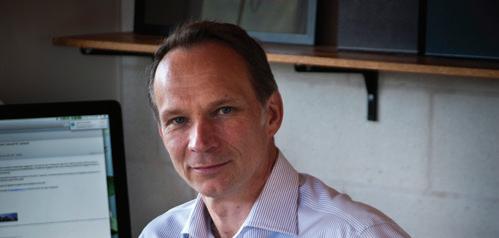
ABOUT CHARLES STOCKTON
UK-born Charles Stockton has been a part of the HDD sector in Australasia since 2003. He is the Managing Director of Stockton Drilling Services, a leading engineering consultancy specialising in HDD and other trenchless pipeline installation methods.
98
Pipe Diameter (inches) 0 15 30 45 60 Crossing Length (m) 0 1000 2000 3000 4000
Historical Data
















Barry Goldstein Executive Director, Energy and Resources South Australian Department of State Development






Rob Wheals Group Executive Transmission APA Group

Peter Geers Executive Group Manager, Markets Australian Energy Market Operator
New for 2016
7-10 March 2016 I Four Seasons Hotel Sydney




Rod Sims Chairman Australian Competition and Consumer Commission

David Baldwin Chief Executive Officer Integrated Gas Origin Energy
Martin Ferguson Group Head of Natural Resources
Seven Group Holdings Chairman APPEA Advisory Board


Graeme Bethune Chief Executive Officer EnergyQuest

David Rynne Chief Economist Queensland Department of Natural Resources and Mines
Additional conference day on 10 March!
Creating a more efficient gas market
Encouraging new supply
Early Bird Discount

Kylie Hargreaves Deputy Secretary, Resources and Energy NSW Department of Industry
bookableSeparately

Innes Willox Chief Executive Officer Australian Industry Group
Register before 5 February and save up to $500! Register online at www.questevents.com.au or call +61 (0)2 9977 0565
Endorsing bodies:




With key industry speakers including:




Australia’s premier event for all domestic gas market stakeholders


Malcolm Roberts Chief Executive Officer APPEA

Rosemary Sinclair Chief Executive Officer Energy Consumers Australia

Ian Davies Chief Executive Officer Senex Energy




Cheryl Cartwright Chief Executive Officer
Australian Pipelines and Gas Association
PLUS! Full day in-depth learning sessions on Monday 7 March
In-depth Learning Session A:
Forecasting gas prices across jurisdictions and understanding potential scenarios and their implications for users
Facilitated by Oakley Greenwood
In-depth Learning Session B:
Learning from international experiences in designing a more efficient gas market - what does a competitive gas market need?
Facilitated by NERA Consulting
Meeting the needs of users Content partners: Organised by: Supporting partners: Official media partner:








Register TODAY! +61 (0) 2 9977 0565 +61 (0) 2 9977 0567 info@questevents.com.au www.questevents.com.au 4th annual
Media partners:
Steve Bielby Chief Executive Officer Gas Industry Company (New Zealand)
Tim Nelson Head of Economics, Policy and Sustainability AGL Energy
Rod Duke Vice President Downstream Santos
Clare Savage Executive Director Policy Business Council of Australia
Stuart Jeffries Director Gas Marketing ExxonMobil
Richard Cottee Managing Director Central Petroleum
Mark Cully Chief Economist Department of Industry, Innovation and Science
Gary Barnes Coordinator General, Office of Major Projects, Infrastructure and Investment Northern Territory Government
Jeff Makholm Senior Vice President NERA Consulting (USA)
Paul Adams Managing Director Jemena
Gas Networks Future Forum
MAY 2016
AUGUST 2016
NOVEMBER 2016
FEBRUARY 2017
MAJOR FEATURES GAS PIPELINES POWERLINES SMART GRIDS ENERGY EFFICIENCY SPECIAL FOCUS LAND ACCESS AND RIGHT-OF-WAY TRANSFORMERS AND SUBSTATIONS PIPELINE INTEGRITY COATINGS LEAK DETECTION EQUIPMENT & MACHINERY EQUIPMENT RENTAL HORIZONTAL DIRECTIONAL DRILLING (HDD)
MAJOR FEATURES OZWATER SPECIAL DEMAND MANAGEMENT ENERGY NETWORKS AND DISTRIBUTION WATER RECYCLING WATER PIPELINES DRINKING WATER SPECIAL FOCUS INSPECTION, CCTV AND CONDITION ASSESSMENT MAPPING, GIS & SURVEYING M2M AND MOBILITY VEGETATION MANAGEMENT IRRIGATION EQUIPMENT & MACHINERY SMART METERS MICROTUNNELLING STORAGE
MAJOR FEATURES WIOA SPECIAL TRENCHLESS TECH STORMWATER RENEWABLES ASSET MANAGEMENT RETAIL, BILLING AND CRM SPECIAL FOCUS SCADA. SECURITY, CONTROL SYSTEMS AND SOFTWARE WASTEWATER TREATMENT PIPE RELINING DRAIN CLEANING WASTE MANAGEMENT TRAINING EQUIPMENT & MACHINERY PIPE & CONDUIT CABLES EXCAVATORS VACUUM EXCAVATION AND NON-DESTRUCTIVE DIGGING
MAJOR FEATURES SOLAR DAMS SAFETY BIG DATA SPECIAL FOCUS UTILITY LOCATION SEWER REHABILITATION EMBEDDED NETWORKS DISTRIBUTED GENERATION EQUIPMENT & MACHINERY SWITCHGEAR CABLE PLOUGHING DRONES PUMPS, VALVES AND FILTERS Access Detection 65 AHD Trenchless 84 AMPControl 87 Austeck OBC Austral Research and Consulting 37 Australian UAV 33 Australian Domestic Gas Outlook 99 Bintech Systems 66 Biosol 46-47 BVCI 24 CR Kennedy/SmartNet 13 Cleanteq Aromatrix 39 Comdain Infrastructure IFC Cut and Clean Concrete Cutting 85 Cyient 26-27 Ditch Witch Australia 25 Edge Underground 79 Energy Networks Association 61 Energy Storage Council 89 Hardman Chemicals 51 Interflow 75 Keysight Technologies 29 Kwik-Zip 45 Monkey Media IBC NHP Electrical Engineering Products 69 Odour Technologies 55 Oracle 21 Pezzimenti Trenchless 52 Pipe Management Australia 9 Piping Specialty Supply Service 17 Pivotel 91 Qmax Pumping systems 76 SATEC Australia 73 Select Solutions 7 Shore Hire 53 Stockton Drilling Services 54 SUEZ 57 Taylors 43 The Water Report 77 Total Drain Cleaning Services 2-3 Unmanned Aerial Systems 31 Utillix 66 UVS 60 Water Capability Guide 15 Vermeer 11 Vortex Hire 80 WIOA NSW Conference 67 Wrighteye Industries 35 SALES DEADLINE 11 MARCH 2016 SALES DEADLINE 1 JULY 2016 SALES DEADLINE 9 SEPTEMBER 2016 SALES DEADLINE 2 DECEMBER 2016 ENERGY STORAGE COUNCIL OZWATER ENA ENERGY NETWORKS IRRIGATION AUSTRALIA LOCATE 2016 WIOA QLD EVENT DISTRIBUTION ALL ENERGY WIOA BENDIGO EVENT DISTRIBUTION Advertisers’ index EDITORIAL SCHEDULE 100


How do I make the most of the web, SEO, social media and content marketing to reach my customers? Visit www.monkeymedia.com.au and sign up to our newsletter to get free marketing tips for companies in the Utility industry www. .com.au publishers of Engineering, Construction & Maintenance


“Sewer Line Rapid Assessment Tool”
Blockage rating from 0-10 in 3 mins
The SL-RAT is our highly portable onsite assessment tool that provides a sewer line blockage assessment in less than 3 minutes.
• Focus resources where they are needed most
• Assess up to 7km per day
• No flow contact
• No confined space entry
• GPS enabled
• View your Inspections on Google Earth



Contact Austeck for an obligation free Quote & Demonstration
SL-RAT
A 11/77 Bourke Road, Alexandria NSW 2015 W austeck.com E info@austeck.com
287
1800
835
RECEIVER BLOCKAGE
TRANSMITTER


































































 EXAMPLE OF A BENT TRANSMISSION LINE SPACER IDENTIFIED DURING AN INSPECTION.
EXAMPLE OF A BENT TRANSMISSION LINE SPACER IDENTIFIED DURING AN INSPECTION.






















































































 by Natalie Hunter, Vice President National Utility Locating Contractors Association
by Natalie Hunter, Vice President National Utility Locating Contractors Association


























































































































































